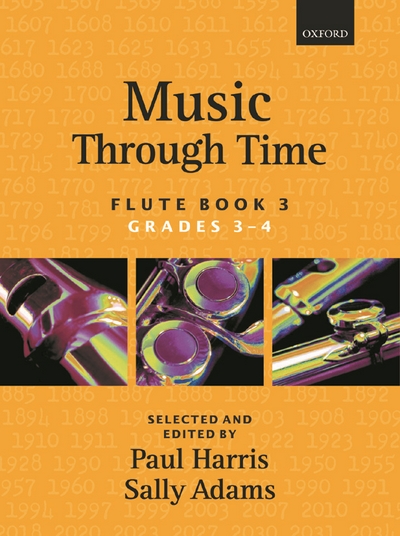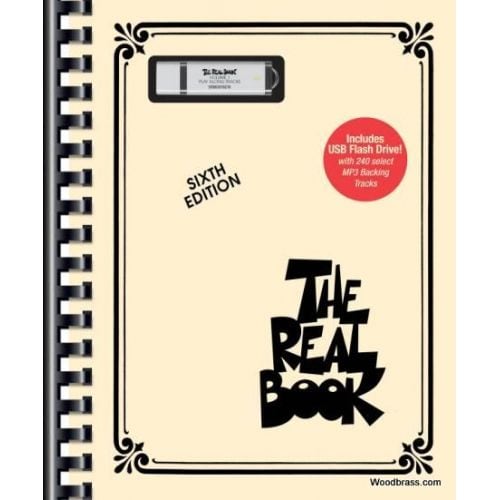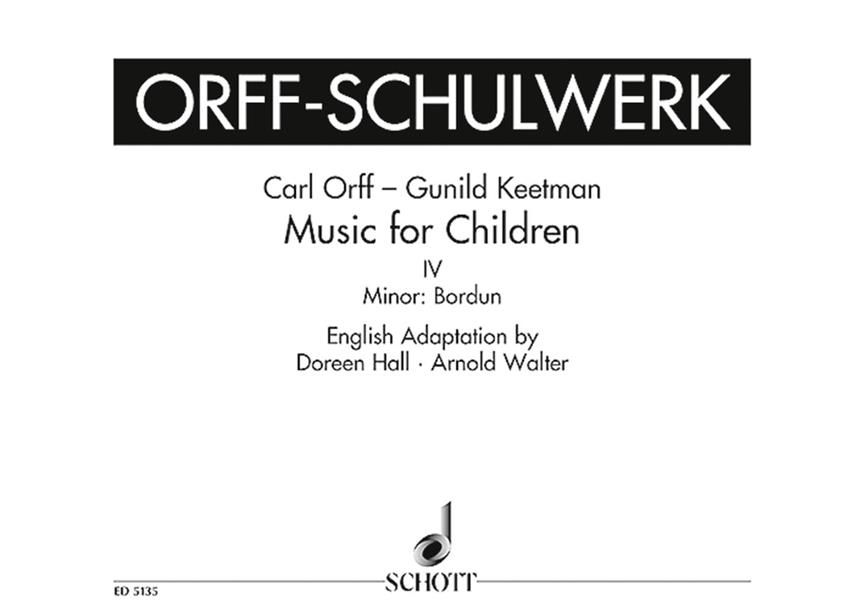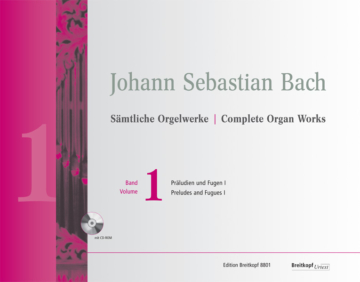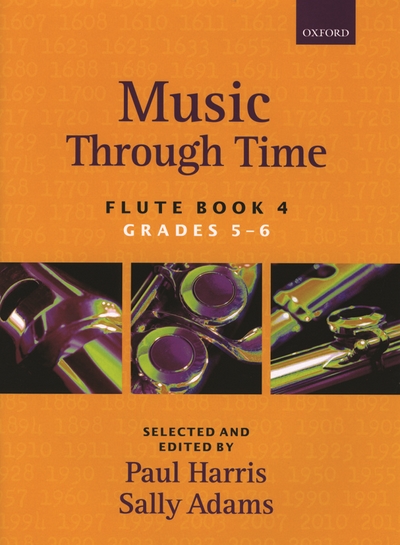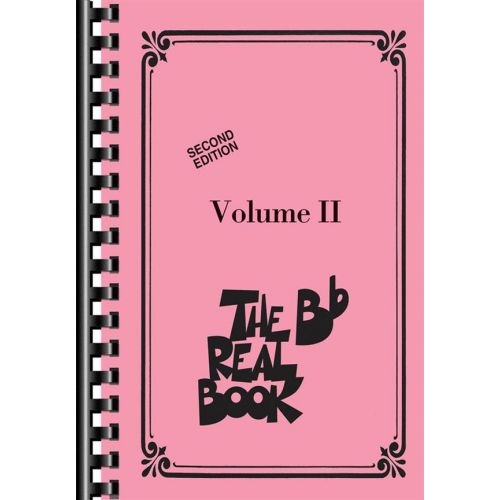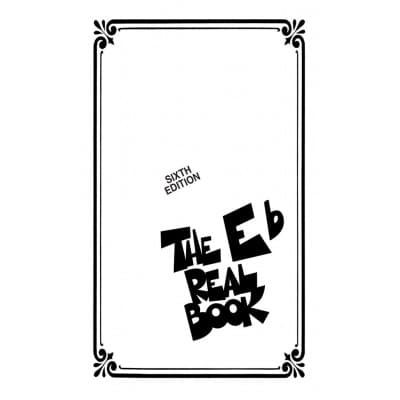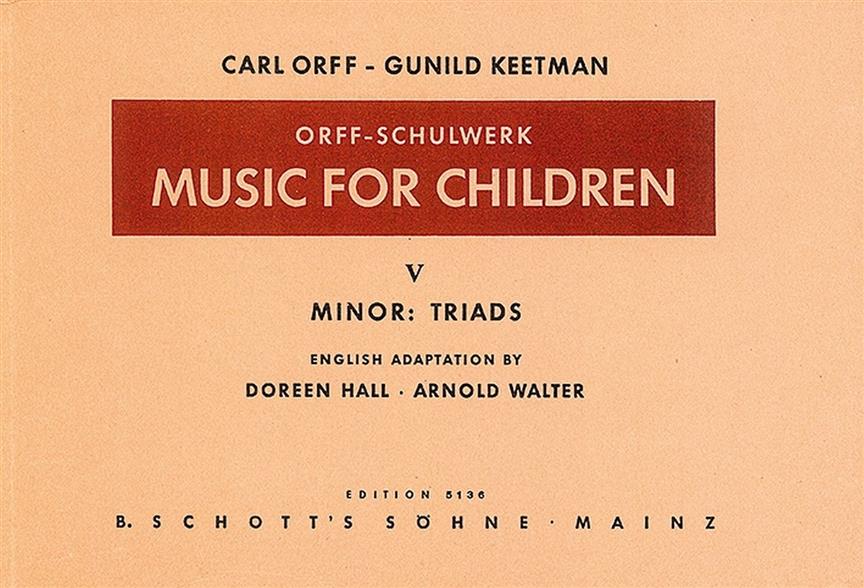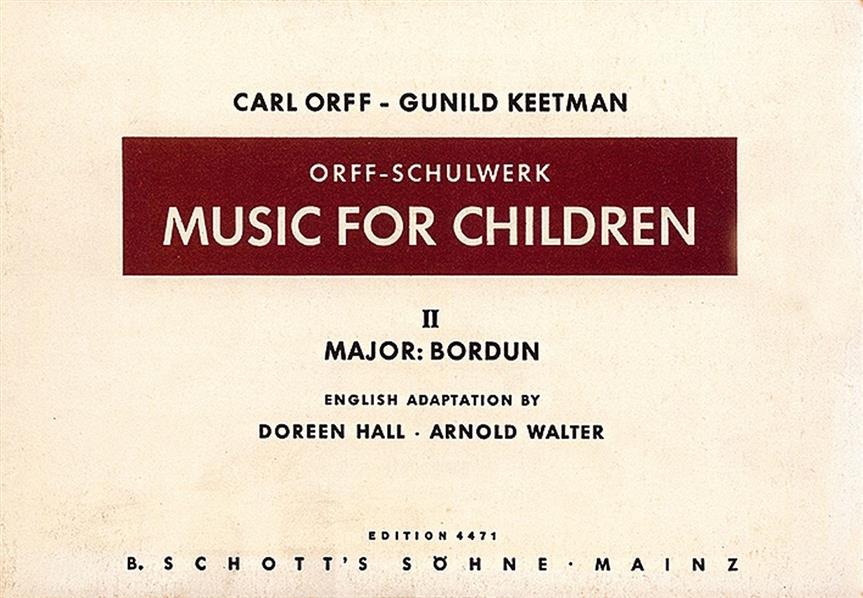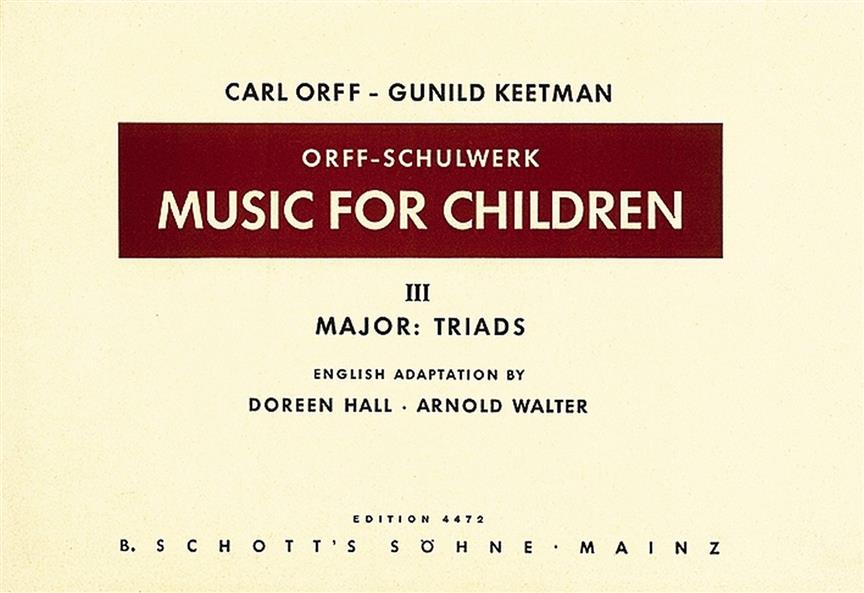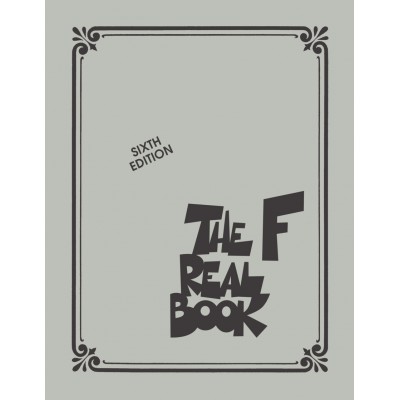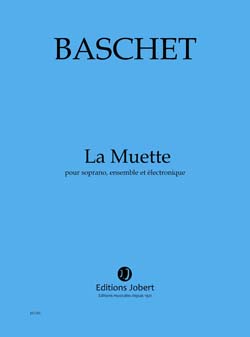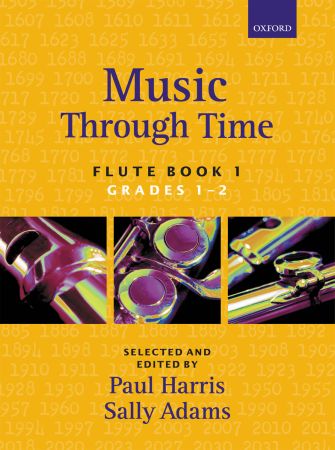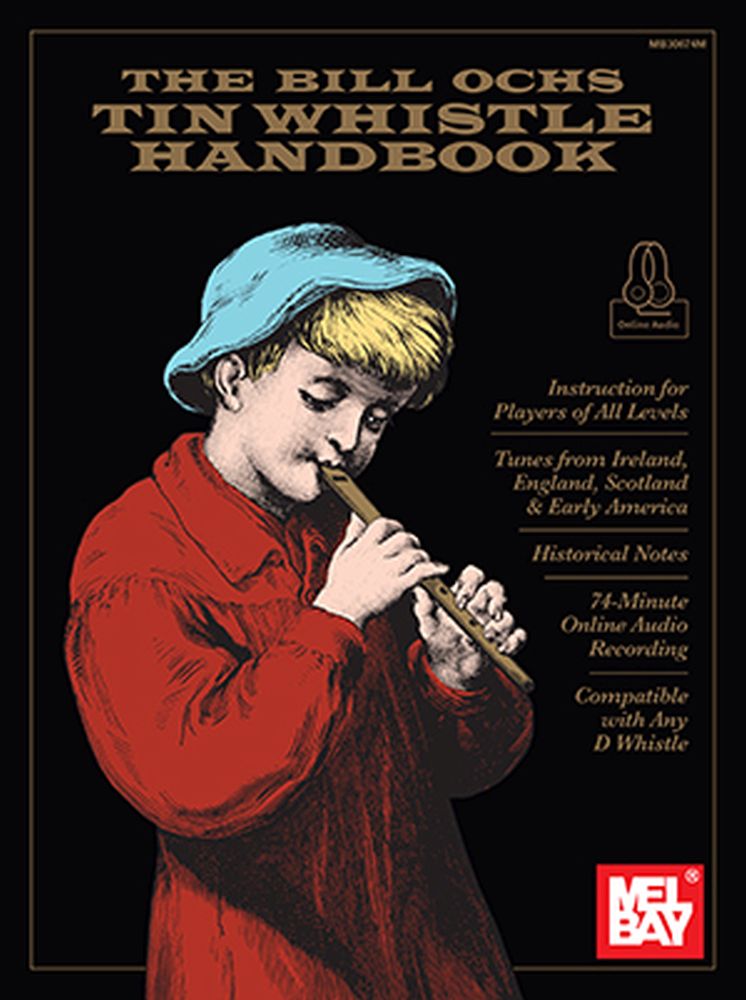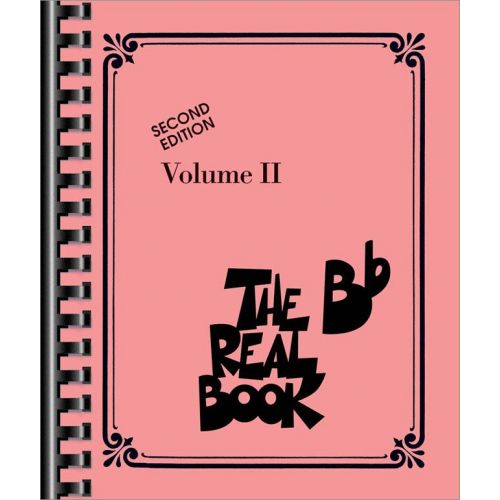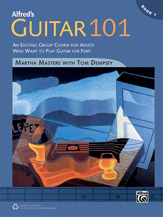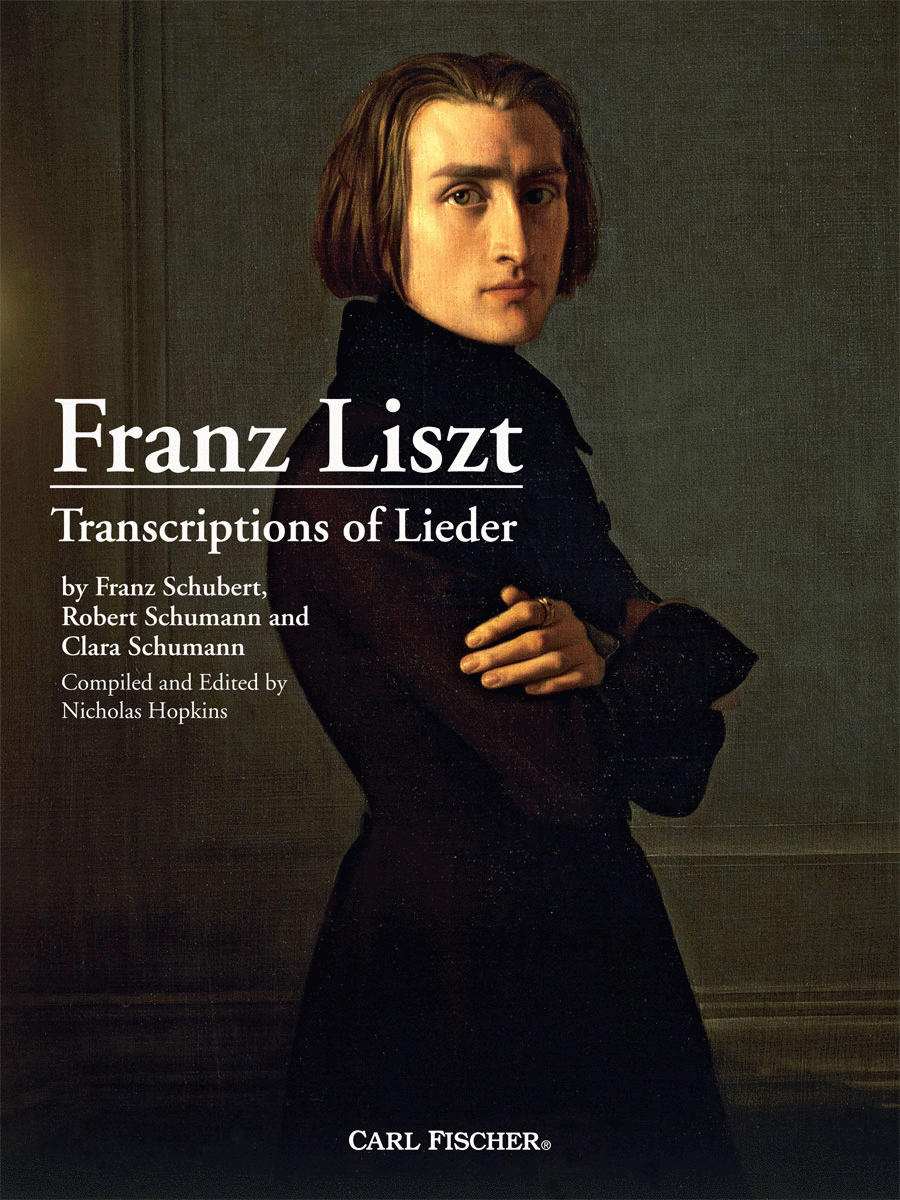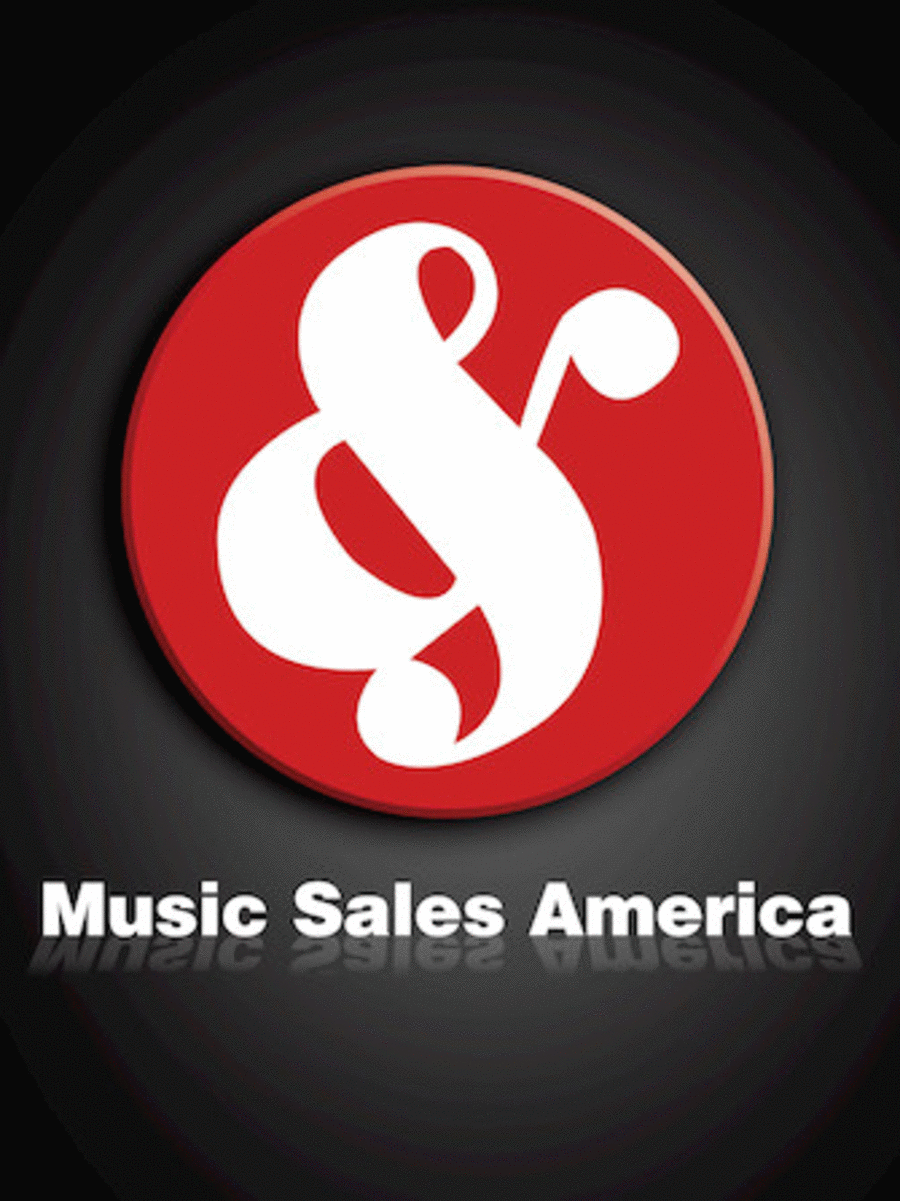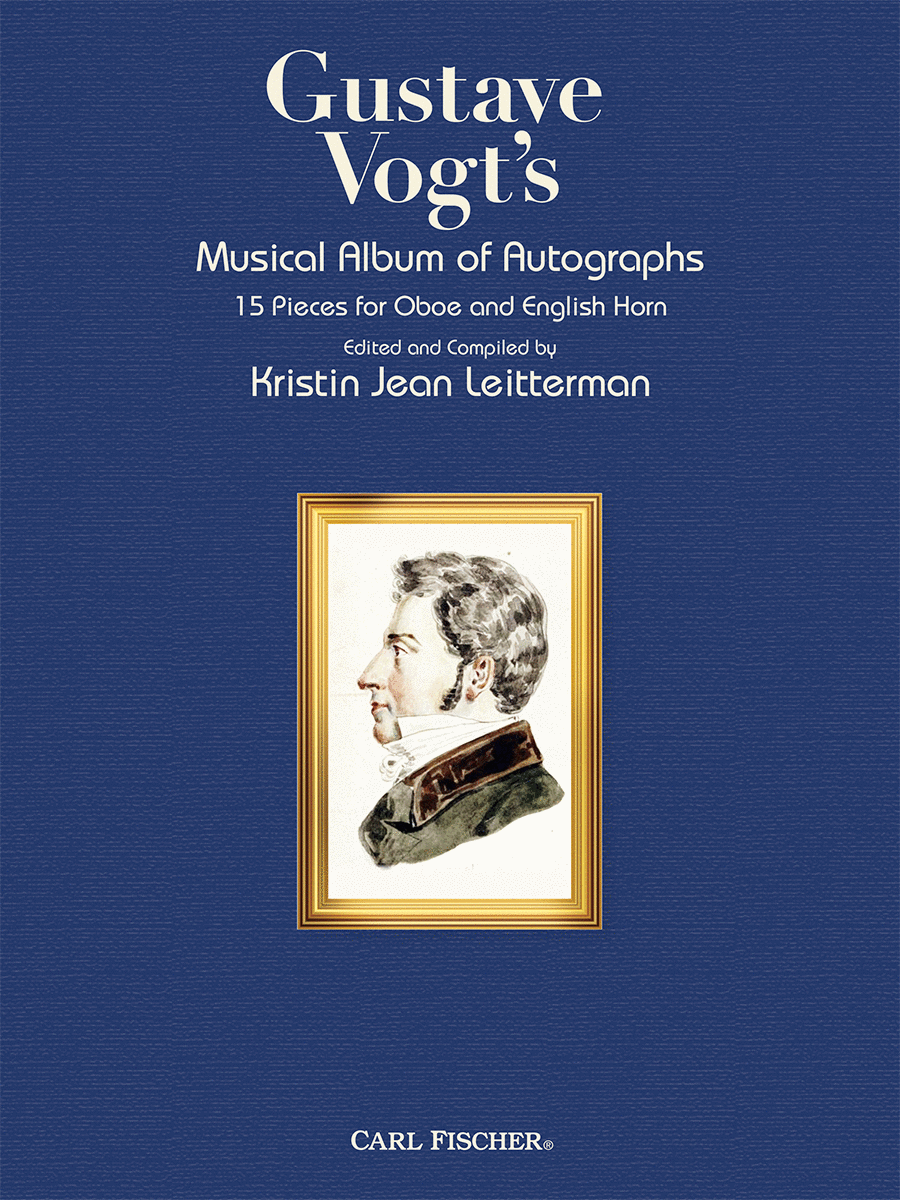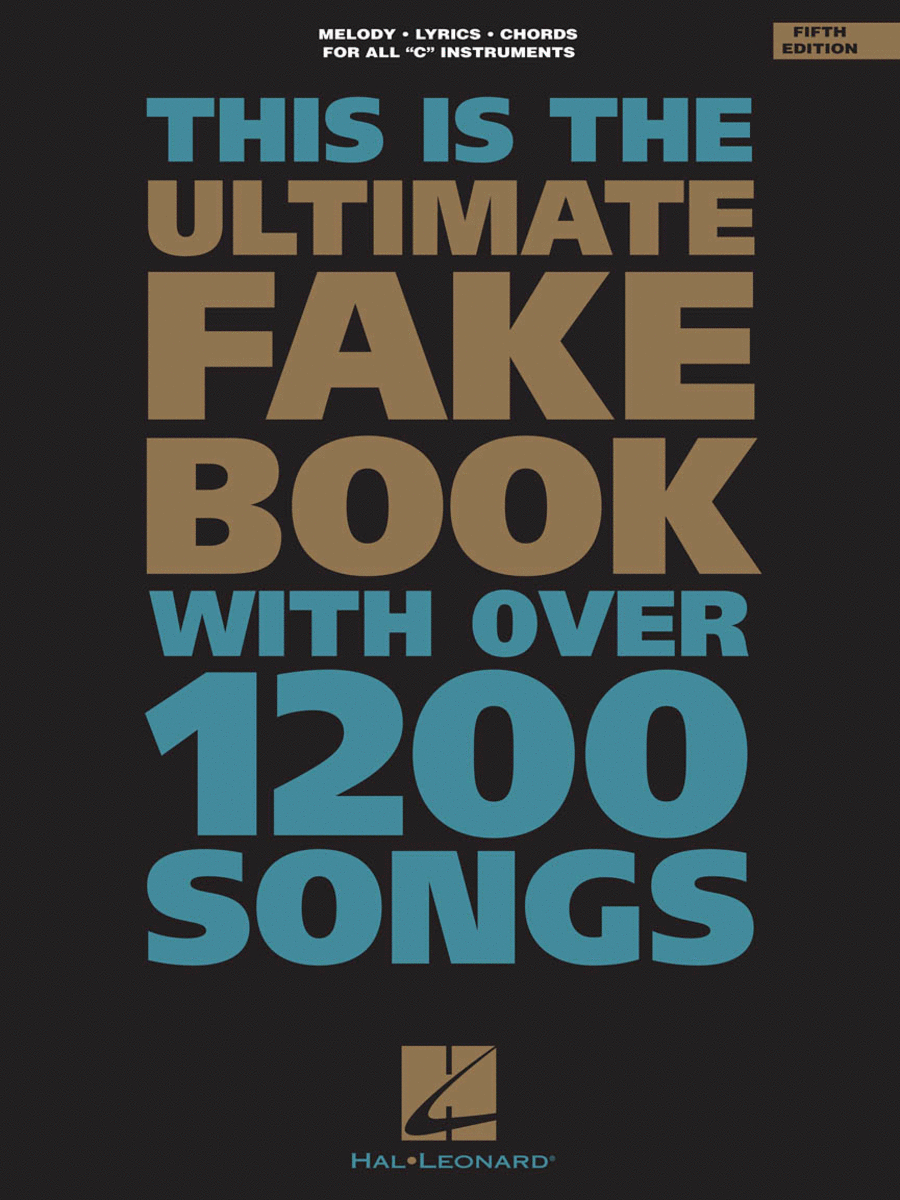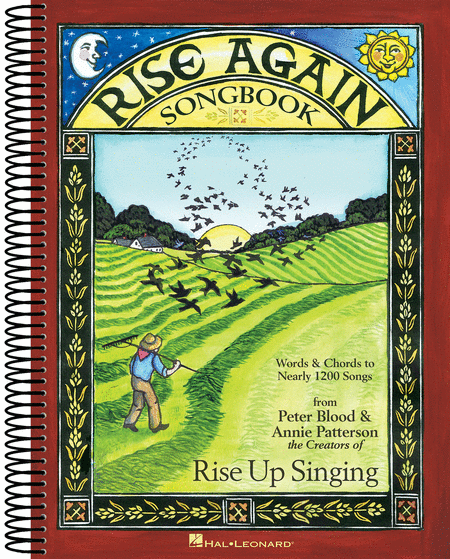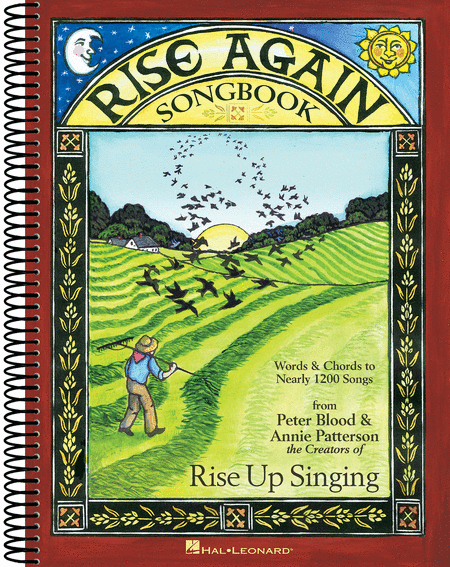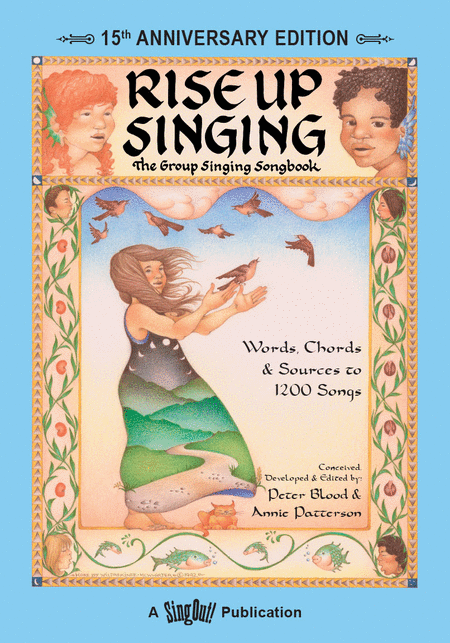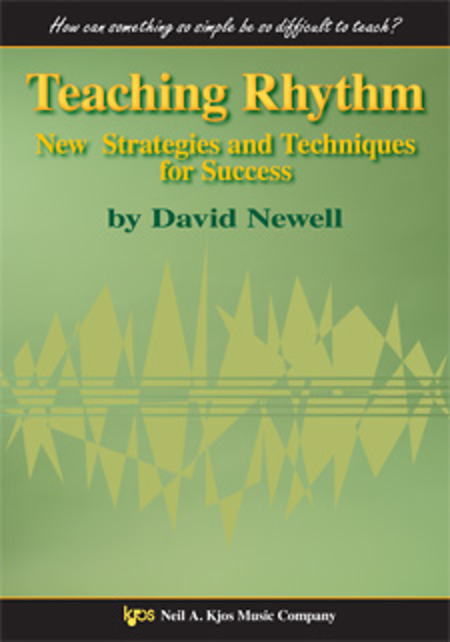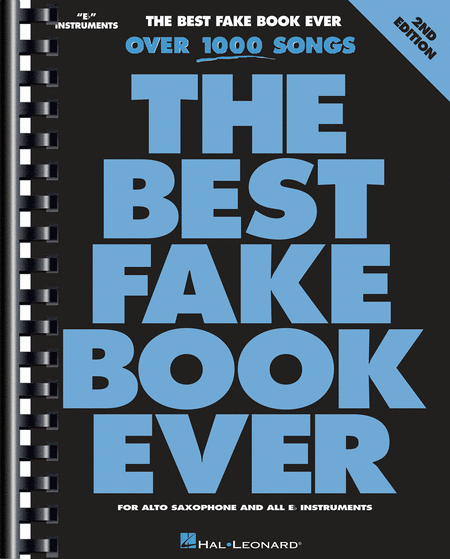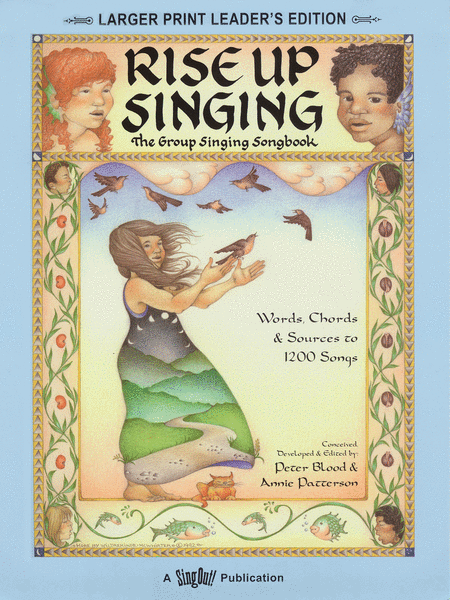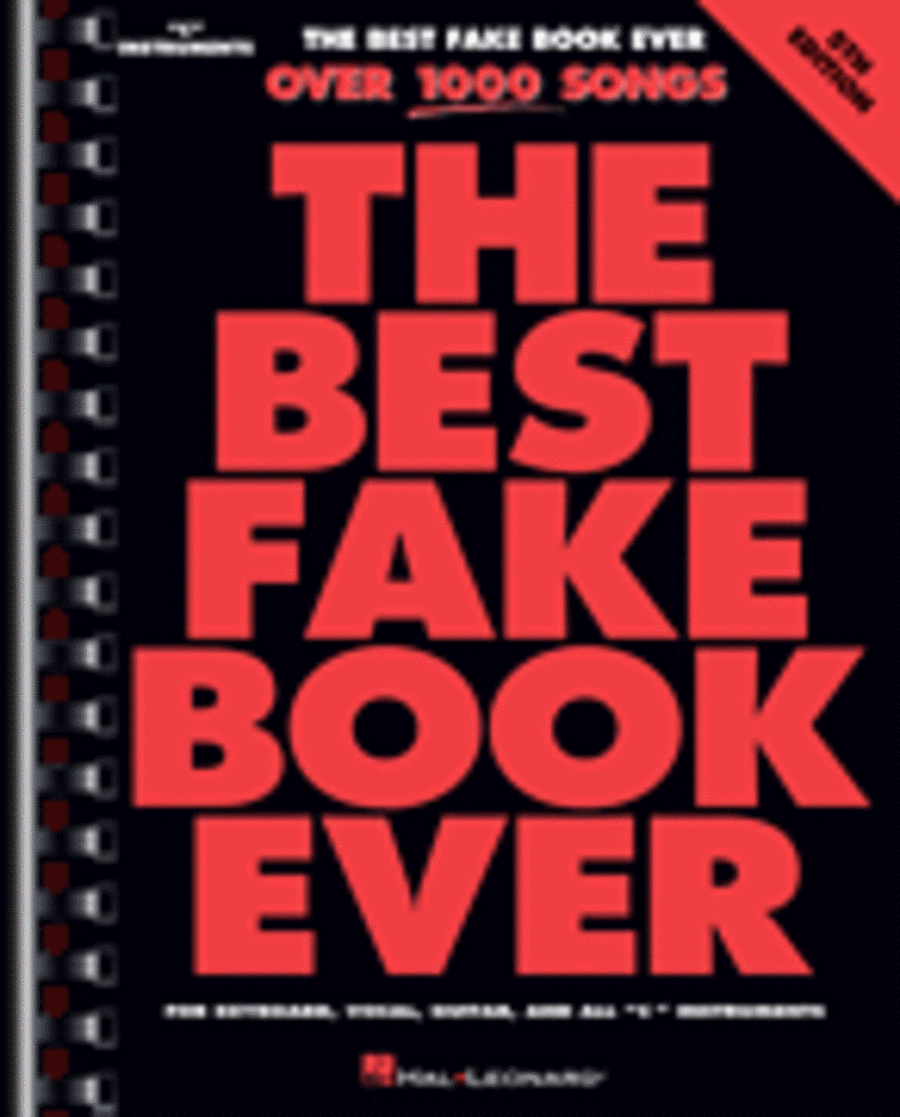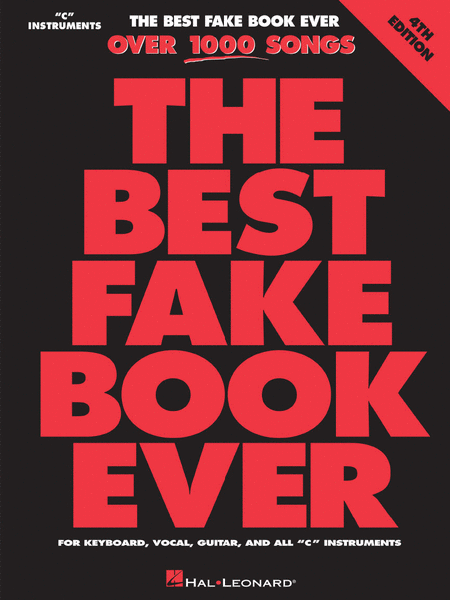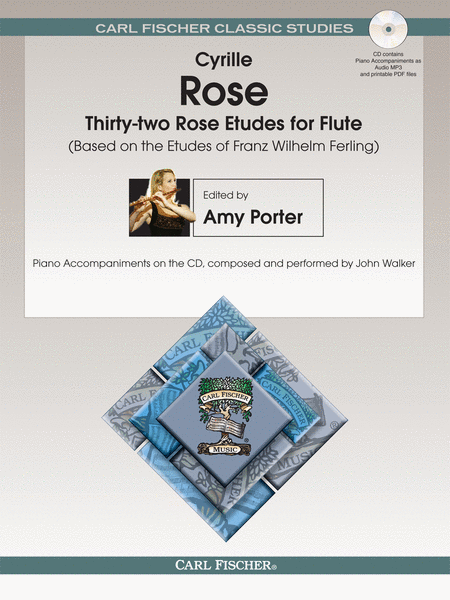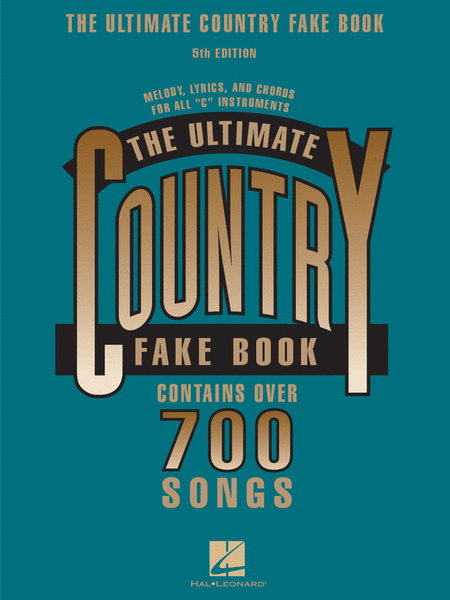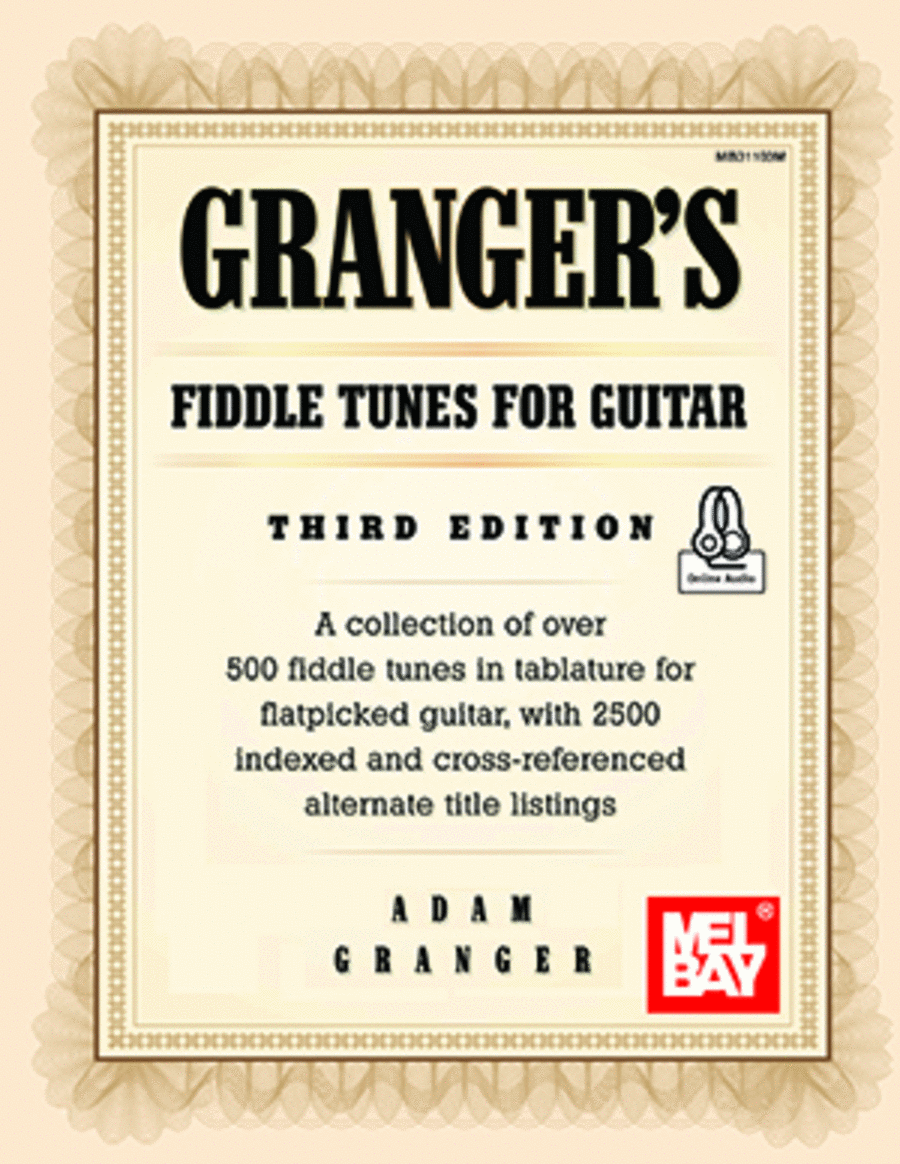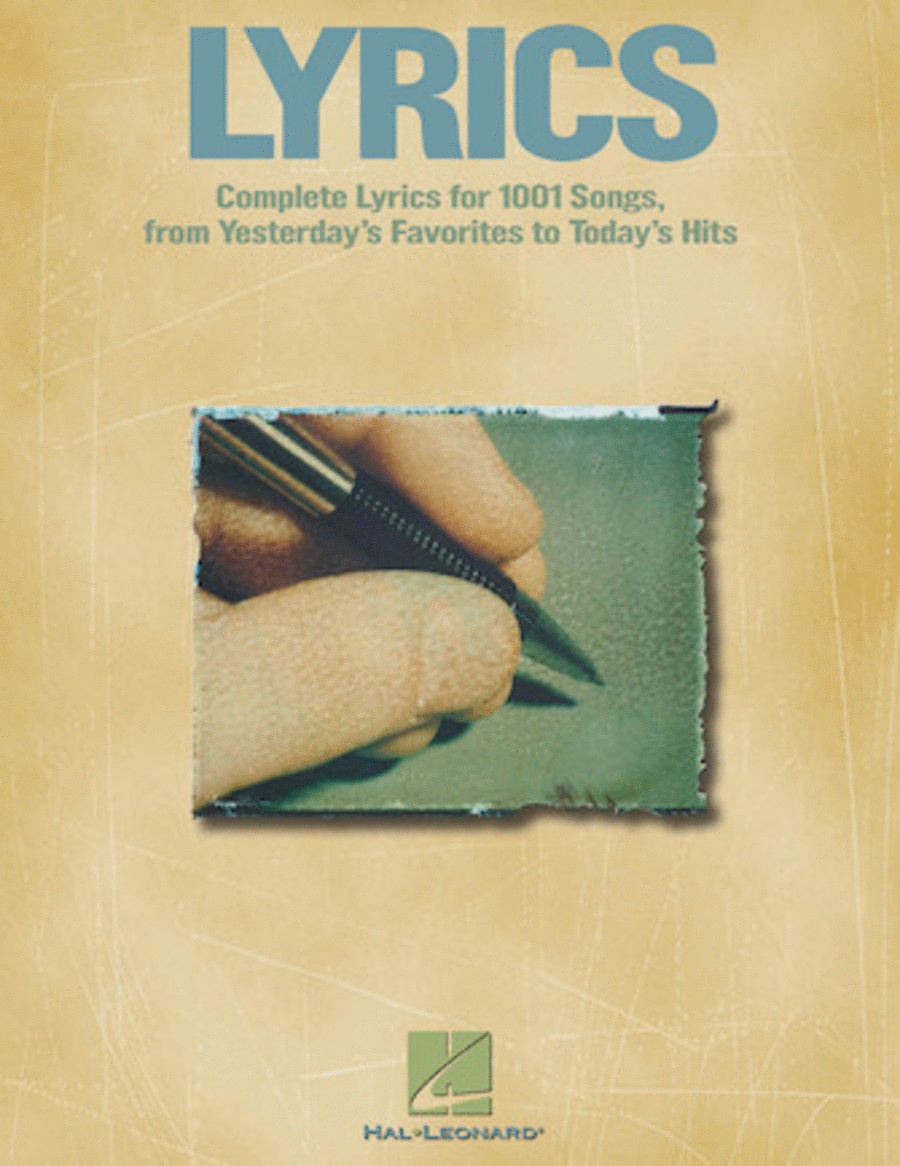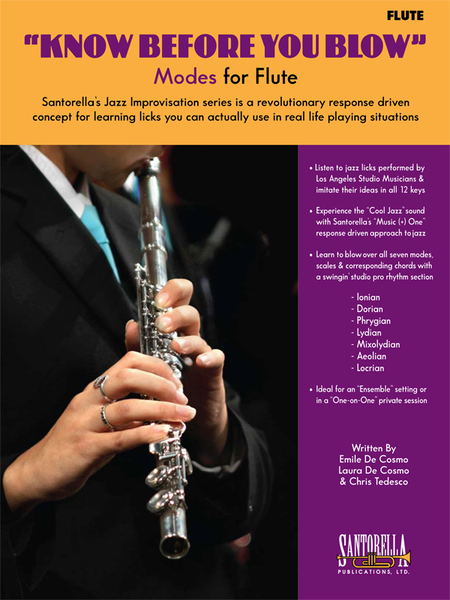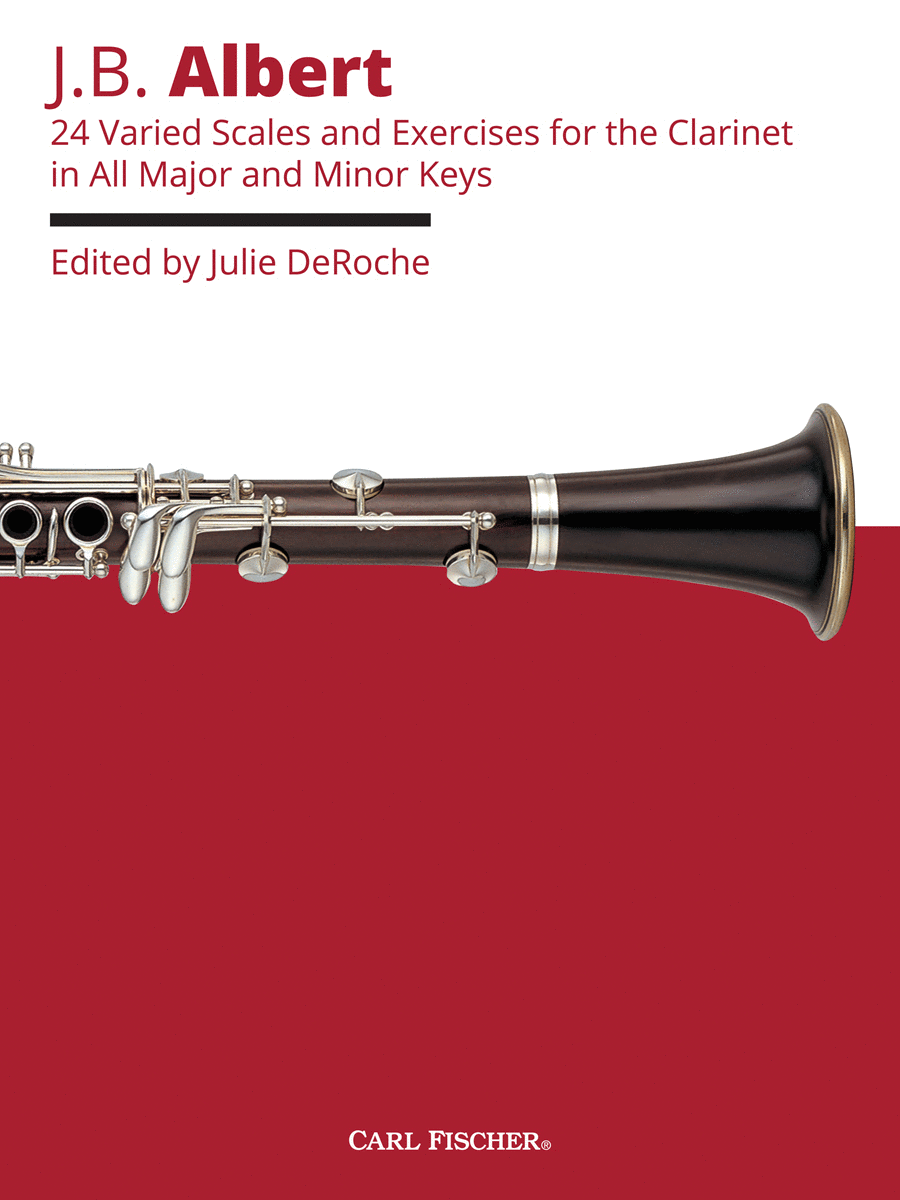|
| New Busker's
Fakebook 1001 All-Time
Hit Songs
[Sheet music] - Facile
Music Sales
The second volume of a thousand and one all-time hit songs ranging from essentia...(+)
The second volume of a thousand and one all-time hit songs ranging from essential standards to the latest pop hits - a must for all singers and musicians. / Chant Et Guitare
Délais: 2-5 jours - En Stock Fournisseur | | |
| 1001 All-Time Hit Songs
Ligne De Mélodie, (Paroles) et
Accords [Partition]
Amsco Wise Publications
Third edition of the world's biggest songbook. This is a vast bumper collection,...(+)
Third edition of the world's biggest songbook. This is a vast bumper collection, perfect for buskers, of 1001 all-time hit songs.Whatever your taste, there's guaranteed to be tonnes of songs you'll want to play, this book will last you years!Inside the spiral bound cover you will find a generous selection of hit songs, golden standards, jazz and blues numbers, classical pieces, hymns, gospel songs, stage, film and musical music! Arranged here in Melody line arrangements for Piano, Organ, Electronic Keyboards, Guitar and all C instruments, complete with lyrics and chord symbols. / Ligne Mélodique, Paroles Et Accords (Avec Grilles D'Accords)
Délais: 2-5 jours - En Stock Fournisseur | | |
| The Real Book Play Along
Vol.1 6th Edition C
Instruments (livre + Cle
Usb)
Instruments en Do [Fake Book]
Hal Leonard
The Real Book you know and love has now been updated to include backing tracks f...(+)
The Real Book you know and love has now been updated to include backing tracks for 240 songs on one convenient USB flash drive stick! The play-along CDs alone are worth $100 so this is an amazing package price! The Real Books are the best-selling jazz books of all time. Since the 1970s, musicians have trusted these volumes to get them through every gig, night after night. The problem is that the books were illegally produced and distributed without any reqard to copyright law or royalties paide to the composers who created these musical masterpieces. Hal Leonard is very proud to present the first legitimate and legal editions of these books ever produced. You won't even notice the difference, other than that all of the notorious errors have been fixed! (I Love You) For Sentimental Reasons [Best, William] [Watson, Deek] (The Old Man From) The Old Country [Adderley, Nat] [Lewis, Curtis, R.] 500 Miles High [Corea, Chick] [Potter, Neville] 502 Blues [Rowles, James] A Child Is Born [Jones, Thad] A Fine Romance [Kern, Jerome] [Fields, Dorothy] A Man And A Woman (Un Homme Et Une Femme) [Lai, Francis] [Barouh, Pierre] [Keller, Jerry] A Night In Tunisia [Gillespie, John 'Dizzy'] [Paparelli, Frank] A String Of Pearls [Grey, Jerry] A Sunday Kind Of Love [Belle, Barbara] [Prima, Louis] [Leonard, Anita] [Rhodes, Stan] African Flower (Petite Fleur Africaine) [Ellington, Duke] Afro Blue [Santamaria, Mongo] Afternoon In Paris [Lewis, John] Água De Beber (Water To Drink) [Jobim, Antonio Carlos] [Gimbel, Norman] [De Moraes, Vinicius] Airegin [Rollins, Sonny] Alfie [Bacarach, Burt] [David, Hal] Alice In Wonderland [Fain, Sammy] [Hilliard, Bob] All Blues [Davis, Miles] All By Myself [Berlin, Irving] All Of Me [Simons, Seymour] [Marks, Gerald] All Of You [Porter, Cole] All The Things You Are [Kern, Jerome] [Hammerstein II, Oscar] Alright, Okay, You Win [Watts, Mayme] Always [Berlin, Irving] Ana Maria [Shorter, Wayne] Angel Eyes [Dennis, Matt] [Brent, Earl] Anthropology [Parker, Charlie] [Gillespie, Dizzy] Apple Honey [Herman, Woody] April In Paris [Duke, Vernon] [Harburg, E. Y.] April Joy [Metheny, Pat] Arise, Her Eyes [Swallow, Steve] Armageddon [Shorter, Wayne] Au Privave [Parker, Charlie] Autumn In New York [Duke, Vernon] Autumn Leaves [Kosma, Joseph] [Mercer, Johnny] [Prevert, Jacques] Beautiful Love [Young, Victor] [King, Wayne] [Van Alstyne, Egbert] [Gillespie, Haven] Beauty And The Beast [Shorter, Wayne] Bessie's Blues [Coltrane, John] Bewitched [Rodgers, Richard] [Hart, Lorenz] Big Nick [Coltrane, Nick] Black Coffee [Webster, Paul Francis] [Burke, Sonny] Black Diamond [Sealey, Milton] Black Narcissus [Henderson, Joe] Black Nile [Shorter, Wayne] Black Orpheus [Bonfa, Luiz] Blue Bossa [Dorham, Kenny] Blue In Green [Davis, Miles] Blue Monk [Monk, Thelonious] Blue Train (Blue Trane) [Coltrane, John] Blues For Alice [Parker, Charlie] Bluesette [Thielemans, Jean] [Gimbel, Norman] Body And Soul [Green, John] [Heyman, Edward] [Sour, Robert] [Eyton, Frank] Boplicity (Be Bop Lives) [Davis, Miles] [Evans, Gil] Bright Size Life [Metheny, Pat] Broad Way Blues [Coleman, Ornette] Broadway [Byrd, Bill] [McRae, Teddy] [Woode, Henri] But Beautiful [Van Heusen, Jimmy] [Burke, Johnny] Butterfly [Hancock, Herbie] [Maupin, Bennie] Byrd Like [Hubbard, Freddie] Call Me [Hatch, Tony] Call Me Irresponsible [Van Heusen, James] [Cahn, Sammy] Can't Help Lovin' Dat Man [Kern, Jerome] [Hammerstein II, Oscar] Captain Marvel [Corea, Chick] Central Park West [Coltrane, John] Ceora [Morgan, Lee] C'est Si Bon [Betti, Henri] [Seelen, Jerry] [Hornez, Andre] Chega De Saudade (No More Blues) [Jobim, Antonio Carlos] [De Moraes, Vinicius] Chelsea Bells [Swallow, Steve] Chelsea Bridge [Strayhorn, Billy] Cherokee (Indian Love Song) [Noble, Ray] Cherry Pink And Apple Blossom White [Louiguy] [Larue, Jacques] [David, Mack] Chippie [Coleman, Ornette] Chitlins Con Carne [Burrell, Kenny] Come Sunday [Ellington, Duke] Como En Vietnam [Swallow, Steve] Con Alma [Gillespie, John 'Dizzy'] Conception [Shearing, George] Confirmation [Parker, Charlie] Contemplation [Tyner, McCoy] Coral [Jarrett, Keith] Cotton Tail [Ellington, Duke] Could It Be You [Porter, Cole] Countdown [Coltrane, John] Crescent [Coltrane, John] Crystal Silence [Corea, Chick] D Natural Blues [Montgomery, John L. (Wes)] Daahoud [Brown, Clifford] Dancing On The Ceiling [Rodgers, Richard] [Hart, Lorenz] Darn That Dream [Van Heusen, Jimmy] [DeLange, Eddie] Day Waves [Corea, Chick] [Potter, Neville] Days And Nights Waiting [Jarrett, Keith] Dear Old Stockholm [Varmeland] Dearly Beloved [Kern, Jerome] [Mercer, Johnny] Dedicated To You [Cahn, Sammy] [Chaplin, Saul] [Hyzaret] Deluge [Shorter, Wayne] Desafinado [Jobim, Antonio, Carlos] [Mendonca, Newton] Desert Air [Corea, Chick] Detour Ahead [Ellis, Herb] [Frigo, John] [Carter, Lou] Dexterity [Parker, Charlie] Dizzy Atmosphere [Gillespie, John 'Dizzy'] Django [Lewis, John] Doin' The Pig [Swallow, Steve] Dolores [Shorter, Wayne] Dolphin Dance [Hancock, Herbie] Domino Biscuit [Swallow, Steve] Donna Lee [Parker, Charlie] Don't Blame Me [McHugh, Jimmy] [Fields, Dorothy] Don't Get Around Much Anymore [Ellington, Duke] [Russell, Bob] Dream A Little Dream Of Me [Schwandt, Wilbur] [Andree, Fabian] [Kahn, Gus] Dreamsville [Mancini, Henry] [Livingston, Jay] [Evans, Ray] E.S.P. [Shorter, Wayne] Easter Parade [Berlin, Irving] Easy Living [Robin, Leo] [Rainger, Ralph] Easy To Love (You'd Be So Easy To Love) [Porter, Cole] Ecclusiastics [Mingus, Charles] Eighty One [Davis, Miles] [Carter, Ronald] El Gaucho [Shorter, Wayne] Epistrophy [Monk, Thelonious] [Clarke, Kenny] Equinox [Coltrane, John] Equipoise [Cowell, Stanley] Fall [Shorter, Wayne] Falling Grace [Swallow, Steve] Falling In Love With Love [Rodgers, Richard] [Hart, Lorenz] Fee-Fi-Fo-Fum [Shorter, Wayne] Follow Your Heart [McLaughlin, John] Footprints [Shorter, Wayne] For All We Know [Coots, Fred, J.] [Lewis, Sam M.] For Heaven's Sake [Meyer, Don] [Bretton, Elise] [Edwards, Sherman] Forest Flower [Lloyd, Charles] Four [Davis, Miles] Four On Six [Montgomery, John L. (Wes)] Freddie Freeloader [Davis, Miles] Freedom Jazz Dance [Harris, Eddie] Full House [Montgomery, John L. (Wes)] Gee Baby, Ain't I Good To You [Redman, John] [Razaf, Andy] Gemini [Heath, Jimmy] Giant Steps [Coltrane, John] Gloria's Step [Le Faro, Scott] God Bless' The Child [Herzog Jnr, Arthur] [Holiday, Billie] Golden Lady [Wonder, Stevie] Good Evening Mr. And Mrs. America [Guerin, John] Grand Central [Coltrane, John] Groovin' High [Gillespie, John 'Dizzy'] Grow Your Own [Jarrett, Keith] Guilty [Kahn, Gus] [Whiting, Richard] [Akst, Harry] Gypsy In My Soul [Boland, Clay] [Jaffe, Moe] Half Nelson [Davis, Miles] Have You Met Miss Jones' [Rodgers, Richard] [Hart, Lorenz] Heaven [Ellington, Duke] Heebie Jeebies [Atkins, Boyd] Hello, Young Lovers [Rodgers, Richard] [Hammerstein II, Oscar] Here's That Rainy Day [Van Heusen, Jimmy] [Burke, Johnny] Hot Toddy [Hendler, Herb] [Flanagan, Ralph] House Of Jade [Shorter, Wayne] How High The Moon [Lewis, Morgan] [Hamilton, Nancy] How Insensitive (Insensatez) [Jobim, Antonio, Carlos] [De Moraes, Vinicius] [Gimbel, Norman] How My Heart Sings [Zindars, Earl] [Zindars, Anne] Hullo Bolinas [Swallow, Steve] I Can't Get Started With You [Duke, Vernon] [Gershwin, Ira] I Can't Give You Anything But Love [McHugh, Jimmy] [Fields, Dorothy] I Could Write A Book [Rodgers, Richard] [Hart, Lorenz] I Got It Bad And That Ain't Good [Ellington, Duke] [Webster, Paul Francis] I Let A Song Go Out Of My Heart [Ellington, Duke] [Nemo, Henry] [Redmond, John] [Mills, Irving] I Love Paris [Porter, Cole] I Love You [Porter, Cole] I Mean You [Monk, Thelonious] [Hawkins, Coleman] I Remember Clifford [Golson, Benny] I Should Care [Cahn, Sammy] [Stordahl, Axel] [Weston, Paul] I Wish I Knew How It Would Feel To Be Free [Taylor, Billy] Icarus [Twoner, Ralph N.] If You Never Come To Me (Inutil Paisagem) [Jobim, Antonio Carlos] [De Oliveira, Aloysio] [Gilbert, Ray] I'll Never Smile Again [Lowe, Ruth] I'll Remember April [Johnston, Pat] [Raye, Don] [De Paul, Gene] I'm All Smiles [Leonard, Michael] [Martin, Herbert] I'm Beginning To See The Light [George, Dan] [Hodges, Johnny] [Ellington, Duke] [James, Harry] I'm Your Pal [Swallow, Steve] Impressions [Coltrane, John] In A Mellow Tone [Ellington, Duke] In A Sentimental Mood [Ellington, Duke] In The Mood [Garland, Joe] In The Wee Small Hours Of The Morning [Mann, David] [Hilliard, Bob] In Your Quiet Place [Jarrett, Keith] Indian Lady [Ellis, Don] Inner Urge [Henderson, Joe] Interplay [Evans, Bill] Invitation [Kaper, Bronislam] [Webster, Paul Francis] Iris [Shorter, Wayne] Is You Is, Or Is You Ain't (Ma' Baby) Isn't It Romantic' [Rodgers, Richard] [Hart, Lorenz] Isotope [Henderson, Joe] Israel [Carisi, John] It Don't Mean A Thing (If It Ain't Got That Swing) [Ellington, Duke] [Mills, Irving] It's Easy To Remember [Rodgers, Richard] [Hart, Lorenz] Jelly Roll [Mingus, Charles] Jordu [Jordan, Duke] Journey To Recife [Evans, Richard] [Gimbel, Norman] Joy Spring [Brown, Clifford] Juju [Shorter, Wayne] Jump Monk [Mingus, Charles] June In January [Robin, Leo] [Rainger, Ralph] Just One More Chance [Johnston, Arthur] [Coslow, Sam] Kelo [Johnson, J. J.] Lady Bird [Dameron, Tadd] Lady Sings The Blues [Nichols, Herbert] [Holiday, Billie] Lament [Johnson, J.J] Las Vegas Tango [Evans, Gil] Lazy Bird [Coltrane, John] Lazy River [Carmichael, Hoagy] Like Someone In Love [Van Heusen, Jimmy] [Burke, Johnny] Limehouse Blues [Braham, Philip] [Furber, Douglas] Lines And Spaces [Lovano, Joe] Litha [Corea, Chick] Little Boat (O Barquinho) [Menescal, Roberto] [Boscoli, Ronaldo] [Kaye, Buddy] Little Waltz [Carter, Ron] Long Ago (And Far Away) [Kern, Jerome] [Gershwin, Ira] Lonnie's Lament [Coltrane, John] Look To The Sky [Jobim, Antonio Carlos] Love Is The Sweetest Thing [Noble, Ray] Lucky Southern [Jarrett, Keith] Lullaby Of Birdland [Shearing, George] [Weiss, George David] Lush Life [Strayhorn, Billy] Mahjong [Shorter, Wayne] Maiden Voyage [Hancock, Herbie] Man In The Green Shirt [Zawinul, Joe] Meditation (Meditacao) [Jobim, Antonio Carlos] [Mendonca, Newton] [Gimbel, Norman] Memories Of Tomorrow [Jarrett, Keith] Michelle [Lennon, John] [McCartney, Paul] Midnight Mood [Zawinul, Josef] Midwestern Nights Dream [Metheny, Pat] Milano [Lewis, John] Minority [Gryce, Gigi] Miss Ann [Dolphy, Eric] Missouri Uncompromised [Metheny, Pat] Misty [Garner, Erroll] Miyako [Shorter, Wayne] Moment's Notice [Coltrane, John] Mood Indigo [Ellington, Duke] [Mills, Irving] [Bigard, Albany] Moonchild [Jarrett, Keith] Mr. P.C. [Coltrane, John] My Buddy [Donaldson, Walter] [Kahn, Gus] My Favorite Things [Rodgers, Richard] [Hammerstein II, Oscar] My Foolish Heart [Young, Victor] [Washington, Ned] My Funny Valentine [Rodgers, Richard] [Hart, Lorenz] My One And Only Love [Wood, Guy] [Mellin, Robert] My Romance [Rodgers, Richard] [Hart, Lorenz] My Shining Hour [Arlen, Harold] [Mercer, Johnny] My Ship [Weill, Kurt] [Gershwin, Ira] My Way [Revaux, Jacques] [Francois, Claude] [Anka, Paul] [Thibaud, Gilles] Mysterious Traveller [Shorter, Wayne] Naima (Niema) [Coltrane, John] Nardis [Davis, Miles] Nefertiti [Shorter, Wayne] Never Will I Marry [Loesser, Frank] Nica's Dream [Silver, Horace] Night Dreamer [Shorter, Wayne] Night Train [Forrest, Jimmy] [Washington, Oscar] [Simpkins, Lewis C.] Nobody Knows You When You're Down And Out [Cox, Jimmie] Nostalgia In Times Square [Mingus, Charles] Nuages [Reinhardt, Django] [Larue, Jacques] Oleo [Rollins, Sonny] Oliloqui Valley [Hancock, Herbie] Once I Loved (Amor Em Paz) (Love In Peace) [Jobim, Antonio Carlos] [De Morales, Vinicius] [Gilbert, Ray] Once In Love With Amy [Loesser, Frank] One Finger Snap [Hancock, Herbie] One Note Samba (Samba De Uma Nota So) [Jobim, Antonio Carlos] [Mendonca, Newton] Only Trust Your Heart [Carter, Benny] [Cahn, Sammy] Orbits [Shorter, Wayne] Ornithology [Parker, Charlie] [Harris, Bennie] Out Of Nowhere [Green, Johnny] [Heyman, Edward] P.S. I Love You [Jenkins, Gordon] [Mercer, Johnny] Paper Doll [Black, Johnny S.] Passion Dance [Tyner, Mccoy] Passion Flower [Strayhorn, Billy] [Raskin, Milton] Peace [Silver, Horace] Peggy's Blue Skylight [Mingus, Charles] Pent Up House [Rollins, Sonny] Penthouse Serenade [Jason, Will] [Burton, Val] Peri's Scope [Evans, Bill] Pfrancing (No Blues) [Davis, Miles] Pinocchio [Shorter, Wayne] Pithecanthropus Erectus [Mingus, Charles] Poem For #15 (The Saga Of Harrison Crabfeathers) [Kuhn, Steve] Portsmouth Figurations [Swallow, Steve] Prelude To A Kiss [Ellington, Duke] [Gordon, Irving] [Mills, Irving] Prince Of Darkness [Shorter, Wayne] Pussy Cat Dues [Mingus, Charles] Quiet Nights Of Quiet Stars (Corcovado) [Jobim, Antonio Carlos] [Lees, Gene] Quiet Now [Zeitlin, Denny] Recorda Me [Henderson, Joe] Red Clay [Hubbard, Freddie] Reflections [Monk, Thelonious] Reincarnation Of A Lovebird [Mingus, Charles] Ring Dem Bells [Ellington, Duke] [Mills, Irving] Road Song [Montgomery, John L. (Wes)] 'Round Midnight [Monk, Thelonious] [Williams, Cootie] [Hanighen, Bernie] Ruby, My Dear [Monk, Thelonious] Satin Doll [Ellington, Duke] Scotch And Soda [Guard, Dave] Scrapple From The Apple [Parker, Charlie] Sea Journey [Corea, Chick] [Potter, Neville] Seven Come Eleven [Goodman, Benny] [Christian, Charlie] Seven Steps To Heaven [Davis, Miles] [Feldman, Victor] Sidewinder [Morgan, Lee] Silver Hollow [DeJohnette, Jack] Sirabhorn [Metheny, Pat] Skating In Central Park [Lewis, John] So Nice (Summer Samba) [Valle, Marcos] [Valle, Paulo Sergio] [Gimbel, Norman] So What [Davis, Miles] Solar [Davis, Miles] Solitude [Ellington, Duke] [De Lange, Eddie] [Mills, Irving] Some Day My Prince Will Come [Churchill, Frank] [Morel, Larry] Some Other Spring [Herzog Jnr, Arthur] [Kitchings, Irene] Some Skunk Funk [Brecker, Randy] Somebody Loves Me [Gershwin, George] [DeSylva, B. G.][MacDonald, Ballard] [Ranaud, Emelia] Sometime Ago [Mihanovich, Sergio] Song For My Father [Silver, Horace] Sophisticated Lady [Ellington, Duke] [Mills, Irving] [Parish, Micthell] Speak No Evil [Shorter, Wayne] Standing On The Corner [Loesser, Frank] Stella By Starlight [Young, Victor] [Washington, Ned] Steps [Corea, Chick] Stolen Moments [Nelson, Oliver] Stompin' At The Savoy [Goodman, Benny] [Sampson, Edgar] [Webb, Chick] Straight No Chaser [Monk, Thelonious] Stuff [Davis, Miles] Sugar [Turrentine, Stanley] Swedish Pastry [Kessel, Barney] Sweet Georgia Bright [Lloyd, Charles] Sweet Henry [Swallow, Steve] [Gregg, Jack] Take Five [Desmond, Paul] Take The 'A' Train [Strayhorn, Billy] Tame Thy Pen [Niles, Richard] Tell Me A Bedtime Story [Hancock, Herbie] Thanks For The Memory [Robin, Leo] [Rainger, Ralph] That's Amoré (That's Love) [Warren, Harry] [Brooks, Jack] The Blue Room [Rodgers, Richard] [Hart, Lorenz] The Girl From Ipanema (Garôta De Ipanema) [Jobim, Antonio Carlos] [Gimbel, Norman] [De Moraes, Vinicius] The Green Mountains [Swallow, Steve] The Inch Worm [Loesser, Frank] The Intrepid Fox [Hubbard, Freddie] The Magician In You [Jarrett, Keith] The Most Beautiful Girl In The World [Rodgers, Richard] [Hart, Lorenz] The Night Has A Thousand Eyes [Brainin, Jerry] [Bernier, Buddy] The Song Is You [Kern, Jerome] [Hammerstein II, Oscar] The Sorcerer [Hancock, Herbie] The Sphinx [Coleman, Ornette] The Star-Crossed Lovers [Ellington, Duke] [Strayhorn, Billy] The Surrey With The Fringe On Top [Rodgers, Richard] [Hammerstein II, Oscar] The World Is Waiting For The Sunrise [Seitz, Ernest] [Lockhart, Eugene] There Is No Greater Love [Jones, Isham] [Symes, Marty] There Will Never Be Another You [Warren, Harry] [Gordon, Mack] There'll Be Some Changes Made [Overstreet, Benton] [Higgins, Billy] They Didn't Believe Me [Kern, Jerome] [Reynolds, Herbert] Think On Me [Cables, George] Thou Swell [Rodgers, Richard] [Hart, Lorenz] Three Flowers [Tyner, McCoy] Time Remembered [Evans, Bill] Tones For Joan's Bones [Corea, Chick] Topsy [Battle, Edgar] [[Durham, Eddie] Tour De Force [Gillespie, John 'Dizzy'] Triste [Jobim, Antonio Carlos] Tune Up [Davis, Miles] Turn Out The Stars [Evans, Bill] [Lees, Gene] Twisted Blues [Montgomery, John, L. (Wes)] Unchain My Heart [Sharp, Bobby] [Powell, Teddy] Uniquity Road [Metheny, Pat] Unity Village [Metheny, Pat] Up Jumped Spring [Hubbard, Freddie] Upper Manhattan Medical Group (UMMG) [Strayhorn, Billy] Valse Hot [Rollins, Sonny] Very Early [Evans, Bill] Virgo [Shorter, Wayne] Wait Till You See Her [Rodgers, Richard] [Hart, Lorenz] Waltz For Debby [Evans, Bill] [Lees, Gene] Wave [Jobim, Antonio Carlos] We'll Be Together Again [Fischer, Carl] [Lane, Frankie] Well You Needn't (It's Over Now) [Monk, Thelonious] [Perro, Mike] West Coast Blues [Montgomery, John L. (Wes)] What Am I Here For' [Ellington, Duke] What Was [Corea, Chick] When I Fall In Love [Young, Victor] [Heyman, Edward] When Sunny Gets Blue [Fischer, Marvin] [Segal, Jack] When You Wish Upon A Star [Harline, Leigh] [Washington, Ned] Whispering [Coburn, Richard] [Schonberger, John] [Rose, Vincent] Wild Flower [Shorter, Wayne] Windows [Corea, Chick] Witch Hunt [Shorter, Wayne] Wives And Lovers (Hey, Little Girl) [Bacharach, Burt] [David, Hal] Woodchopper's Ball [Bishop, Joe] [Herman, Woody] Woodyn' You [Gillespie, Dizzy] Yes And No [Shorter, Wayne] Yesterday [Lennon, John] [McCartney, Paul] Yesterdays [Kern, Jerome] [Harbach, Otto] You Are The Sunshine Of My Life [Wonder, Stevie] You Are Too Beautiful [Rodgers, Richard] [Hart, Lorenz] You Brought A New Kind Of Love To Me [Fain, Sammy] [Kahal, Irving] [Norman, Pierre] You Don't Know What Love Is [Raye, Don] [DePaul, Gene] You Took Advantage Of Me [Rodgers, Richard] [Hart, Lorenz] Young At Heart [Richards, Johnny] [Leigh, Carolyn] You're Nobody 'Til Somebody Loves You [Morgan, Russ] [Stock, Larry] [Cavanaugh, James]
Délais: Sur commande | | |
| Music for Children Vol. 4
(ORFF CARL / KEETMAN
GUNILD)
Voix, Flûte à Bec et
Percussion [Conducteur]
Schott
Minor: Bordun. Par ORFF CARL / KEETMAN GUNILD. Carl Orff devoted much of his lif...(+)
Minor: Bordun. Par ORFF CARL / KEETMAN GUNILD. Carl Orff devoted much of his life to the development of a philosophy of Music for Children, based on his belief that music is the natural outcome of speech, rhythm and movement. His ideas and pioneering work have had a major influence on music and dance education throughout the world and today that work continues under the guidance of leading teachers and educators in many countries.
The five basic German volumes of 'Music for Children' by Carl Orff and Gunild Keetman were published between 1950 and 1954. Edition have since been published in Bolivia, Brazil, Canada, Czechoslovakia, Denmark, Estonia, France, Ghana, Great Britain (including a special Welsh edition), Greece, Italy, Japan, Korea, Latin-America, the Netherlands, Portugal, Spain, Sweden, Taiwan and the USA.
In 1952 the first edition in translation appeared, an English language adaptation by Doreen Hall and Arnold Walter for their Canadian and American students.
A few years later, Margaret Murray independently developed a version (1957-1966), essentially to fulfil the needs of United Kingdom teachers.
Inevitably the considerable growth of Orff-Schulwerk in the United States led to the publication of the American Edition (1977) to satisfy the requirements of a different educational system and national heritage.
Orff-Schulwerk: Music for Children has proved itself to be a stimulating source of material for music teaching. Carl Orff's fundamental educational ideas have revitalized music education in nursery schools, at all levels of primary and secondary education and in special music schools, based on the concepts that: - music, dance and language are inter-related and animated through rhythm. - when children discover, invent, improvise and compose, their experience of music is intensified. These creative activities are complementary to those of interpreting and listening to music. - all who take part are encouraged to contribute, not only vocally but also instrumentally. - the Orff approach to music education is many sided; it is concerned with practical music-making, it provides fundamental experiences and it lays the foundation for a comprehensive musical training. - movement games and activities for body awareness in space, time and flow, lead to movement improvisation and dance forms. - music and dance have been notated in many different ways in history. Various ways of writing down sounds and music, as well as playing from and interpreting different kinds of sources are being explored.
Today, countless teachers and institutions are using these ideas. More and more teachers look for ways of invovling their students in active music making. In particular, they seek to challenge their pupils' creativity by the use of music, dance and speech - as media of human expression - as a foundation of all education.
A prerequisite for work in Orff-Schulwerk is the artistic and pedagogical training of teachers. The Orff Institute was founded in 1961 as a Department of the 'Mozarteum', in Salzburg, Austria. Training offered includes a four-year diploma course, a two-year post-graduate course, and a one-year-course in English.
At the opening of the Orff Institute in Salzburg in 1963, Carl Orff ended his speech with a quotation from Schiller: 'I have done my part, now do yours.' That challenge has been taken up by teachers worldwide.
Hall/Walter Edition
Based on Volumes 1, 2 and 4 of the original German Edition 'musik für Kinder', english adaption with additional material by Doreen Hall and Arnold Walter./ Recueil / Voix, Flûte à Bec et Percussion
Délais: 2-5 jours - En Stock Fournisseur | | |
| Sämtliche Orgelwerke
Band 8 (BACH JOHANN
SEBASTIAN)
Orgue [Partition + CD]
Breitkopf & Härtel
Orgelchoräle Der Leipziger Handschrift. Par BACH JOHANN SEBASTIAN. Editorial Bo...(+)
Orgelchoräle Der Leipziger Handschrift. Par BACH JOHANN SEBASTIAN. Editorial Board: Werner Breig/ Pieter Dirksen/ Reinmar Emans
music text faithful to the sources and reflecting the current status of Bach research
developed for musical practice through the cooperation of scholars and performers
contains all of Bach's keyboard works that require an independent pedal manual
contains all authentic early versions and fragmentarily transmitted or dubious works that can be attributed to Bach with a fair amount of certainty
features comprehensive introductions, extensive source descriptions and text-critical notes
features supplementary material illustrated synoptically on CD-ROM (in printable quality)
brochure, in large format (32 x 25 cm) and compact music engraving, clear, easy to read, with convenient page turns
'The Breitkopf edition is obviously preferable if you're buying new copies. The series so far has been most impressive.' (Clifford Bartlett, Early Music Review)
Subscription Conditions
A subscription is only possible for the complete collection. The subscription price of the volumes is 20% lower than the final sales price. A subscription can begin at any time.
The subscription obliges the subscriber to purchase the entire collection.
The New Edition of Bach's Complete Organ Works
With repertoire works, musicians often have the choice between editions conceived for practical music-making and others that are more scholarly in concept. This also applies to the organ works of Johann Sebastian Bach, which are available today in various editions. Among them is that of Heinz Lohmann, which Breitkopf and Härtel began publishing in 1967 and whose concept strove for an amalgamation of practice and Urtext.
Current Urtext status, historically informed, edited with performers in mind:
More than 40 years later, the demands made on a new Urtext edition of Bach's organ works are as stringent as ever before. Next to the results of scholarly research on Bach and the sources, aspects of a historically informed performance practice are increasingly claiming our attention today. Also important for study, teaching and concert performance are, in addition to the above-mentioned demands, such external criteria as format, paper, convenient page turns and an easily legible layout that helps the user quickly grasp the musical context.
The new edition, beginning in 2010, also contains all keyboard works with pedal and the 'dubious works' that are hardly dubious anymore
The edition of Johann Sebastian Bach's organ works which Breitkopf and Härtel is beginning to publish in fall 2010 wants to do justice to these demands. Next to the core contents of the repertoire, it will also feature all of the master's 'clavier' works which require an independent pedal. Moreover, it will include all authentic early versions as well as the fragmentarily transmitted works. As to the dubious works, it will contain those which can be attributed to Bach today with considerable certainty.
It offers incerta, early, and alternative versions on CD-ROM
In this work group, the new edition uses for the first time the modern forms of editorial technique with which the synoptical depiction of various versions is made possible on CD-ROM. Thanks to the collaboration with the EDIROM project, which is a leader in the field of digital scientific editorial technique, the edition offers new types of solutions. Incerta, early, and alternative versions that cannot be included in the printed volumes for reasons of size or problems of authenticity, are published on CD-ROM, supplied with comments, and depicted synoptically. Thus, after comparing the versions, the player can decide upon a different version than the one printed in the volume, and can make a high-quality print-out of it. The texts and comments customary to the 'Breitkopf Urtext' editions comprehensive introductions, extensive source descriptions and text-critical observations can be found in the printed version of the volumes.
Edited by a competent team:
With Werner Breig (Erlangen), Pieter Dirksen (Culemborg/Netherlands) and Reinmar Emans (Bochum), a.o. we have brought together a team that guarantees the highest expertise in various domains. Further Bach experts such as Sven Hiemke (Hamburg), David Schulenberg (Boston) and Jean-Claude Zehnder (Basel) were also enlisted for the edition of single volumes.
Werner Breig (* 1932)
studied Evangelical church music in Berlin as well as musicology in Erlangen and Hamburg. He obtained his doctorate in 1962 and completed his habilitation (postdoctoral lecturing qualification) in 1973. He then devoted himself to musicology at the Universities of Freiburg i. Br, Karlsruhe, Wuppertal and Bochum. Since his retirement in 1997 he has been living in Erlangen. Between 1997 and 2007 Breig was appointed General Editor of the complete edition of Richard Wagners letters. He is the author of many publications and editions, particularly of early clavier and organ music by Heinrich Schütz and Johann Sebastian Bach, but also of Richard Wagner and Arnold Schoenberg. Furthermore he is the author of the Bach article in the dictionary Die Musik in Geschichte und Gegenwart (MGG, 2nd edition).
Pieter Dirksen (* 1961)
studied organ, harpsichord and musicology. His 1996 doctoral thesis on Sweelinck's keyboard music was awarded the Praemium Erasmianum. Dirksen has since published many studies on, and editions of, several masters of the 17th century (Sweelinck, Bull, Cornet, Scheidt, Scheidemann, Buxtehude, Luebeck, Johann Christoph Bach) as well as Johann Sebastian Bach. In collaboration with Harald Vogel, he edited Sweelinck's Complete Works for Keyboard Instrument (4 volumes, Breitkopf and Härtel). Dirksen is a member of the academic board of the Bach-Jahrbuch as well as a sought-after harpsichordist, organist and continuo player in international ensembles. Dirksen issued a number of much-acclaimed solo recordings (Sweelinck, Scheidemann, Boehm, Louis Couperin, Bach-Vivaldi, Bachs Art of Fugue and Goldberg Variations). Edison Winner 2003.
Reinmar Emans (* 1953)
studied musicology in Bonn and wrote his doctoral thesis on the cantatas and canzonettas of Giovanni Legrenzi in 1982. From 1983 to 2008 he was an academic staff member of the Johann-Sebastian-Bach-Institut Göttingen, and temporarily deputy of the managing director. He has taught in Bochum, Marburg, Detmold, Cologne and Hamburg, and has been a freelance contributor to various music periodicals. In 2000 he was responsible for the conception and direction of the Thuringian state exhibition 'Der junge Bach: Weil er nicht aufzuhalten' in Erfurt. He has conducted research and produced publications on opera and the cantata in 17th-century Italy, on stylistic development in the music of Johann Sebastian Bach, and on editorial philology./ Répertoire / Orgue
Délais: En Stock | | |
| Music Through Time:
Flûte Book 4 (ADAMS
SALLY)
Flûte traversière [Partition]
Oxford University Press
Par ADAMS SALLY. Pièces dans un large éventail de styles, d'une chanson de tro...(+)
Par ADAMS SALLY. Pièces dans un large éventail de styles, d'une chanson de troubadour du 13e siècle à un Mars Sousa. Certains sont bien connus et d'autres peuvent être découvertes. Les pièces sont adaptées pour les étudiants de l'ordre de grade 5-6 standard, et ont été récemment et habilement arrangé ou modifiés. Les accompagnements au piano sont simples. Paul Harris a acquis une réputation internationale comme l'un des éminents pédagogues Grande-Bretagne. Il a étudié la clarinette et orchestre à la Royal Academy of Music, il a ensuite poursuivi ses études d'éducation musicale avec le professeur Keith Swanwick à l'Université de Londres. Il a ainsi plus de 200 publications à son nom, la plupart sont concernés par l'éducation musicale traitant principalement stimuler et aider les jeunes joueurs à développer leurs compétences musicales. Ses compositions comprennent également un certain nombre de travaux étendus et plus graves. Récemment, il a apporté une contribution majeure au programme d'études national anglais. Il est examinateur pour l'Associated Board et se prononce dans les festivals de musique et de divers concours nationaux. En outre, il a entrepris des recherches en éducation musicale spécialisée pour le très talentueux - un intérêt qui l'a conduit à de nombreuses institutions musicales du monde entier. / Niveau : Facile à Moyennement Difficile / Recueil / Flûte Traversière
Délais: 2-5 jours - En Stock Fournisseur | | |
| The Bb Real Book Vol.2
Mini Edition
Instruments en Sib [Fake Book]
Hal Leonard
The Real Books are the best-selling jazz books of all time. Since the 1970s, mus...(+)
The Real Books are the best-selling jazz books of all time. Since the 1970s, musicians have trusted these volumes to get them through every gig, night after night. The problem is that the books were illegally produced and distributed, without any regard to copyright law, or royalties paid to the composers who created these musical masterpieces. Hal Leonard is very proud to present the first legitimate and legal editions of these books ever produced. You won't even notice the difference, other than all the notorious errors being fixed: the covers and typeface look the same, the song list is nearly identical, and the price for our edition is even cheaper than the original! Every conscientious musician will appreciate that these books are now produced accurately and ethically, benefitting the songwriters that we owe for some of the greatest tunes of all time! This Bb mini edition includes 400 songs: Ac-cent-tchu-ate The Positive (from the Motion Picture HERE COME THE WAVES) After You After You've Gone (from ONE MO' TIME) Ain't Misbehavin' (from AIN'T MISBEHAVIN') Ain't That A Kick In The Head Aisha All My Tomorrows All Or Nothing At All All The Way (from THE JOKER IS WILD) Allanjuneally Alone Too Long (from BY THE BEAUTIFUL SEA) Along Came Betty Always And Forever Among My Souvenirs Amor (Amor, Amor, Amor) Antigua Aquellos Ojos Verdes (Green Eyes) Aren't You Glad You're You As Long As I Live At Long Last Love (from YOU NEVER KNOW) At Sundown Autumn In 3 Baia (Bahía) Ballad For Trane Bark For Barksdale Be Careful, It's My Heart (from HOLIDAY INN) Bein' Green Bernie's Tune Bésame Mucho (Kiss Me Much) The Best Thing For You (from the Stage Production CALL ME MADAM) The Best Things In Life Are Free (from GOOD NEWS!) Between The Devil And The Deep Blue Sea (from RHYTHMANIA) Beyond The Blue Horizon (from the Paramount Picture MONTE CARLO) Bijou Bitches Brew Blackberry Winter The Blessing A Blossom Fell Blue Bird Blue Champagne Blue Prelude Bolivia Born To Be Blue Bossa Antigua Brazil Breakin' Away The Breeze And I Bud Powell Buzzy By Myself (from BETWEEN THE DEVIL) Bye Bye Baby (from GENTLEMEN PREFER BLONDES) Caldonia (What Makes Your Big Head So Hard') Careful Cariba Celia Change Partners (from the RKO Radio Motion Picture CAREFREE) Cheek To Cheek (from the RKO Radio Motion Picture TOP HAT) Cheetah Cheryl Chicago (That Toddlin' Town) Come Fly With Me Continuum Copenhagen A Cottage For Sale Crazy Crazy She Calls Me The Creole Love Call Cry Me A River Dark Eyes Day Dream 'Deed I Do Dig Diminushing Don't Ever Go Away (Por Causa De Voce) Don't Know Why Don't Take Your Love From Me Don't Worry 'Bout Me (from COTTON CLUB PARADE) Dream Dancing A Dreamer's Holiday Dreamy Drop Me Off In Harlem Early Morning Mood East Of The Sun (And West Of The Moon) East St. Louis Toodle-oo East To Wes Easy Street Eleven Four Elogie The End Of A Love Affair Ev'ry Time We Say Goodbye (from SEVEN LIVELY ARTS) Everything Happens To Me Ev'rything I Love Exactly Like You The Face I Love Falling In Love Again (Can't Help It) (from the Paramount Picture THE BLUE ANGEL) Feel Like Makin' Love Fields Of Gold Fine And Mellow For Every Man There's A Woman (from the Motion Picture CASBAH) Freckle Face From This Moment On (from OUT OF THIS WORLD) Full Moon And Empty Arms Funkallero Get Happy (from SUMMER STOCK) Glad To Be Unhappy (from ON YOUR TOES) The Glory Of Love (featured in GUESS WHO'S COMING TO DINNER) Gone With The Wind A Good Man Is Hard To Find Good Morning Heartache Got A Match' H and H Happy Hunting Horn (from PAL JOEY) Hard Hearted Hannah (The Vamp Of Savannah) Harlem Nocturne (featured in the Television Series MIKE HAMMER) Haunted Heart (from INSIDE U.S.A.) Heart And Soul (from the Paramount Short Subject A SONG IS BORN) Heat Wave (from the Stage Production AS THOUSANDS CHEER) Here's To My Lady High Hopes Hit That Mess Hooray For Love (from the Motion Picture CASBAH) How Are Things In Glocca Morra (from FINIAN'S RAINBOW) How Deep Is The Ocean (How High Is The Sky) I Ain't Got Nobody (And Nobody Cares For Me) I Ain't Got Nothin' But The Blues I Can't Believe That You're In Love With Me I Concentrate On You (from BROADWAY MELODY OF 1940) I Could Have Danced All Night (from MY FAIR LADY) I Cried For You I Didn't Know What Time It Was (from TOO MANY GIRLS) I Don't Know Enough About You I Don't Know Why (I Just Do) I Don't Want To Walk Without You (from the Paramount Picture SWEATER GIRL) I Found A Million Dollar Baby (In A Five And Ten Cent Store) (from FUNNY LADY) I Got The Sun In The Morning (from the Stage Production ANNIE GET YOUR GUN) I Gotta Right To Sing The Blues I Guess I'll Hang My Tears Out To Dry (from GLAD TO SEE YOU) I Hear Music (from the Paramount Picture DANCING ON A DIME) I Keep Going Back To Joe's I Left My Heart In San Francisco I Like The Likes Of You I Wanna Be Loved I Wish I Were In Love Again (from BABES IN ARMS) I Wish You Love I Wished On The Moon I Won't Dance (from ROBERTA) I'll Be Around I'll Be Seeing You (from RIGHT THIS WAY) I'll Close My Eyes I'll Get By (As Long As I Have You) I'll Take Romance I'm Always Chasing Rainbows I'm Glad There Is You (In This World Of Ordinary People) I'm Hip I'm Old Fashioned (from YOU WERE NEVER LOVELIER) I'm Sitting On Top Of The World (from THE JOLSON STORY) I've Got My Love To Keep Me Warm (from the 20th Century Fox Motion Picture ON THE AVENUE) I've Got The World On A String I've Got You Under My Skin (from BORN TO DANCE) I've Grown Accustomed To Her Face (from MY FAIR LADY) I've Heard That Song Before (from the Motion Picture YOUTH ON PARADE) I've Never Been In Love Before (from GUYS AND DOLLS) If I Didn't Care Ill Wind (You're Blowin' Me No Good) (from COTTON CLUB PARADE) In A Little Spanish Town ('Twas On A Night Like This) In Her Family In Love In Vain In The Cool, Cool, Cool Of The Evening (from the Paramount Picture HERE COMES THE GROOM) Indian Summer Interchange Isfahan (from FAR EAST SUITE) It All Depends On You (from THE SINGING FOOL) It Never Entered My Mind (from HIGHER AND HIGHER) It Only Happens When I Dance With You (from the Motion Picture Irving Berlin's EASTER PARADE) It's A Big Wide Wonderful World (from ALL IN FUN) It's A Good Day It's A Lovely Day Today (from the Stage Production CALL ME MADAM) It's A Most Unusual Day (from A DATE WITH JUDY) It's Been A Long, Long Time It's De-Lovely (from RED, HOT AND BLUE!) It's Impossible (Somos Novios) It's So Nice To Have A Man Around The House It's The Talk Of The Town It's Too Late (from BEAUTIFUL) It's You Or No One (from the Film ROMANCE ON THE HIGH SEAS) Jamba James Java Jive Jazz 'N' Samba (Só Danço Samba) (from the film COPACABANA PALACE) Jersey Bounce The Jive Samba Just A Gigolo Just Squeeze Me (But Don't Tease Me) Just The Two Of Us Kickin' The Gong Around The Lady Is A Tramp (from BABES IN ARMS) The Lady's In Love With You (from the Paramount Picture SOME LIKE IT HOT) Lazy Afternoon (from THE GOLDEN APPLE) Lazybones Learnin' The Blues Let There Be Love Let's Face The Music And Dance (from the Motion Picture FOLLOW THE FLEET) Let's Get Away From It All Line For Lyons Line Games Linger Awhile Little Girl Blue (from JUMBO) Little Shoes Little White Lies Little Willie Leaps The Look Of Love (from CASINO ROYALE) Look To The Rainbow (from FINIAN'S RAINBOW) Lost In The Stars (from the Musical Production LOST IN THE STARS) L-O-V-E Love Is A Simple Thing Love Letters (Theme from the Paramount Picture LOVE LETTERS) Love Me Or Leave Me (from LOVE ME OR LEAVE ME) The Love Nest Love You Madly Lover, Come Back To Me (from THE NEW MOON) Lullaby Of The Leaves Makin' Whoopee! (from WHOOPEE!) Mambo #5 The Man That Got Away (from the Motion Picture A STAR IS BORN) Manhattan (from the Broadway Musical THE GARRICK GAIETIES) Marmaduke Mas Que Nada Masquerade (I'm Afraid) The Masquerade Is Over Maybe I Should Change My Ways (from BEGGAR'S HOLIDAY) Mayreh Mean To Me (featured in the Motion Picture LOVE ME OR LEAVE ME) The Meaning Of The Blues Midnight Sun Milestones Mimi (from the Paramount Picture LOVE ME TONIGHT) Mona Lisa (from the Paramount Picture CAPTAIN CAREY, U.S.A.) Moon And Sand Moonlight Becomes You (from the Paramount Picture ROAD TO MOROCCO) Moonlight In Vermont (There Ought To Be A) Moonlight Saving Time More (Ti Guarderò Nel Cuore) (from the film MONDO CANE) More I Cannot Wish You (from GUYS AND DOLLS) Mountain Greenery (from the Broadway Musical THE GARRICK GAIETIES) My Baby Just Cares For Me (from WHOOPEE!) My Blue Heaven My Heart Belongs To Daddy (from LEAVE IT TO ME) My Heart Stood Still (from A CONNECTICUT YANKEE) My Ideal (from the Paramount Picture PLAYBOY OF PARIS) My Lucky Star My Man (Mon Homme) (from ZIEGFELD FOLLIES) My Melancholy Baby My Silent Love My Sin Nancy With The Laughing Face Never Let Me Go (from the Paramount Picture THE SCARLET HOUR) Nevertheless (I'm In Love With You) The Night We Called It A Day A Nightingale Sang In Berkeley Square No Moon At All Nobody Else But Me (from the Revival of SHOWBOAT) Norwegian Wood (This Bird Has Flown) The Odd Couple (Theme from the Paramount Picture THE ODD COUPLE) Old Cape Cod On A Clear Day (You Can See Forever) (from ON A CLEAR DAY YOU CAN SEE FOREVER) On A Slow Boat To China On The Street Where You Live (from MY FAIR LADY) On The Sunny Side Of The Street One For My Baby (And One More For The Road) (from the Motion Picture THE SKY'S THE LIMIT) Out Of This World (from the Motion Picture OUT OF THIS WORLD) The Party's Over (from BELLS ARE RINGING) Passport People (from FUNNY GIRL) Perhaps Poinciana (Song Of The Tree) Poor Butterfly Pretend A Pretty Girl Is Like A Melody (from the 1919 Stage Production ZIEGFELD FOLLIES) Pure Imagination (from WILLY WONKA AND THE CHOCOLATE FACTORY) Put On A Happy Face (from BYE BYE BIRDIE) Quizás, Quizás, Quizás (Perhaps, Perhaps, Perhaps) The Rainbow Connection (from THE MUPPET MOVIE) Re: Person I Knew Red Top Reflections In D Revelation Ridin' High (from RED, HOT AND BLUE!) Rifftide Rockin' Chair Romance Without Finance Room 608 Rose Room Rosewood Samba De Orfeu Save The Bones For Henry Jones Say It Isn't So Say It With Music (from the 1921 Stage Production MUSIC BOX REVUE) Seems Like Old Times (from ANNIE HALL) Segment Sentimental Me (from the Broadway Musical THE GARRICK GAIETIES) Shawnuff Shoo Fly Pie And Apple Pan Dowdy Sing, You Sinners (from the Paramount Picture HONEY) The Single Petal Of A Rose (from QUEEN'S SUITE) Sister Sadie Skylark A Sleepin' Bee (from HOUSE OF FLOWERS) Small Fry (from the Paramount Motion Picture SING, YOU SINNERS) Small World (from GYPSY) So In Love (from KISS ME, KATE) Soft Lights And Sweet Music (from the Stage Production FACE THE MUSIC) Somebody Loves You Something Wonderful (from THE KING AND I) Sometimes I'm Happy Song For Helen Song For Strayhorn The Song Is Ended (But The Melody Lingers On) Song Of The Jet (Samba do Avião) (from the film COPACABANA PALACE) Soon It's Gonna Rain (from THE FANTASTICKS) S.O.S. Spring Can Really Hang You Up The Most Spring Will Be A Little Late This Year (from the Motion Picture CHRISTMAS HOLIDAY) Squeeze Me Stablemates Stay As Sweet As You Are Steeplechase Steppin' Out With My Baby (from the Motion Picture Irving Berlin's EASTER PARADE) Stormy Weather (Keeps Rainin' All The Time) (from COTTON CLUB PARADE OF 1933) Sweet And Lovely Swinging On A Star (from GOING MY WAY) Take Ten A Taste Of Honey Teach Me Tonight Teen Town Telephone Song Ten Cents A Dance (from SIMPLE SIMON) (Love Is) The Tender Trap That Old Black Magic (from the Paramount Picture STAR SPANGLED RHYTHM) That Old Feeling Theme For Ernie There Are Such Things There Goes My Heart There's A Mingus Amonk Us They Say It's Wonderful (from the Stage Production ANNIE GET YOUR GUN) Things Ain't What They Used To Be This Can't Be Love (from THE BOYS FROM SYRACUSE) This Could Be The Start Of Something Big (Theme from THE STEVE ALLEN SHOW) This Is All I Ask (Beautiful Girls Walk A Little Slower) Three Little Words (from the Motion Picture CHECK AND DOUBLE CHECK) The Thrill Is Gone (from GEORGE WHITE'S SCANDALS (1931 Edition)) Time After Time (from the Metro-Goldwyn-Mayer Picture IT HAPPENED IN BROOKLYN) Time Was Too Close For Comfort (from the Musical MR. WONDERFUL) Too Late Now Toot, Toot, Tootsie! (Good-bye!) (from THE JAZZ SINGER) The Touch Of Your Lips Trick Try To Remember (from THE FANTASTICKS) Two Of A Mind Un Poco Loco Unforgettable Upside Downside The Very Thought Of You Violets For Your Furs The Visit Wail Walk On The Wild Side (from WALK ON THE WILD SIDE) Walkin' My Baby Back Home Watermelon Man What A Diff'rence A Day Made What A Wonderful World (featured in the Motion Picture GOOD MORNING VIETNAM) What Did I Have That I Don't Have' (from ON A CLEAR DAY YOU CAN SEE FOREVER) What I Did For Love (from A CHORUS LINE) What Now My Love When The Sun Comes Out When You're Smiling (The Whole World Smiles With You) Where Or When (from BABES IN ARMS) While We're Young Whistle While You Work (from Walt Disney's SNOW WHITE AND THE SEVEN DWARFS) (There'll Be Bluebirds Over) The White Cliffs Of Dover Whittlin' Who's Afraid Of The Big Bad Wolf' (from Walt Disney's THREE LITTLE PIGS) Why Did I Choose You' (from THE YEARLING) Why Don't You Do Right (Get Me Some Money, Too!) Why Try To Change Me Now Will You Still Be Mine Wintersong Witchcraft With Every Breath I Take (from the Motion Picture HERE IS MY HEART) Wouldn't It Be Loverly (from MY FAIR LADY) Wrap Your Troubles In Dreams (And Dream Your Troubles Away) Yes Indeed You Belong To My Heart (Solamente Una Vez) You Better Go Now (from NEW FACES OF 1936) You Made Me Love You (I Didn't Want To Do It) (from BROADWAY MELODY OF 1938) You're Blase (from BOW BELLS) You're Driving Me Crazy! (What Did I Do') You're Mine You You've Changed Younger Than Springtime (from SOUTH PACIFIC)
Délais: Sur commande | | |
| THE Eb REAL BOOK VOL.1
MINI EDITION
Instruments en Sib [Fake Book]
Hal Leonard
The Real Books are the best-selling jazz books of all time. Since the 1970s, mus...(+)
The Real Books are the best-selling jazz books of all time. Since the 1970s, musicians have trusted these volumes to get them through every gig, night after night. The problem is that the books were illegally produced and distributed, without any regard to copyright law, or royalties paid to the composers who created these musical masterpieces. Hal Leonard is very proud to present the first legitimate and legal editions of these books ever produced. You won't even notice the difference, other than all the notorious errors being fixed: the covers and typeface look the same, the song list is nearly identical, and the price for our edition is even cheaper than the original! Every conscientious musician will appreciate that these books are now produced accurately and ethically, benefitting the songwriters that we owe for some of the greatest tunes of all time! Includes 400 songs: All Blues · Au Privave · Autumn Leaves · Black Orpheus · Bluesette · Body and Soul · Bright Size Life · Con Alma · Dolphin Dance · Don't Get Around Much Anymore · Easy Living · Epistrophy · Falling in Love with Love · Footprints · Four on Six · Giant Steps · Have You Met Miss Jones? · How High the Moon · I'll Remember April · Impressions · Lullaby of Birdland · Misty · My Funny Valentine · Oleo · Red Clay · Satin Doll · Sidewinder · Stella by Starlight · Take Five · There Is No Greater Love · Wave · and hundreds more! Editions also available in C, B-flat, and E-flat. African Flower (Petite Fleur Africaine) Afro Blue Afternoon In Paris Água De Beber (Water To Drink) Airegin Alfie Alice In Wonderland All Blues All By Myself All Of Me All Of You All The Things You Are Alright, Okay, You Win Always Ana Maria Angel Eyes Anthropology Apple Honey April In Paris April Joy Arise, Her Eyes Armageddon Au Privave Autumn In New York Autumn Leaves Beautiful Love Beauty And The Beast Bessie's Blues Bewitched Big Nick Bird Like Black Coffee Black Diamond Black Narcissus Black Nile Black Orpheus Blue Bossa Blue In Green Blue Monk The Blue Room Blue Train (Blue Trane) Blues For Alice Bluesette Body And Soul Boplicity (Be Bop Lives) Bright Size Life Broad Way Blues Broadway But Beautiful Butterfly C'est Si Bon Call Me Call Me Irresponsible Can't Help Lovin' Dat Man Captain Marvel Central Park West Ceora Chega De Saudade (No More Blues) Chelsea Bells Chelsea Bridge Cherokee (Indian Love Song) Cherry Pink And Apple Blossom White A Child Is Born Chippie Chitlins Con Carne Come Sunday Como En Vietnam Con Alma Conception Confirmation Contemplation Coral Cotton Tail Could It Be You Countdown Crescent Crystal Silence D Natural Blues Daahoud Dancing On The Ceiling Darn That Dream Day Waves Days And Nights Waiting Dear Old Stockholm Dearly Beloved Dedicated To You Deluge Desafinado Desert Air Detour Ahead Dexterity Dizzy Atmosphere Django Doin' The Pig Dolores Dolphin Dance Domino Biscuit Don't Blame Me Don't Get Around Much Anymore Donna Lee Dream A Little Dream Of Me Dreamsville Easter Parade Easy Living Easy To Love (You'd Be So Easy To Love) Ecclusiastics Eighty One El Gaucho Epistrophy Equinox Equipoise E.S.P. Fall Falling Grace Falling In Love With Love Fee-Fi-Fo-Fum A Fine Romance 500 Miles High 502 Blues Follow Your Heart Footprints For All We Know For Heaven's Sake (I Love You) For Sentimental Reasons Forest Flower Four Four On Six Freddie Freeloader Freedom Jazz Dance Full House Gee Baby, Ain't I Good To You Gemini Giant Steps The Girl From Ipanema (Garôta De Ipanema) Gloria's Step God Bless' The Child Golden Lady Good Evening Mr. And Mrs. America Grand Central The Green Mountains Groovin' High Grow Your Own Guilty Gypsy In My Soul Half Nelson Have You Met Miss Jones? Heaven Heebie Jeebies Hello, Young Lovers Here's That Rainy Day Hot Toddy House Of Jade How High The Moon How Insensitive (Insensatez) How My Heart Sings Hullo Bolinas I Can't Get Started I Can't Give You Anything But Love I Could Write A Book I Got It Bad And That Ain't Good I Let A Song Go Out Of My Heart I Love Paris I Love You I Mean You I Remember Clifford I Should Care I Wish I Knew How It Would Feel To Be Free I'll Never Smile Again I'll Remember April I'm All Smiles I'm Beginning To See The Light I'm Your Pal Icarus If You Never Come To Me (Inutil Paisagem) Impressions In A Mellow Tone In A Sentimental Mood In The Mood In The Wee Small Hours Of The Morning In Your Quiet Place The Inch Worm Indian Lady Inner Urge Interplay The Intrepid Fox Invitation Iris Is You Is, Or Is You Ain't (Ma' Baby) Isn't It Romantic? Isotope Israel It Don't Mean A Thing (If It Ain't Got That Swing) It's Easy To Remember Jelly Roll Jordu Journey To Recife Joy Spring Juju Jump Monk June In January Just One More Chance Kelo Lady Bird Lady Sings The Blues Lament Las Vegas Tango Lazy Bird Lazy River Like Someone In Love Limehouse Blues Lines And Spaces Litha Little Boat (O Barquinho) Little Waltz Long Ago (And Far Away) Lonnie's Lament Look To The Sky Love Is The Sweetest Thing Lucky Southern Lullaby Of Birdland Lush Life The Magician In You Mahjong Maiden Voyage A Man And A Woman (Un Homme Et Une Femme) Man In The Green Shirt Meditation (Meditacao) Memories Of Tomorrow Michelle Midnight Mood Midwestern Nights Dream Milano Minority Miss Ann Missouri Uncompromised Mr. P.C. Misty Miyako Moment's Notice Mood Indigo Moonchild The Most Beautiful Girl In The World My Buddy My Favorite Things My Foolish Heart My Funny Valentine My One And Only Love My Romance My Shining Hour My Ship My Way Mysterious Traveller Naima (Niema) Nardis Nefertiti Never Will I Marry Nica's Dream Night Dreamer The Night Has A Thousand Eyes A Night In Tunisia Night Train Nobody Knows You When You're Down And Out Nostalgia In Times Square Nuages (The Old Man From) The Old Country Oleo Oliloqui Valley Once I Loved (Amor Em Paz) (Love In Peace) Once In Love With Amy One Finger Snap One Note Samba (Samba De Uma Nota So) Only Trust Your Heart Orbits Ornithology Out Of Nowhere Paper Doll Passion Dance Passion Flower Peace Peggy's Blue Skylight Pent Up House Penthouse Serenade Peri's Scope Pfrancing Pinocchio Pithecanthropus Erectus Portsmouth Figurations Prelude To A Kiss Prince Of Darkness P.S. I Love You Pussy Cat Dues Quiet Nights Of Quiet Stars (Corcovado) Quiet Now Recorda Me Red Clay Reflections Reincarnation Of A Lovebird Ring Dem Bells Road Song 'Round Midnight Ruby, My Dear Poem For #15 (The Saga Of Harrison Crabfeathers) Satin Doll Scotch And Soda Scrapple From The Apple Sea Journey Seven Come Eleven Seven Steps To Heaven Sidewinder Silver Hollow Sirabhorn Skating In Central Park So Nice (Summer Samba) So What Solar Solitude Some Day My Prince Will Come Some Other Spring Some Skunk Funk Somebody Loves Me Sometime Ago Song For My Father The Song Is You Sophisticated Lady The Sorcerer Speak No Evil The Sphinx Standing On The Corner The Star-Crossed Lovers Stella By Starlight Steps Stolen Moments Stompin' At The Savoy Straight No Chaser A String Of Pearls Stuff Sugar A Sunday Kind Of Love The Surrey With The Fringe On Top Swedish Pastry Sweet Georgia Bright Sweet Henry Take Five Take The “A” Train Tame Thy Pen Tell Me A Bedtime Story Thanks For The Memory That's Amore (That's Love) (There Is) No Greater Love There Will Never Be Another You There'll Be Some Changes Made They Didn't Believe Me Think On Me Thou Swell Three Flowers Time Remembered Tones For Joan's Bones Topsy Tour De Force Triste Tune Up Turn Out The Stars Twisted Blues Unchain My Heart Unity Village Unquity Road Up Jumped Spring Upper Manhattan Medical Group (UMMG) Valse Hot Very Early Virgo Wait Till You See Her Waltz For Debby Wave We'll Be Together Again Well You Needn't (It's Over Now) West Coast Blues What Am I Here For? What Was When I Fall In Love When Sunny Gets Blue When You Wish Upon A Star Whispering Wild Flower Windows Witch Hunt Wives And Lovers (Hey, Little Girl) Woodchopper's Ball Woodyn' You The World Is Waiting For The Sunrise Yes And No Yesterday Yesterdays You Are The Sunshine Of My Life You Are Too Beautiful You Brought A New Kind Of Love To Me You Don't Know What Love Is You Took Advantage Of Me You're Nobody 'til Somebody Loves You Young At Heart / Instrument en sib / Hal Leonard
Délais: Sur commande | | |
| Music for Children Vol. 5
(ORFF CARL / KEETMAN
GUNILD)
Voix, Flûte à Bec et
Percussion [Conducteur]
Schott
Minor: Triads. Par ORFF CARL / KEETMAN GUNILD. Carl Orff devoted much of his lif...(+)
Minor: Triads. Par ORFF CARL / KEETMAN GUNILD. Carl Orff devoted much of his life to the development of a philosophy of Music for Children, based on his belief that music is the natural outcome of speech, rhythm and movement. His ideas and pioneering work have had a major influence on music and dance education throughout the world and today that work continues under the guidance of leading teachers and educators in many countries.
The five basic German volumes of 'Music for Children' by Carl Orff and Gunild Keetman were published between 1950 and 1954. Edition have since been published in Bolivia, Brazil, Canada, Czechoslovakia, Denmark, Estonia, France, Ghana, Great Britain (including a special Welsh edition), Greece, Italy, Japan, Korea, Latin-America, the Netherlands, Portugal, Spain, Sweden, Taiwan and the USA.
In 1952 the first edition in translation appeared, an English language adaptation by Doreen Hall and Arnold Walter for their Canadian and American students.
A few years later, Margaret Murray independently developed a version (1957-1966), essentially to fulfil the needs of United Kingdom teachers.
Inevitably the considerable growth of Orff-Schulwerk in the United States led to the publication of the American Edition (1977) to satisfy the requirements of a different educational system and national heritage.
Orff-Schulwerk: Music for Children has proved itself to be a stimulating source of material for music teaching. Carl Orff's fundamental educational ideas have revitalized music education in nursery schools, at all levels of primary and secondary education and in special music schools, based on the concepts that: - music, dance and language are inter-related and animated through rhythm. - when children discover, invent, improvise and compose, their experience of music is intensified. These creative activities are complementary to those of interpreting and listening to music. - all who take part are encouraged to contribute, not only vocally but also instrumentally. - the Orff approach to music education is many sided; it is concerned with practical music-making, it provides fundamental experiences and it lays the foundation for a comprehensive musical training. - movement games and activities for body awareness in space, time and flow, lead to movement improvisation and dance forms. - music and dance have been notated in many different ways in history. Various ways of writing down sounds and music, as well as playing from and interpreting different kinds of sources are being explored.
Today, countless teachers and institutions are using these ideas. More and more teachers look for ways of invovling their students in active music making. In particular, they seek to challenge their pupils' creativity by the use of music, dance and speech - as media of human expression - as a foundation of all education.
A prerequisite for work in Orff-Schulwerk is the artistic and pedagogical training of teachers. The Orff Institute was founded in 1961 as a Department of the 'Mozarteum', in Salzburg, Austria. Training offered includes a four-year diploma course, a two-year post-graduate course, and a one-year-course in English.
At the opening of the Orff Institute in Salzburg in 1963, Carl Orff ended his speech with a quotation from Schiller: 'I have done my part, now do yours.' That challenge has been taken up by teachers worldwide.
Hall/Walter Edition
Based on Volumes 1, 2 and 4 of the original German Edition 'musik für Kinder', english adaption with additional material by Doreen Hall and Arnold Walter./ Recueil / Voix, Flûte à Bec et Percussion
Délais: 2-5 jours - En Stock Fournisseur | | |
| Music for Children Vol. 2
(ORFF CARL / KEETMAN
GUNILD)
Voix, Flûte à Bec et
Percussion [Conducteur]
Schott
Major - Bordun. Par ORFF CARL / KEETMAN GUNILD. Carl Orff devoted much of his li...(+)
Major - Bordun. Par ORFF CARL / KEETMAN GUNILD. Carl Orff devoted much of his life to the development of a philosophy of Music for Children, based on his belief that music is the natural outcome of speech, rhythm and movement. His ideas and pioneering work have had a major influence on music and dance education throughout the world and today that work continues under the guidance of leading teachers and educators in many countries.
The five basic German volumes of 'Music for Children' by Carl Orff and Gunild Keetman were published between 1950 and 1954. Edition have since been published in Bolivia, Brazil, Canada, Czechoslovakia, Denmark, Estonia, France, Ghana, Great Britain (including a special Welsh edition), Greece, Italy, Japan, Korea, Latin-America, the Netherlands, Portugal, Spain, Sweden, Taiwan and the USA.
In 1952 the first edition in translation appeared, an English language adaptation by Doreen Hall and Arnold Walter for their Canadian and American students.
A few years later, Margaret Murray independently developed a version (1957-1966), essentially to fulfil the needs of United Kingdom teachers.
Inevitably the considerable growth of Orff-Schulwerk in the United States led to the publication of the American Edition (1977) to satisfy the requirements of a different educational system and national heritage.
Orff-Schulwerk: Music for Children has proved itself to be a stimulating source of material for music teaching. Carl Orff's fundamental educational ideas have revitalized music education in nursery schools, at all levels of primary and secondary education and in special music schools, based on the concepts that: - music, dance and language are inter-related and animated through rhythm. - when children discover, invent, improvise and compose, their experience of music is intensified. These creative activities are complementary to those of interpreting and listening to music. - all who take part are encouraged to contribute, not only vocally but also instrumentally. - the Orff approach to music education is many sided; it is concerned with practical music-making, it provides fundamental experiences and it lays the foundation for a comprehensive musical training. - movement games and activities for body awareness in space, time and flow, lead to movement improvisation and dance forms. - music and dance have been notated in many different ways in history. Various ways of writing down sounds and music, as well as playing from and interpreting different kinds of sources are being explored.
Today, countless teachers and institutions are using these ideas. More and more teachers look for ways of invovling their students in active music making. In particular, they seek to challenge their pupils' creativity by the use of music, dance and speech - as media of human expression - as a foundation of all education.
A prerequisite for work in Orff-Schulwerk is the artistic and pedagogical training of teachers. The Orff Institute was founded in 1961 as a Department of the 'Mozarteum', in Salzburg, Austria. Training offered includes a four-year diploma course, a two-year post-graduate course, and a one-year-course in English.
At the opening of the Orff Institute in Salzburg in 1963, Carl Orff ended his speech with a quotation from Schiller: 'I have done my part, now do yours.' That challenge has been taken up by teachers worldwide.
Hall/Walter Edition
Based on Volumes 1, 2 and 4 of the original German Edition 'musik für Kinder', english adaption with additional material by Doreen Hall and Arnold Walter./ Recueil / Voix, Flûte à Bec et Percussion
Délais: 2-5 jours - En Stock Fournisseur | | |
| Music for Children Vol. 3
(ORFF CARL / KEETMAN
GUNILD)
Voix, Flûte à Bec et
Percussion [Conducteur]
Schott
Major - Triads. Par ORFF CARL / KEETMAN GUNILD. Carl Orff devoted much of his li...(+)
Major - Triads. Par ORFF CARL / KEETMAN GUNILD. Carl Orff devoted much of his life to the development of a philosophy of Music for Children, based on his belief that music is the natural outcome of speech, rhythm and movement. His ideas and pioneering work have had a major influence on music and dance education throughout the world and today that work continues under the guidance of leading teachers and educators in many countries.
The five basic German volumes of 'Music for Children' by Carl Orff and Gunild Keetman were published between 1950 and 1954. Edition have since been published in Bolivia, Brazil, Canada, Czechoslovakia, Denmark, Estonia, France, Ghana, Great Britain (including a special Welsh edition), Greece, Italy, Japan, Korea, Latin-America, the Netherlands, Portugal, Spain, Sweden, Taiwan and the USA.
In 1952 the first edition in translation appeared, an English language adaptation by Doreen Hall and Arnold Walter for their Canadian and American students.
A few years later, Margaret Murray independently developed a version (1957-1966), essentially to fulfil the needs of United Kingdom teachers.
Inevitably the considerable growth of Orff-Schulwerk in the United States led to the publication of the American Edition (1977) to satisfy the requirements of a different educational system and national heritage.
Orff-Schulwerk: Music for Children has proved itself to be a stimulating source of material for music teaching. Carl Orff's fundamental educational ideas have revitalized music education in nursery schools, at all levels of primary and secondary education and in special music schools, based on the concepts that: - music, dance and language are inter-related and animated through rhythm. - when children discover, invent, improvise and compose, their experience of music is intensified. These creative activities are complementary to those of interpreting and listening to music. - all who take part are encouraged to contribute, not only vocally but also instrumentally. - the Orff approach to music education is many sided; it is concerned with practical music-making, it provides fundamental experiences and it lays the foundation for a comprehensive musical training. - movement games and activities for body awareness in space, time and flow, lead to movement improvisation and dance forms. - music and dance have been notated in many different ways in history. Various ways of writing down sounds and music, as well as playing from and interpreting different kinds of sources are being explored.
Today, countless teachers and institutions are using these ideas. More and more teachers look for ways of invovling their students in active music making. In particular, they seek to challenge their pupils' creativity by the use of music, dance and speech - as media of human expression - as a foundation of all education.
A prerequisite for work in Orff-Schulwerk is the artistic and pedagogical training of teachers. The Orff Institute was founded in 1961 as a Department of the 'Mozarteum', in Salzburg, Austria. Training offered includes a four-year diploma course, a two-year post-graduate course, and a one-year-course in English.
At the opening of the Orff Institute in Salzburg in 1963, Carl Orff ended his speech with a quotation from Schiller: 'I have done my part, now do yours.' That challenge has been taken up by teachers worldwide.
Hall/Walter Edition
Based on Volumes 1, 2 and 4 of the original German Edition 'musik für Kinder', english adaption with additional material by Doreen Hall and Arnold Walter./ Recueil / Voix, Flûte à Bec et Percussion
Délais: 2-5 jours - En Stock Fournisseur | | |
| REAL BOOK 6TH EDITION -
INSTRUMENT EN FA
Instruments en Fa
Hal Leonard
The Real Book – Volume I – Sixth Edition F Instruments Real Book Series Soft...(+)
The Real Book – Volume I – Sixth Edition F Instruments Real Book Series SoftcoverThe Real Books are the best-selling jazz books of all time. Since the 1970s, musicians have trusted these volumes to get them through every gig, night after night. The problem is that the books were illegally produced and distributed, without any regard to copyright law, or royalties paid to the composers who created these musical masterpieces.Hal Leonard is very proud to present the first legitimate and legal editions of these books ever produced. You won't even notice the difference, other than all the notorious errors being fixed: the covers and typeface look the same, the song list is nearly identical, and the price for our edition is even cheaper than the original! Every conscientious musician will appreciate that these books are now produced accurately and ethically, benefitting the songwriters who we owe for some of the greatest tunes of all time! Includes 400 songs: All Blues • Au Privave • Autumn Leaves • Black Orpheus • Bluesette • Body and Soul • Bright Size Life • Con Alma • Dolphin Dance • Don't Get Around Much Anymore • Easy Living • Epistrophy • Falling in Love with Love • Footprints • Four on Six • Giant Steps • Have You Met Miss Jones? • How High the Moon • I'll Remember April • Impressions • Lullaby of Birdland • Misty • My Funny Valentine • Oleo • Red Clay • Satin Doll • Sidewinder • Stella by Starlight • Take Five • There Is No Greater Love • Wave • and hundreds more! Editions also available in C, B-flat, and Bass Clef. African Flower (Petite Fleur Africaine) Afro Blue Afternoon In Paris Água De Beber (Water To Drink) Airegin Alfie Alice In Wonderland All Blues All By Myself All Of Me All Of You All The Things You Are Alright, Okay, You Win Always Ana Maria Angel Eyes Anthropology Apple Honey April In Paris April Joy Arise, Her Eyes Armageddon Au Privave Autumn In New York Autumn Leaves Beautiful Love Beauty And The Beast Bessie's Blues Bewitched Big Nick Bird Like Black Coffee Black Diamond Black Narcissus Black Nile Black Orpheus Blue Bossa Blue In Green Blue Monk The Blue Room Blue Train (Blue Trane) Blues For Alice Bluesette Body And Soul Boplicity (Be Bop Lives) Bright Size Life Broad Way Blues Broadway But Beautiful Butterfly C'est Si Bon Call Me Call Me Irresponsible Can't Help Lovin' Dat Man Captain Marvel Central Park West Ceora Chega De Saudade (No More Blues) Chelsea Bells Chelsea Bridge Cherokee (Indian Love Song) Cherry Pink And Apple Blossom White A Child Is Born Chippie Chitlins Con Carne Come Sunday Como En Vietnam Con Alma Conception Confirmation Contemplation Coral Cotton Tail Could It Be You Countdown Crescent Crystal Silence D Natural Blues Daahoud Dancing On The Ceiling Darn That Dream Day Waves Days And Nights Waiting Dear Old Stockholm Dearly Beloved Dedicated To You Deluge Desafinado Desert Air Detour Ahead Dexterity Dizzy Atmosphere Django Doin' The Pig Dolores Dolphin Dance Domino Biscuit Don't Blame Me Don't Get Around Much Anymore Donna Lee Dream A Little Dream Of Me Dreamsville Easter Parade Easy Living Easy To Love (You'd Be So Easy To Love) Ecclusiastics Eighty One El Gaucho Epistrophy Equinox Equipoise E.S.P. Fall Falling Grace Falling In Love With Love Fee-Fi-Fo-Fum A Fine Romance 500 Miles High 502 Blues Follow Your Heart Footprints For All We Know For Heaven's Sake (I Love You) For Sentimental Reasons Forest Flower Four Four On Six Freddie Freeloader Freedom Jazz Dance Full House Gee Baby, Ain't I Good To You Gemini Giant Steps The Girl From Ipanema (Garôta De Ipanema) Gloria's Step God Bless' The Child Golden Lady Good Evening Mr. And Mrs. America Grand Central The Green Mountains Groovin' High Grow Your Own Guilty Gypsy In My Soul Half Nelson Have You Met Miss Jones? Heaven Heebie Jeebies Hello, Young Lovers Here's That Rainy Day Hot Toddy House Of Jade How High The Moon How Insensitive (Insensatez) How My Heart Sings Hullo Bolinas I Can't Get Started I Can't Give You Anything But Love I Could Write A Book I Got It Bad And That Ain't Good I Let A Song Go Out Of My Heart I Love Paris I Love You I Mean You I Remember Clifford I Should Care I Wish I Knew How It Would Feel To Be Free I'll Never Smile Again I'll Remember April I'm All Smiles I'm Beginning To See The Light I'm Your Pal Icarus If You Never Come To Me (Inutil Paisagem) Impressions In A Mellow Tone In A Sentimental Mood In The Mood In The Wee Small Hours Of The Morning In Your Quiet Place The Inch Worm Indian Lady Inner Urge Interplay The Intrepid Fox Invitation Iris Is You Is, Or Is You Ain't (Ma' Baby) Isn't It Romantic? Isotope Israel It Don't Mean A Thing (If It Ain't Got That Swing) It's Easy To Remember Jelly Roll Jordu Journey To Recife Joy Spring Juju Jump Monk June In January Just One More Chance Kelo Lady Bird Lady Sings The Blues Lament Las Vegas Tango Lazy Bird Lazy River Like Someone In Love Limehouse Blues Lines And Spaces Litha Little Boat (O Barquinho) Little Waltz Long Ago (And Far Away) Lonnie's Lament Look To The Sky Love Is The Sweetest Thing Lucky Southern Lullaby Of Birdland Lush Life The Magician In You Mahjong Maiden Voyage A Man And A Woman (Un Homme Et Une Femme) Man In The Green Shirt Meditation (Meditacao) Memories Of Tomorrow Michelle Midnight Mood Midwestern Nights Dream Milano Minority Miss Ann Missouri Uncompromised Mr. P.C. Misty Miyako Moment's Notice Mood Indigo Moonchild The Most Beautiful Girl In The World My Buddy My Favorite Things My Foolish Heart My Funny Valentine My One And Only Love My Romance My Shining Hour My Ship My Way Mysterious Traveller Naima (Niema) Nardis Nefertiti Never Will I Marry Nica's Dream Night Dreamer The Night Has A Thousand Eyes A Night In Tunisia Night Train Nobody Knows You When You're Down And Out Nostalgia In Times Square Nuages (The Old Man From) The Old Country Oleo Oliloqui Valley Once I Loved (Amor Em Paz) (Love In Peace) Once In Love With Amy One Finger Snap One Note Samba (Samba De Uma Nota So) Only Trust Your Heart Orbits Ornithology Out Of Nowhere Paper Doll Passion Dance Passion Flower Peace Peggy's Blue Skylight Pent Up House Penthouse Serenade Peri's Scope Pfrancing Pinocchio Pithecanthropus Erectus Portsmouth Figurations Prelude To A Kiss Prince Of Darkness P.S. I Love You Pussy Cat Dues Quiet Nights Of Quiet Stars (Corcovado) Quiet Now Recorda Me Red Clay Reflections Reincarnation Of A Lovebird Ring Dem Bells Road Song 'Round Midnight Ruby, My Dear Poem For #15 (The Saga Of Harrison Crabfeathers) Satin Doll Scotch And Soda Scrapple From The Apple Sea Journey Seven Come Eleven Seven Steps To Heaven Sidewinder Silver Hollow Sirabhorn Skating In Central Park So Nice (Summer Samba) So What Solar Solitude Some Day My Prince Will Come Some Other Spring Some Skunk Funk Somebody Loves Me Sometime Ago Song For My Father The Song Is You Sophisticated Lady The Sorcerer Speak No Evil The Sphinx Standing On The Corner The Star-Crossed Lovers Stella By Starlight Steps Stolen Moments Stompin' At The Savoy Straight No Chaser A String Of Pearls Stuff Sugar A Sunday Kind Of Love The Surrey With The Fringe On Top Swedish Pastry Sweet Georgia Bright Sweet Henry Take Five Take The “A” Train Tame Thy Pen Tell Me A Bedtime Story Thanks For The Memory That's Amore (That's Love) (There Is) No Greater Love There Will Never Be Another You There'll Be Some Changes Made They Didn't Believe Me Think On Me Thou Swell Three Flowers Time Remembered Tones For Joan's Bones Topsy Tour De Force Triste Tune Up Turn Out The Stars Twisted Blues Unchain My Heart Unity Village Unquity Road Up Jumped Spring Upper Manhattan Medical Group (UMMG) Valse Hot Very Early Virgo Wait Till You See Her Waltz For Debby Wave We'll Be Together Again Well You Needn't (It's Over Now) West Coast Blues What Am I Here For? What Was When I Fall In Love When Sunny Gets Blue When You Wish Upon A Star Whispering Wild Flower Windows Witch Hunt Wives And Lovers (Hey, Little Girl) Woodchopper's Ball Woodyn' You The World Is Waiting For The Sunrise Yes And No Yesterday Yesterdays You Are The Sunshine Of My Life You Are Too Beautiful You Brought A New Kind Of Love To Me You Don't Know What Love Is You Took Advantage Of Me You're Nobody 'til Somebody Loves You Young At Heart / Instrument en fa / Hal Leonard
Délais: Sur commande | | |
| 250 Tubes Variete
Internationale - Paroles,
Accords
 En Français En Français
Paroles et Accords [Livre]
Volonte and Co
(Out Here) On My Own (Nikka Costa) - 1973 (James Blunt) - 7 Seconds (Youssou ?N ...(+)
(Out Here) On My Own (Nikka Costa) - 1973 (James Blunt) - 7 Seconds (Youssou ?N Dour) - ?74 ?75 (The Connells) - A Groovy Kind Of Love (Phil Collins) - A Horse With No Name (America) - A Kind Of Magic (Queen) - A New Flame (Simply Red) - A Woman's Worth (Alicia Keys) - About A Girl (Nirvana) - Again (Lenny Kravitz) - Against All Odds (Take A Look At Me Now) (Phil Collins) - Ain't Misbehavin' (Louis Armstrong) - All Apologies (Nirvana) - All Night Long (Lionel Richie) - All That You Have Is Your Soul (Tracy Chapman) - Always On My Mind (Michael Buble ) - Amazing (George Michael) - Angels (Robbie Williams) - Apache (The Shadows) - Aquarius (The 5th Dimension) - Arthur's Theme (Best That You Can Do) (Christopher Cross) - As Time Goes By (Herman Hupfeld) - Babooshka (Kate Bush) - Baby Can I Hold You (Tracy Chapman) - Back For Good (Take That) - Back To Black (Amy Winehouse) - Barbara Ann (Beach Boys) - Basin Street Blues (Ella Fitzgerald ) - Be Free With Your Love (Spandau Ballet) - Because You Loved Me (Céline Dion) - Been A Son (Nirvana) - Blue Moon - Blue Suede Shoes (Elvis Presley) - Bohemian Rhapsody (Queen) - Breakthru (Queen) - Can't Take My Eyes Off You (Gloria Gaynor ) - Caravan (From Sophisticated Ladies) - Careless Whisper ( (Wham ! / George Michael) - Celebration (Kool and The Gang) - Chattanooga Choo Choo (Glenn Miller) - Cheek To Cheek - Come As You Are (Nirvana) - Come Away With Me (Norah Jones) - Come To My Head (Simply Red) - Communication (Spandau Ballet) - Corazón Espinado (Santana) - Cosmic Girl (Jamiroquai) - Crazy For You (Madonna) - Crazy Little Thing Called Love (Queen) - Crossroads (Tracy Chapman) - Dancing In The Dark (Bruce Springsteen) - Dancing In The Street (Van Halen) - Deep Purple (Bing Crosby) - Delilah (Tom Jones / Paul Anka) - Do You Know Where You Are Going To' (Diana Ross) - Don't Leave Me This Way (Thelma Houston) - Don't Let Me Be Misunderstood (Santa Esmeralda) - Down Under (Men At Work) - Dream A Little Dream Of Me (Louis Armstrong / The Mamas And The Papas) - Easy (Lionel Richie) - Ebb Tide (Frank Sinatra) - Ebony And Ivory (Paul Mccartney Feat. Stevie Wonder) - Endless Love (Lionel Richie ) - Enola Gay (Orchestral Manouvres In The Dark) - Enough (Simply Red) - Everybody Loves Somebody - Everybody Wants To Rule The World (Tears For Fears) - Everytime You Go Away (Paul Young) - Fallin' (Alicia Keys) - Fame (Irene Cara) - Fast Car (Tracy Chapman) - Feel (Robbie Williams) - Fight For Ourselves (Spandau Ballet) - Flash (Queen) - Flashdance... What A Feeling (Irene Cara) - For Once In My Life (Michael Bublé) - Friends Will Be Friends (Queen) - Genie In A Bottle (Cristina Aguilera) - Get Down On It (Kool and The Gang) - Ghostbusters (Ray Parker Jr.) - Give Me One Reason (Tracy Chapman) - Gold (Spandau Ballet) - Goldfinger (Shirley Bassey) - Goodbye My Lover (James Blunt) - Goodbye Philadelphia (Peter Cincotti) - Goodnight Moon (Shivaree) - Goodnight Tonight (Paul McCartney ) - Grease (from Grease) - Happy Together (The Turtles) - Harden My Heart (Quarterflash) - Hello (Lionel Richie) - High (James Blunt) - Hips Don't Lie (Shakira) - Holding Back The Years (Simply Red) - Hot Stuff (Donna Summer) - Hotel California (Eagles) - How Deep Is The Ocean' (Irving Berlin) - How Many Lies' (Spandau Ballet) - How Sweet It Is (To Be Loved By You) (Michael Bublé) - I Don't Want To Miss A Thing (Aerosmith) - I Heard It Through The Grapevine (Creedence Clearwater Revival / Wilson Pickett / Marvin Gaye) - I Just Called To Say I Love You (Stevie Wonder) - I Wan't Feel Bad (Simply Red) - I Want It All (Queen) - I Want To Break Free (Queen) - I Want You To Need Me (Celine Dion) - I Will Always Love You (Whitney Houston / Dolly Parton) - If I Could Turn Back Time (Cher) - I'll Be There For You (The Rembrandts) - I'll Fly For You (Spandau Ballet) - I'll Stand By You (The Pretenders) - I'm In The Mood For Love - In The Midnight Hour (The Midnight Hour) (Wilson Pickett) - Infidelity (Simply Red) - Innuendo (Queen) - Is This Love (Whitesnake) - Isn't She Lovely (Stevie Wonder) - It Must Have Been Love (Roxette) - It's A Hard Life (Queen) - Jericho (Simply Red) - Karma Chameleon (Culture Club) - Killer Queen (Queen) - La Bamba (Ritchie Valens) - Lady Marmalade (Patty Labelle / Christina Aguilera) - Lambada (Llorando Se Fue) (Kaoma) - Lara's Theme (from Doctor Zhivago) Somewhere I Love - Laura - Let The Sunshine In - Lifeline (Spandau Ballet) - Lift Me Up (Moby) - Lithium (Nirvana) - Living On My Own (Freddie Mercury) - Look At You Now (Simply Red) - Love Don't Cost A Thing (Jennifer Lopez) - Love Is A Many Splendored Thing) - Love Is In The Air (John Paul Young) - Lucky Man (The Verve) - Luka (Suzanne Vega) - Lullaby Of Birdland - Macarena (Los Del Rio) - Mad About You (Hooverphonic) - Made In Heaven (Queen) - Master Blaster (Jammin') (Stevie Wonder) - Mercy (Duffy) - Minnie The Moocher (Cab Calloway) - Money's Too Tight To Mention (Simply Red) - Moonlight Shadow (Mike Oldfield) - More Than This (Roxy Music) - Move On Out (Simply Red) - My Baby Just Cares For Me (Nina Simone) - My Love (Paul McCartney) - My Perfect Love (Simply Red) - My Sweet Lord (George Harrison) - Need Your Loving Tonight (Queen) - Never Can Say Goodbye (Gloria Gaynor) - Never Forget (Take That) - Night And Day (Cole Porter) - No Tengo Dinero (Los Umbrellos) - Notorious (Duran Duran) - Obsesion (Aventura) - On The Sunny Side Of The Street) - One Vision (Queen) - Only When You Leave (Spandau Ballet) - Out Of Time (Blur) - Over The Rainbow (from The Wizard Of Oz) (Judy Garland) - Oye Como Va (Santana ) - Part-Time Lover (Stevie Wonder) - Patience (Take That) - Please Don't Go (Double You) - Precious (Depeche Mode) - Put Your Head On My Shoulder (Paul Anka) - Puttin' On The Ritz - Radio Ga Ga (Queen) - Rain And Tears (The Aphrodite's Child) - Rehab (Amy Winehouse) - Relight My Fire (Dan Hurtman) - Round And Round (Spandau Ballet) - Runaway Train (Soul Asylum) - Running Up That Hill (Kate Bush) - Same Mistake (James Blunt) - Say It Once (Ultra) - Say You Say Me (Lionel Richie) - Say You'll Be There (Spice Girls) - September (Earth Wind and Fire) - She Caught The Katy And Left Me A Mule To Ride (The Blues Brothers) - Shout (Tears For Fears) - Singin' In The Rain (Gene Kelly) - Sitting Down Here (Lene Marlin) - Sleeping Satellite (Tasmin Archer) - Smells Like Teen Spirit (Nirvana) - Smoke Gets In Your Eyes (The Platters) - Smoke On The Water (Deep Purple) - Smooth (Santana) - Somebody To Love (Queen) - Someone To Watch Over Me (Nikka Costa) - Something Got Me Started (Simply Red) - Sonnet (The Verve) - Stardust (Hoagy Carmichael) - Stormy Weather (Frank Sinatra) - Summer Nights (from Grease) (Olivia Newton John and John Travolta) - Summertime (from Porgy and Bess) (George Gershwin) - Superstition (Stevie Wonder) - Sure (Take That) - Talkin' About A Revolution (Tracy Chapman) - That's The Way (I Like It) (KC and The Sunshine Band) - That's What Friends Are For (Dionne Warwick) - The Drugs Don't Work (The Verve) - The Final Countdown (Europe) - The Game Of Love (Santana Feat. Michelle Branch) - The Greatest Love Of All (Whitney Houston) - The House Of The Rising Sun (The Animals) - The Invisible Man (Queen) - The Miracle (Queen) - The Power Of Love (Céline Dion) - The Promise (Tracy Chapman) - The Right Thing (Simply Red) - The Shadow Of Your Smile (Shirley Bassey) - The Show Must Go On (Queen) - The Taste Of Your Tears (King) - The Way We Were (Barbra Streisand) - Theme From New York, New York (Liza Minelli / Frank Sinatra) - Think (Aretha Franklin) - Thinking About You (Norah Jones) - Through The Barricades (Spandau Ballet) - Tonight's The Night (Rod Stewart) - True (Spandau Ballet) - Turn It Up (Simply Red) - Un-Break My Heart (Tony Braxton) - Unchained Melody (Righthouse Brothers) - Under Pressure (Queen) - Unforgivable Sinner (Lene Marlin) - Viva Forever (Spice Girls) - Wake Me Up When September Ends (Green Day) - Walking On Sunshine (Katrina And The Waves) - We Are The Champions (Queen) - We Are The World (USA For Africa) - We Have All The Time In The World (Louis Armstrong) - We Will Rock You (Queen) - Whatever You Want (Status Quo) - When A Man Loves A Woman (Percy Sledge / Michael Bolton) - When You Say Nothing At All (Ronan Keating) - When You Walk In The Room (Rokes) - Who Wants To Live Forever (Queen) - Woman In Chains (Tears For Fears) - Wuthering Heights (Kate Bush) - You And I (Michael Bublé / Stevie Wonder) - You Are The Sunshine Of My Life (Stevie Wonder) - You're Beautiful (James Blunt) - You're Mirror (Simply Red)
Délais: En Stock | | |
| La Muette
Jobert
Make the silence talk'La Muette knew how to make the silence talk like no one', ...(+)
Make the silence talk'La Muette knew how to make the silence talk like no one', writes Djavann in his book (La Muette, © Flammarion 2008). Those words deeply touched me for they express one of the most beautiful metaphors in music. Through the lines of discourse, beyond words, I was listening to the silence of 'La Muette'. A rare and intense listening which joins the same internal listening I use when I'm writing my score. I was listening to La Muette, I decided to write a new piece to make the silent voice of La Muette told by Chahdortt Djavann sound through music. Choosing the extracts The text put in music is composed of short extracts from Djavann's story. I focused on this woman's portrait, who conquers her freedom through silence in which she forms a strong love relationship with her niece Fatemeh on the one hand, and the Uncle on the other hand. 'She had made her silence become her art of living, her freedom' writes Djavann. The extremely dramatic tension, the flow of the singing in Persian language, and the oppression in relation to the Iranian context are trying to underline the independent beauty of that woman who resists and exists without a voice. Story A young 15 years old Iranian girl named Fatemeh is in jail. Waiting for her death sentence, she writes the story of her aunt on a small notebook, 'so that someone remembers La Muette and myself'. The young teenager was raised by her aunt who becomes mute because she decided to stop talking on a dark day of her own childhood when she was interrogated, never to tell THE truth. An aunt whose silence makes even more fascinating, haughty, with an insolent look, cigarette at her lips, bare-footed and without any scarf on her head. 'La Muette' had made her silence become her art of living, her freedom. Around her, women start to talk, even considering her mad, for only a mad person could act this way. Fatemeh loves her mute aunt unconditionally, that is how she wants to become a woman, by being like her, fascinated by her silence and her excesses. La Muette embodies a figure of Freedom and makes us remember that in some countries, the woman who won't be submissive risks capital punishment. She will be hung. Following this beautiful text by Chahdortt Djavann, 'La Muette', a powerful text, stiff, tensed, without any lyricism nor compromises, which takes place in Iran under the Mollahs' regime. Persian: Phonological material / Compositional material Djavann's story is written in French. I asked Baharé Khadjé-Nouri to translate the text into Persian, and worked with her on pronunciation, accentuation, metric and the structure of the language, and I thank her again for that. I spent a long time having some people reading me the text in Persian and through listening I immersed myself in that sound universe. From this linguistic material, the beginning of the piece starts with the constitution of a tank of sound objects which will constitute parts of the compositional material. To compose the phonological tank, I worked on writing the pronunciation that lies at the origin of every possible vocal composition, writing the tone as well as the 'percussive - resounding' aspects of phonemes, multiple uses of fricative consonants or sibilants. Finally I used the vocal treatment of the phoneme through modes of play in relation to sprechsang: sing -inspire, or -expire, -blow, -chanting, -whispering, -spitting, -speaking. But a purely phonetic analysis of the vocal structures composing the sung part would reduce the word to its mere phonetic entity. The phonological material then constituted a compositional material by giving to the sung word its semantic entity. Form of the piece To strip the drama off every narrative element, at least of the discursive and linear character of the story, I first re-organized parts of the text extracted from the whole book in an order fitting the form I wanted to give to the piece (except for the beginning and ending which are kept in their linear forms). I imagined Fatemeh in jail, whose memories bounced between the four walls of her cell: recurring musical material, re-injected in an obsessive way, disjointed and contrasted, continuously modified each time, bouncing from one sequence to the next in another state. The piece is divided into 5 sequences, between each of them is an instrumental interlude with a voice-off, the voice of the present in the cell that contrasts with the singing voice of the sequence, evocation of memories of La Muette (sequence 1: preamble, sequence 2: portrait of La Muette, sequence 3: La Muette and Fatemeh, sequence 4: La Muette and the Uncle, sequence 5: epilogue). Electroacoustic setupFor this piece, I wrote the electroacoustic parts myself at the same time I was writing the instrumental parts. The electroacoustic setup is here considered as a whole instrument, an instrument added to the 12 others electroacoustic instruments and to Donatienne's voice. The electroacoustic sounds are divided into three types: - Samples from the singer's voice and instruments of the TM+ ensemble transformed - The narrator's voice Baharé Khadjé-Nouri in Persian, original version or transformed - Extra-musical sounds As for the synchronization between the acoustic and the electroacoustic scores, we will use for the first time an innovative application developed by Frédéric Bevilacqua and Bruno Zamborlin, not to follow the moves as we did it in StreicherKreis (my string quartet created in November 2008), but to follow the voice and orchestra. Thus, we will be using an 'audio-following', which constituted a first. This setup of recognition and following will allow the synchronization between instrumental and electroacoustic scores in a musical and precise way. Concerning the interactivity between performers and device, it will all be in real-time. Characteristics of the musicians' sound will 'interpret' what comes out of the speakers. The musicians will define the settings of the sound transformations, in terms of space, transposition, tone or length. This new piece expresses a message through the choice of subject that goes beyond strictly music. For me, it is important that both the composer and writer can invest their work into problematics which they're confronted to because they are immediate witnesses. / Soprano Et Percussions
Délais: 2-5 jours - En Stock Fournisseur | | |
| Music Through Time:
Flûte Book 1 (ADAMS
SALLY)
Flûte traversière [Partition] - Débutant
Oxford University Press
Par ADAMS SALLY. Une collection de livres répertoire de matériel agréable, in...(+)
Par ADAMS SALLY. Une collection de livres répertoire de matériel agréable, intéressant et stimulant pour l'utilisation dans les premiers stades de l'apprentissage. Les pièces sont dans le tome 1 de l'ordre de grades 1-2 standard et sont dans l'ordre chronologique, avec de brèves notes en les plaçant dans l'histoire. Paul Harris a acquis une réputation internationale comme l'un des éminents pédagogues Grande-Bretagne. Il a étudié la clarinette et orchestre à la Royal Academy of Music, il a ensuite poursuivi ses études d'éducation musicale avec le professeur Keith Swanwick à l'Université de Londres. Il a ainsi plus de 200 publications à son nom, la plupart sont concernés par l'éducation musicale traitant principalement stimuler et aider les jeunes joueurs à développer leurs compétences musicales. Ses compositions comprennent également un certain nombre de travaux étendus et plus graves. Récemment, il a apporté une contribution majeure au programme d'études national anglais. Il est examinateur pour l'Associated Board et se prononce dans les festivals de musique et de divers concours nationaux. En outre, il a entrepris des recherches en éducation musicale spécialisée pour le très talentueux - un intérêt qui l'a conduit à de nombreuses institutions musicales du monde entier. / Niveau : Très Facile / Recueil / Flûte Traversière
Délais: 2-5 jours - En Stock Fournisseur | | |
| Music Through Time:
Flûte Book 3 (ADAMS
SALLY)
Flûte traversière [Partition] - Facile
Oxford University Press
Par ADAMS SALLY. Une collection de livres répertoire de matériel agréable, in...(+)
Par ADAMS SALLY. Une collection de livres répertoire de matériel agréable, intéressant et stimulant pour l'utilisation dans les premiers stades de l'apprentissage. Les pièces dans le Livre 3 sont de l'ordre de grades standards 3-4 et sont dans l'ordre chronologique, avec de brèves notes en les plaçant dans l'histoire. Paul Harris a acquis une réputation internationale comme l'un des éminents pédagogues Grande-Bretagne. Il a étudié la clarinette et orchestre à la Royal Academy of Music, il a ensuite poursuivi ses études d'éducation musicale avec le professeur Keith Swanwick à l'Université de Londres. Il a ainsi plus de 200 publications à son nom, la plupart sont concernés par l'éducation musicale traitant principalement stimuler et aider les jeunes joueurs à développer leurs compétences musicales. Ses compositions comprennent également un certain nombre de travaux étendus et plus graves. Récemment, il a apporté une contribution majeure au programme d'études national anglais. Il est examinateur pour l'Associated Board et se prononce dans les festivals de musique et de divers concours nationaux. En outre, il a entrepris des recherches en éducation musicale spécialisée pour le très talentueux - un intérêt qui l'a conduit à de nombreuses institutions musicales du monde entier. / Niveau : Facile / Recueil / Flûte Traversière
Délais: 2-5 jours - En Stock Fournisseur | | |
| Argraffiad Cymraeg Vol. 1
(ORFF CARL / KEETMAN
GUNILD)
Voix, Flûte à Bec et
Percussion [Conducteur]
Schott
Pentatonig. Par ORFF CARL / KEETMAN GUNILD. Carl Orff devoted much of his life t...(+)
Pentatonig. Par ORFF CARL / KEETMAN GUNILD. Carl Orff devoted much of his life to the development of a philosophy of Music for Children, based on his belief that music is the natural outcome of speech, rhythm and movement. His ideas and pioneering work have had a major influence on music and dance education throughout the world and today that work continues under the guidance of leading teachers and educators in many countries.
The five basic German volumes of 'Music for Children' by Carl Orff and Gunild Keetman were published between 1950 and 1954. Edition have since been published in Bolivia, Brazil, Canada, Czechoslovakia, Denmark, Estonia, France, Ghana, Great Britain (including a special Welsh edition), Greece, Italy, Japan, Korea, Latin-America, the Netherlands, Portugal, Spain, Sweden, Taiwan and the USA.
In 1952 the first edition in translation appeared, an English language adaptation by Doreen Hall and Arnold Walter for their Canadian and American students.
A few years later, Margaret Murray independently developed a version (1957-1966), essentially to fulfil the needs of United Kingdom teachers.
Inevitably the considerable growth of Orff-Schulwerk in the United States led to the publication of the American Edition (1977) to satisfy the requirements of a different educational system and national heritage.
Orff-Schulwerk: Music for Children has proved itself to be a stimulating source of material for music teaching. Carl Orff's fundamental educational ideas have revitalized music education in nursery schools, at all levels of primary and secondary education and in special music schools, based on the concepts that: - music, dance and language are inter-related and animated through rhythm. - when children discover, invent, improvise and compose, their experience of music is intensified. These creative activities are complementary to those of interpreting and listening to music. - all who take part are encouraged to contribute, not only vocally but also instrumentally. - the Orff approach to music education is many sided; it is concerned with practical music-making, it provides fundamental experiences and it lays the foundation for a comprehensive musical training. - movement games and activities for body awareness in space, time and flow, lead to movement improvisation and dance forms. - music and dance have been notated in many different ways in history. Various ways of writing down sounds and music, as well as playing from and interpreting different kinds of sources are being explored.
Today, countless teachers and institutions are using these ideas. More and more teachers look for ways of invovling their students in active music making. In particular, they seek to challenge their pupils' creativity by the use of music, dance and speech - as media of human expression - as a foundation of all education.
A prerequisite for work in Orff-Schulwerk is the artistic and pedagogical training of teachers. The Orff Institute was founded in 1961 as a Department of the 'Mozarteum', in Salzburg, Austria. Training offered includes a four-year diploma course, a two-year post-graduate course, and a one-year-course in English.
At the opening of the Orff Institute in Salzburg in 1963, Carl Orff ended his speech with a quotation from Schiller: 'I have done my part, now do yours.' That challenge has been taken up by teachers worldwide.
Welsh Edition
This volume closely follows the English Volume 1, substituting Welsh for English wherever words are used in speech or song. It should be used in conjunction with the English version, since only the sung and spoken parts are provided./ Répertoire / Voix, Flûte à Bec et Percussion
Délais: 2-5 jours - En Stock Fournisseur | | |
| The Bill Ochs Tin Whistle
Handbook (OCHS BILL)
Flûte irlandaise [Partition + Accès audio] - Facile
Mel Bay
Par OCHS BILL. The age-old sounds of Ireland, England, Scotland and early Americ...(+)
Par OCHS BILL. The age-old sounds of Ireland, England, Scotland and early America come to life with this remarkable book and online audio. This tin whistle book is compatible with all tin whistles, pennywhistles and flageolets in the key of D. Renowned author/musician Bill Ochs has gone to great lengths to create a package that truly has something for everyone. The lessons are so clear and easy to follow that a complete beginner can learn to play a simple tune at first sitting. Intermediate and advanced players will enjoy exploring this book's exciting collection of traditional music. There are 83 pieces in all - gigs, reels, hornpipes, fife tunes, slow airs, Highland flings, morris dances andlots more. Each piece is played on the online audio by renowned New York tin whistle teacher, Bill Ochs. An advanced ornamentation tutorial is also included with key of D. Includes access to online audio. For Beginning Players: An Easy-To-Use Learning Method - No previous knowledge of music is required. Using tablature based on the first seven letters of the alphabet, the complete beginner can learn to play a simple tune in a matter of minutes. Then through a specially selected series of folk tunes, beginners are carefully guided through all the basics of playing, one step at a time. For Intermediate Players: A Great Collection of Traditional Music - Those who already know the basics are sure to enjoy exploring the book's outstanding selection of traditional tunes — rollicking pieces such as The Muckin' O' Geordie's Byre, The Oyster Wives' Rant, Rufty Tufty, Hot Punch, For the Sakes of Old Decency and many, many more. The tunes have been specially chosen to demonstrate the wide range of the tin whistle's musical possibilities. For Advanced Players: A Clear and Concise Guide to Ornamentation - For players who want to dress up their music, here's a chance to learn the secrets of all those cuts, rolls, crans and strikes that give tin whistle playing its distinctive flavor. These techniques are thoroughly explained and demystified. A series of advanced lessons contains step-by-step breakdowns of each ornament, as well as tunes in which to practice the techniques. The age-old sounds of Ireland, England, Scotland and early America come to life with this remarkable book and online audio. This tin whistle book is compatible with all tin whistles, pennywhistles and flageolets in the key of D. Renowned author/musician Bill Ochs has gone to great lengths to create a package that truly has something for everyone. The lessons are so clear and easy to follow that a complete beginner can learn to play a simple tune at first sitting. Intermediate and advanced players will enjoy exploring this book's exciting collection of traditional music. There are 83 pieces in all - gigs, reels, hornpipes, fife tunes, slow airs, Highland flings, morris dances and lots more. Each piece is played on the online audio by renowned New York tin whistle teacher, Bill Ochs. An advanced ornamentation tutorial is also included with key of D. Includes access to online audio. For Beginning Players: An Easy-To-Use Learning Method - No previous knowledge of music is required. Using tablature based on the first seven letters of the alphabet, the complete beginner can learn to play a simple tune in a matter of minutes. Then through a specially selected series of folk tunes, beginners are carefully guided through all the basics of playing, one step at a time. For Intermediate Players: A Great Collection of Traditional Music - Those who already know the basics are sure to enjoy exploring the book's outstanding selection of traditional tunes - rollicking pieces such as The Muckin' O' Geordie's Byre, The Oyster Wives' Rant, Rufty Tufty, Hot Punch, For the Sakes of Old Decency and many, many more. The tunes have been specially chosen to demonstrate the wide range of the tin whistle's musical possibilities. For Advanced Players: A Clear and Concise Guide to Ornamentation - For players who want to dress up their music, here's a chance to learn the secrets of all those cuts, rolls, crans and strikes that give tin whistle playing its distinctive flavor. These techniques are thoroughly explained and demystified. A series of advanced lessons contains step-by-step breakdowns of each ornament, as well as tunes in which to practice the techniques. / Niveau : Facile / Pédagogie / Date parution : 2019-05-27/ Méthode / Tin Whistle
Délais: 2-5 jours - En Stock Fournisseur | | |
| The Bb Real Book Vol.2
Second Edition
Instruments en Sib [Fake Book]
Hal Leonard
Description Bb Edition. The Real Books are the best-selling jazz books of all t...(+)
Description Bb Edition. The Real Books are the best-selling jazz books of all time. Since the 1970s, musicians have trusted these volumes to get them through every gig, night after night. The problem is that the books were illegally produced and distributed without any copyrights or royalties paid to the master composers who created these musical canons. Hal Leonard is very proud to present the first legitimate and legal editions of these books ever produced. You and your customers won't even notice the difference...the covers look the same, the engravings look the same, the songlist is nearly identical, and the price remains fair even on a musician's salary! But every conscientious musician and music store owner will appreciate that these books are now produced legally and ethically, benefitting the songwriters that we owe for some of the greatest music ever written! 400 songs (All Of A Sudden) My Heart Sings 52nd Street Theme A Ballad A Flower Is A Lovesome Thing A Lovely Way To Spend An Evening A Portrait Of Jenny A Walkin' Thing A Weaver Of Dreams A Wonderful Day Like Today Ablution Adam's Apple Affirmation Air Mail Special Alfie's Theme All Alone (Left Alone) Alto Itis Another Star April Skies Are You Havin' Any Fun' Ask Me Now At The Mambo Inn Avalon Azure Baby, It's Cold Outside Bags And Trane Bags' Groove Bali Ha'i Baltimore Oriole Ba-lue Bolivar Ba-lues-are (Bolivar Blues) Barbados Barbara Basin Street Blues Be-bop Better Leave It Alone Beyond The Sea Big P Billie's Blues (I Love My Man) Billie's Bounce (Bill's Bounce) Bill's Hit Tune Bird Feathers Birdland Birk's Works Black And Tan Fantasy Blame It On My Youth Bloomdido Blow Mr. Dexter Blue 'N Boogie Blue Serge Blue Seven Blue Silver Blue Skies Blues By Five Blues For Wood Blues In The Closet Blues March Bohemia After Dark Booker's Waltz Bouncing With Bud Brian's Song Bright Boy Brilliant Corners Budo Bunko Buster Rides Again Bye Bye Blackbird Cantelope Island Caravan Cast Your Fate To The Wind Chameleon Chasin' The Trane Cheesecake Circle C-jam Blues Close Your Eyes Cold Duck Time Come Rain Or Come Shine Comin' Home Baby Cool Blues Cousin Mary Crazeology Crepuscule Criss Cross Crosscurrent Dance Of The Infidels Dat Dere Day By Day Dewey Square Dexter Rides Again Didn't We Dinah Dindi Do I Love You Because You're Beautiful' Do Nothin' Till You Hear From Me Do You Know What It Means To Miss New Orleans Don't Explain Down For Double Doxy Duff Early Autumn Eclypso Einbahnstrasse Elora Emancipation Blues Epilogue Estate Everything I Have Is Yours Eye Of The Hurricane Ezz-thetic Farmer's Trust Feels So Good Fever Filthy Mcnasty First Trip Five Brothers Five Spot After Dark Fly Me To The Moon (In Other Words) Flying Home Four Brothers Fox Hunt Freight Trane Frenesí Funky Georgia On My Mind Get Me To The Church On Time Get Out Of Town Gettin' It Togetha Girl Talk Gravy Waltz Gregory Is Here Grooveyard Hackensack Hallucinations Happy Little Sunbeam Havona Head And Shoulders Hi Beck High Fly Ho-ba-la-la Hocus-pocus Holy Land Honeysuckle Rose Horace Scope Hummin' Humpty Dumpty I Believe In You I Don't Stand A Ghost Of A Chance I Get Along Without You Very Well (Except Sometimes) I Have Dreamed I Hear A Rhapsody I Remember Bird I Thought About You I Will Wait For You I Wish I Didn't Love You So Ice Cream Konitz Idol Gossip If I Loved You If I Should Lose You If I Were A Bell I'll Know I'm A Fool To Want You I'm Confessin' (That I Love You) I'm Just A Lucky So And So Imagination In Case You Haven't Heard In Pursuit Of The 27th Man In The Still Of The Night In Walked Bud Indiana (Back Home Again In Indiana) Infant Eyes Island Birdie It Could Happen To You It Might As Well Be Spring It Will Have To Do Until The Real Thing Comes Along It's A Blue World It's All Right With Me It's Only A Paper Moon It's So Peaceful In The Country I've Found A New Baby (I Found A New Baby) I've Told Ev'ry Little Star Jackie Jeannine Jingles Jitterbug Waltz Joyce's Samba Jump, Jive An' Wail Jumpin' With Symphony Sid June Is Bustin' Out All Over Just A Few Just A Settin' And A Rockin' Just In Time Just The Way You Are Kary's Trance Katrina Ballerina Kids Are Pretty People Killer Joe Lady Day Lakes Last Night When We Were Young Leila Lennie's Pennies Let's Cool One Let's Fall In Love Let's Get Lost Like Sonny (Simple Like) Like Young Limbo Little Chicago Fire Little Rootie Tootie Little Sunflower Locomotion Lone Jack Lonely Dreams Look For The Silver Lining Lotus Blossom Love Is Just Around The Corner Love Vibrations Love, Look Away Lover Lover Man (Oh, Where Can You Be') Make Someone Happy Manteca Memories Of You Menina Flor Mercy, Mercy, Mercy Miles Ahead Minor Mishap Minor Mood Moanin' Monk's Mood Monk's Shop Moon Rays Moon River Moonglow Moose The Mooche More Than You Know Morning Dance Moten Swing Move Mr. Magic My Attorney Bernie My Little Suede Shoes My Old Flame Nature Boy Night Song No Moe No Splice North Atlantic Run Now See How You Are Now's The Time Nutville Off Minor Oh, What A Beautiful Mornin' Old Devil Moon On The Sunny Side Of The Street One By One One Foot In The Gutter One Morning In May Our Language Of Love Out Back Of The Barn Oye Como Va Pannonica Parisian Thoroughfare Peel Me A Grape Pennies From Heaven People Will Say We're In Love Perdido Petite Fleur (Little Flower) Petits Machins Phase Dance Picadillo (A La Puente) Pick Yourself Up Polka Dots And Moonbeams Pursuance (Part III) Question and Answer Quicksilver Ran Kan Kan Red Cross Rhythm-a-ning Right As Rain Robbin's Nest Rockin' In Rhythm Rosetta Round Trip Route 66 Rubberneck Russian Lullaby Sack Of Woe Saint James Infirmary Salt Peanuts Sandu Say It (Over And Over Again) Sentimental Journey September Song Serenade To A Soul Sister Serene Shine Shutterbug Silver's Serenade Simone Sippin' At Bells Skyliner Slipped Disc Smoke Gets In Your Eyes Smoke Rings Softly As In A Morning Sunrise Some Other Blues Song For Bilbao Songbird (Thank You For Your Lovely Song) Soul Eyes Soultrane Speak Like A Child Speak Low Spiral S'posin' St. Louis Blues St. Thomas Stardust Straight Life Strayhorn 2 Strode Rode Strollin' Struttin' With Some Barbecue Subconscious Lee Suddenly It's Spring Summer In Central Park Sweet Sue - Just You Syeeda's Song Flute 'tain't What You Do (It's The Way That Cha Do It) Take The Coltrane Tanga Tangerine Teenie's Blues Tempus Fugit Tenderly Tenor Madness The Birth Of The Blues The Cooker The Core The Drive The Folks Who Live On The Hill The Frim Fram Sauce The Gift! (Recado Bossa Nova) The Hucklebuck The Jody Grind The Kicker The Last Time I Saw Paris The Nearness Of You The Red One The Sweetest Sounds The Swingin' Shepherd Blues The Things We Did Last Summer The Thumper The Way You Look Tonight The Whopper Theme From Mr. Broadway There's A Small Hotel These Foolish Things (Remind Me Of You) Things To Come This I Dig Of You This Masquerade This Year's Kisses Three Base Hit Till There Was You Tippin' Tomorrow's Destiny Too Young Trane's Blues Turnaround Twisted Two Cigarettes In The Dark Two Degrees East, Three Degrees West Until I Met You Walkin' Shoes Warm Valley Watch What Happens Watercolors Webb City Wendy What'll I Do' What's New' When Lights Are Low Whisper Not Who Can I Turn To (When Nobody Needs Me) Why Do I Love You' Willow Weep For Me With A Song In My Heart Without A Song Work Song Wow Yardbird Suite You Are Beautiful You Can Depend On Me You'd Be So Nice To Come Home To You're My Everything You're Nobody 'Til Somebody Loves You
Délais: En Stock | | |
| Guitar 101 Book 1
Guitare notes et tablatures
Alfred Publishing
This comprehensive approach to basic guitar skills includes varied repertoire, t...(+)
This comprehensive approach to basic guitar skills includes varied repertoire, theory, detailed instruction about seating and hand position, standard music notation, an introduction to tablature, basic improvisation, and teaches both the pickstyle and fingerstyle techniques. Great for college non-music majors, continuing education classes, music dealer in-store programs, and group guitar classes at the middle and high school levels. Book 1 contains 16 units, each with a variety of repertoire, exercises, and timed tests at the end. Unit 16 provides instructions for playing 11 hit songs. Students can cut out flashcards provided at the back of the book to use for home study. The comb binding creates a lay-flat book that is perfect for study and performance. / Guitare
Délais: 2-5 jours - En Stock Fournisseur | |
|
|
|
| Transcriptions of Lieder
Piano seul
Carl Fischer
Chamber Music Piano SKU: CF.PL1056 Composed by Clara Wieck-Schumann, Fran...(+)
Chamber Music Piano
SKU: CF.PL1056
Composed by Clara
Wieck-Schumann, Franz
Schubert, and Robert
Schumann. Edited by
Nicholas Hopkins.
Collection. With Standard
notation. 128 pages. Carl
Fischer Music #PL1056.
Published by Carl Fischer
Music (CF.PL1056).
ISBN 9781491153390.
UPC: 680160910892.
Transcribed by Franz
Liszt. Introduction
It is true that Schubert
himself is somewhat to
blame for the very
unsatisfactory manner in
which his admirable piano
pieces are treated. He
was too immoderately
productive, wrote
incessantly, mixing
insignificant with
important things, grand
things with mediocre
work, paid no heed to
criticism, and always
soared on his wings. Like
a bird in the air, he
lived in music and sang
in angelic fashion.
--Franz Liszt, letter to
Dr. S. Lebert (1868) Of
those compositions that
greatly interest me,
there are only Chopin's
and yours. --Franz Liszt,
letter to Robert Schumann
(1838) She [Clara
Schumann] was astounded
at hearing me. Her
compositions are really
very remarkable,
especially for a woman.
There is a hundred times
more creativity and real
feeling in them than in
all the past and present
fantasias by Thalberg.
--Franz Liszt, letter to
Marie d'Agoult (1838)
Chretien Urhan
(1790-1845) was a
Belgian-born violinist,
organist and composer who
flourished in the musical
life of Paris in the
early nineteenth century.
According to various
accounts, he was deeply
religious, harshly
ascetic and wildly
eccentric, though revered
by many important and
influential members of
the Parisian musical
community. Regrettably,
history has forgotten
Urhan's many musical
achievements, the most
important of which was
arguably his pioneering
work in promoting the
music of Franz Schubert.
He devoted much of his
energies to championing
Schubert's music, which
at the time was unknown
outside of Vienna.
Undoubtedly, Urhan was
responsible for
stimulating this
enthusiasm in Franz
Liszt; Liszt regularly
heard Urhan's organ
playing in the
St.-Vincent-de-Paul
church in Paris, and the
two became personal
acquaintances. At
eighteen years of age,
Liszt was on the verge of
establishing himself as
the foremost pianist in
Europe, and this
awakening to Schubert's
music would prove to be a
profound experience.
Liszt's first travels
outside of his native
provincial Hungary were
to Vienna in 1821-1823,
where his father enrolled
him in studies with Carl
Czerny (piano) and
Antonio Salieri (music
theory). Both men had
important involvements
with Schubert; Czerny
(like Urhan) as performer
and advocate of
Schubert's music and
Salieri as his theory and
composition teacher from
1813-1817. Curiously,
Liszt and Schubert never
met personally, despite
their geographical
proximity in Vienna
during these years.
Inevitably, legends later
arose that the two had
been personal
acquaintances, although
Liszt would dismiss these
as fallacious: I never
knew Schubert personally,
he was once quoted as
saying. Liszt's initial
exposure to Schubert's
music was the Lieder,
what Urhan prized most of
all. He accompanied the
tenor Benedict
Randhartinger in numerous
performances of
Schubert's Lieder and
then, perhaps realizing
that he could benefit the
composer more on his own
terms, transcribed a
number of the Lieder for
piano solo. Many of these
transcriptions he would
perform himself on
concert tour during the
so-called Glanzzeit, or
time of splendor from
1839-1847. This publicity
did much to promote
reception of Schubert's
music throughout Europe.
Once Liszt retired from
the concert stage and
settled in Weimar as a
conductor in the 1840s,
he continued to perform
Schubert's orchestral
music, his Symphony No. 9
being a particular
favorite, and is credited
with giving the world
premiere performance of
Schubert's opera Alfonso
und Estrella in 1854. At
this time, he
contemplated writing a
biography of the
composer, which
regrettably remained
uncompleted. Liszt's
devotion to Schubert
would never waver.
Liszt's relationship with
Robert and Clara Schumann
was far different and far
more complicated; by
contrast, they were all
personal acquaintances.
What began as a
relationship of mutual
respect and admiration
soon deteriorated into
one of jealousy and
hostility, particularly
on the Schumann's part.
Liszt's initial contact
with Robert's music
happened long before they
had met personally, when
Liszt published an
analysis of Schumann's
piano music for the
Gazette musicale in 1837,
a gesture that earned
Robert's deep
appreciation. In the
following year Clara met
Liszt during a concert
tour in Vienna and
presented him with more
of Schumann's piano
music. Clara and her
father Friedrich Wieck,
who accompanied Clara on
her concert tours, were
quite taken by Liszt: We
have heard Liszt. He can
be compared to no other
player...he arouses
fright and astonishment.
His appearance at the
piano is indescribable.
He is an original...he is
absorbed by the piano.
Liszt, too, was impressed
with Clara--at first the
energy, intelligence and
accuracy of her piano
playing and later her
compositions--to the
extent that he dedicated
to her the 1838 version
of his Etudes d'execution
transcendante d'apres
Paganini. Liszt had a
closer personal
relationship with Clara
than with Robert until
the two men finally met
in 1840. Schumann was
astounded by Liszt's
piano playing. He wrote
to Clara that Liszt had
played like a god and had
inspired indescribable
furor of applause. His
review of Liszt even
included a heroic
personification with
Napoleon. In Leipzig,
Schumann was deeply
impressed with Liszt's
interpretations of his
Noveletten, Op. 21 and
Fantasy in C Major, Op.
17 (dedicated to Liszt),
enthusiastically
observing that, I feel as
if I had known you twenty
years. Yet a variety of
events followed that
diminished Liszt's glory
in the eyes of the
Schumanns. They became
critical of the cult-like
atmosphere that arose
around his recitals, or
Lisztomania as it came to
be called; conceivably,
this could be attributed
to professional jealousy.
Clara, in particular,
came to loathe Liszt,
noting in a letter to
Joseph Joachim, I despise
Liszt from the depths of
my soul. She recorded a
stunning diary entry a
day after Liszt's death,
in which she noted, He
was an eminent keyboard
virtuoso, but a dangerous
example for the
young...As a composer he
was terrible. By
contrast, Liszt did not
share in these negative
sentiments; no evidence
suggests that he had any
ill-regard for the
Schumanns. In Weimar, he
did much to promote
Schumann's music,
conducting performances
of his Scenes from Faust
and Manfred, during a
time in which few
orchestras expressed
interest, and premiered
his opera Genoveva. He
later arranged a benefit
concert for Clara
following Robert's death,
featuring Clara as
soloist in Robert's Piano
Concerto, an event that
must have been
exhilarating to witness.
Regardless, her opinion
of him would never
change, despite his
repeated gestures of
courtesy and respect.
Liszt's relationship with
Schubert was a spiritual
one, with music being the
one and only link between
the two men. That with
the Schumanns was
personal, with music
influenced by a hero
worship that would
aggravate the
relationship over time.
Nonetheless, Liszt would
remain devoted to and
enthusiastic for the
music and achievements of
these composers. He would
be a vital force in
disseminating their music
to a wider audience, as
he would be with many
other composers
throughout his career.
His primary means for
accomplishing this was
the piano transcription.
Liszt and the
Transcription
Transcription versus
Paraphrase Transcription
and paraphrase were
popular terms in
nineteenth-century music,
although certainly not
unique to this period.
Musicians understood that
there were clear
distinctions between
these two terms, but as
is often the case these
distinctions could be
blurred. Transcription,
literally writing over,
entails reworking or
adapting a piece of music
for a performance medium
different from that of
its original; arrangement
is a possible synonym.
Adapting is a key part of
this process, for the
success of a
transcription relies on
the transcriber's ability
to adapt the piece to the
different medium. As a
result, the pre-existing
material is generally
kept intact, recognizable
and intelligible; it is
strict, literal,
objective. Contextual
meaning is maintained in
the process, as are
elements of style and
form. Paraphrase, by
contrast, implies
restating something in a
different manner, as in a
rewording of a document
for reasons of clarity.
In nineteenth-century
music, paraphrasing
indicated elaborating a
piece for purposes of
expressive virtuosity,
often as a vehicle for
showmanship. Variation is
an important element, for
the source material may
be varied as much as the
paraphraser's imagination
will allow; its purpose
is metamorphosis.
Transcription is adapting
and arranging;
paraphrasing is
transforming and
reworking. Transcription
preserves the style of
the original; paraphrase
absorbs the original into
a different style.
Transcription highlights
the original composer;
paraphrase highlights the
paraphraser.
Approximately half of
Liszt's compositional
output falls under the
category of transcription
and paraphrase; it is
noteworthy that he never
used the term
arrangement. Much of his
early compositional
activities were
transcriptions and
paraphrases of works of
other composers, such as
the symphonies of
Beethoven and Berlioz,
vocal music by Schubert,
and operas by Donizetti
and Bellini. It is
conceivable that he
focused so intently on
work of this nature early
in his career as a means
to perfect his
compositional technique,
although transcription
and paraphrase continued
well after the technique
had been mastered; this
might explain why he
drastically revised and
rewrote many of his
original compositions
from the 1830s (such as
the Transcendental Etudes
and Paganini Etudes) in
the 1850s. Charles Rosen,
a sympathetic interpreter
of Liszt's piano works,
observes, The new
revisions of the
Transcendental Etudes are
not revisions but concert
paraphrases of the old,
and their art lies in the
technique of
transformation. The
Paganini etudes are piano
transcriptions of violin
etudes, and the
Transcendental Etudes are
piano transcriptions of
piano etudes. The
principles are the same.
He concludes by noting,
Paraphrase has shaded off
into
composition...Composition
and paraphrase were not
identical for him, but
they were so closely
interwoven that
separation is impossible.
The significance of
transcription and
paraphrase for Liszt the
composer cannot be
overstated, and the
mutual influence of each
needs to be better
understood. Undoubtedly,
Liszt the composer as we
know him today would be
far different had he not
devoted so much of his
career to transcribing
and paraphrasing the
music of others. He was
perhaps one of the first
composers to contend that
transcription and
paraphrase could be
genuine art forms on
equal par with original
pieces; he even claimed
to be the first to use
these two terms to
describe these classes of
arrangements. Despite the
success that Liszt
achieved with this type
of work, others viewed it
with circumspection and
criticism. Robert
Schumann, although deeply
impressed with Liszt's
keyboard virtuosity, was
harsh in his criticisms
of the transcriptions.
Schumann interpreted them
as indicators that
Liszt's virtuosity had
hindered his
compositional development
and suggested that Liszt
transcribed the music of
others to compensate for
his own compositional
deficiencies.
Nonetheless, Liszt's
piano transcriptions,
what he sometimes called
partitions de piano (or
piano scores), were
instrumental in promoting
composers whose music was
unknown at the time or
inaccessible in areas
outside of major European
capitals, areas that
Liszt willingly toured
during his Glanzzeit. To
this end, the
transcriptions had to be
literal arrangements for
the piano; a Beethoven
symphony could not be
introduced to an
unknowing audience if its
music had been subjected
to imaginative
elaborations and
variations. The same
would be true of the 1833
transcription of
Berlioz's Symphonie
fantastique (composed
only three years
earlier), the
astonishingly novel
content of which would
necessitate a literal and
intelligible rendering.
Opera, usually more
popular and accessible
for the general public,
was a different matter,
and in this realm Liszt
could paraphrase the
original and manipulate
it as his imagination
would allow without
jeopardizing its
reception; hence, the
paraphrases on the operas
of Bellini, Donizetti,
Mozart, Meyerbeer and
Verdi. Reminiscence was
another term coined by
Liszt for the opera
paraphrases, as if the
composer were reminiscing
at the keyboard following
a memorable evening at
the opera. Illustration
(reserved on two
occasions for Meyerbeer)
and fantasy were
additional terms. The
operas of Wagner were
exceptions. His music was
less suited to paraphrase
due to its general lack
of familiarity at the
time. Transcription of
Wagner's music was thus
obligatory, as it was of
Beethoven's and Berlioz's
music; perhaps the
composer himself insisted
on this approach. Liszt's
Lieder Transcriptions
Liszt's initial
encounters with
Schubert's music, as
mentioned previously,
were with the Lieder. His
first transcription of a
Schubert Lied was Die
Rose in 1833, followed by
Lob der Tranen in 1837.
Thirty-nine additional
transcriptions appeared
at a rapid pace over the
following three years,
and in 1846, the Schubert
Lieder transcriptions
would conclude, by which
point he had completed
fifty-eight, the most of
any composer. Critical
response to these
transcriptions was highly
favorable--aside from the
view held by
Schumann--particularly
when Liszt himself played
these pieces in concert.
Some were published
immediately by Anton
Diabelli, famous for the
theme that inspired
Beethoven's variations.
Others were published by
the Viennese publisher
Tobias Haslinger (one of
Beethoven's and
Schubert's publishers in
the 1820s), who sold his
reserves so quickly that
he would repeatedly plead
for more. However,
Liszt's enthusiasm for
work of this nature soon
became exhausted, as he
noted in a letter of 1839
to the publisher
Breitkopf und Hartel:
That good Haslinger
overwhelms me with
Schubert. I have just
sent him twenty-four new
songs (Schwanengesang and
Winterreise), and for the
moment I am rather tired
of this work. Haslinger
was justified in his
demands, for the Schubert
transcriptions were
received with great
enthusiasm. One Gottfried
Wilhelm Fink, then editor
of the Allgemeine
musikalische Zeitung,
observed of these
transcriptions: Nothing
in recent memory has
caused such sensation and
enjoyment in both
pianists and audiences as
these arrangements...The
demand for them has in no
way been satisfied; and
it will not be until
these arrangements are
seen on pianos
everywhere. They have
indeed made quite a
splash. Eduard Hanslick,
never a sympathetic
critic of Liszt's music,
acknowledged thirty years
after the fact that,
Liszt's transcriptions of
Schubert Lieder were
epoch-making. There was
hardly a concert in which
Liszt did not have to
play one or two of
them--even when they were
not listed on the
program. These
transcriptions quickly
became some of his most
sough-after pieces,
despite their extreme
technical demands.
Leading pianists of the
day, such as Clara Wieck
and Sigismond Thalberg,
incorporated them into
their concert programs
immediately upon
publication. Moreover,
the transcriptions would
serve as inspirations for
other composers, such as
Stephen Heller, Cesar
Franck and later Leopold
Godowsky, all of whom
produced their own
transcriptions of
Schubert's Lieder. Liszt
would transcribe the
Lieder of other composers
as well, including those
by Mendelssohn, Chopin,
Anton Rubinstein and even
himself. Robert Schumann,
of course, would not be
ignored. The first
transcription of a
Schumann Lied was the
celebrated Widmung from
Myrten in 1848, the only
Schumann transcription
that Liszt completed
during the composer's
lifetime. (Regrettably,
there is no evidence of
Schumann's regard of this
transcription, or even if
he was aware of it.) From
the years 1848-1881,
Liszt transcribed twelve
of Robert Schumann's
Lieder (including one
orchestral Lied) and
three of Clara (one from
each of her three
published Lieder cycles);
he would transcribe no
other works of these two
composers. The Schumann
Lieder transcriptions,
contrary to those of
Schubert, are literal
arrangements, posing, in
general, far fewer
demands on the pianist's
technique. They are
comparatively less
imaginative in their
treatment of the original
material. Additionally,
they seem to have been
less valued in their day
than the Schubert
transcriptions, and it is
noteworthy that none of
the Schumann
transcriptions bear
dedications, as most of
the Schubert
transcriptions do. The
greatest challenge posed
by Lieder transcriptions,
regardless of the
composer or the nature of
the transcription, was to
combine the vocal and
piano parts of the
original such that the
character of each would
be preserved, a challenge
unique to this form of
transcription. Each part
had to be intact and
aurally recognizable, the
vocal line in particular.
Complications could be
manifold in a Lied that
featured dissimilar
parts, such as Schubert's
Auf dem Wasser zu singen,
whose piano accompaniment
depicts the rocking of
the boat on the
shimmering waves while
the vocal line reflects
on the passing of time.
Similar complications
would be encountered in
Gretchen am Spinnrade, in
which the ubiquitous
sixteenth-note pattern in
the piano's right hand
epitomizes the
ever-turning spinning
wheel over which the
soprano voice expresses
feelings of longing and
heartache. The resulting
transcriptions for solo
piano would place
exceptional demands on
the pianist. The
complications would be
far less imposing in
instances in which voice
and piano were less
differentiated, as in
many of Schumann's Lieder
that Liszt transcribed.
The piano parts in these
Lieder are true
accompaniments for the
voice, providing harmonic
foundation and rhythmic
support by doubling the
vocal line throughout.
The transcriptions, thus,
are strict and literal,
with far fewer demands on
both pianist and
transcriber. In all of
Liszt's Lieder
transcriptions,
regardless of the way in
which the two parts are
combined, the melody
(i.e. the vocal line) is
invariably the focal
point; the melody should
sing on the piano, as if
it were the voice. The
piano part, although
integral to contributing
to the character of the
music, is designed to
function as
accompaniment. A singing
melody was a crucial
objective in
nineteenth-century piano
performance, which in
part might explain the
zeal in transcribing and
paraphrasing vocal music
for the piano. Friedrich
Wieck, father and teacher
of Clara Schumann,
stressed this point
repeatedly in his 1853
treatise Clavier und
Gesang (Piano and Song):
When I speak in general
of singing, I refer to
that species of singing
which is a form of
beauty, and which is a
foundation for the most
refined and most perfect
interpretation of music;
and, above all things, I
consider the culture of
beautiful tones the basis
for the finest possible
touch on the piano. In
many respects, the piano
and singing should
explain and supplement
each other. They should
mutually assist in
expressing the sublime
and the noble, in forms
of unclouded beauty. Much
of Liszt's piano music
should be interpreted
with this concept in
mind, the Lieder
transcriptions and opera
paraphrases, in
particular. To this end,
Liszt provided numerous
written instructions to
the performer to
emphasize the vocal line
in performance, with
Italian directives such
as un poco marcato il
canto, accentuato assai
il canto and ben
pronunziato il canto.
Repeated indications of
cantando,singend and
espressivo il canto
stress the significance
of the singing tone. As
an additional means of
achieving this and
providing the performer
with access to the
poetry, Liszt insisted,
at what must have been a
publishing novelty at the
time, on printing the
words of the Lied in the
music itself. Haslinger,
seemingly oblivious to
Liszt's intent, initially
printed the poems of the
early Schubert
transcriptions separately
inside the front covers.
Liszt argued that the
transcriptions must be
reprinted with the words
underlying the notes,
exactly as Schubert had
done, a request that was
honored by printing the
words above the
right-hand staff. Liszt
also incorporated a
visual scheme for
distinguishing voice and
accompaniment, influenced
perhaps by Chopin, by
notating the
accompaniment in cue
size. His transcription
of Robert Schumann's
Fruhlings Ankunft
features the vocal line
in normal size, the piano
accompaniment in reduced
size, an unmistakable
guide in a busy texture
as to which part should
be emphasized: Example 1.
Schumann-Liszt Fruhlings
Ankunft, mm. 1-2. The
same practice may be
found in the
transcription of
Schumann's An die Turen
will ich schleichen. In
this piece, the performer
must read three staves,
in which the baritone
line in the central staff
is to be shared between
the two hands based on
the stem direction of the
notes: Example 2.
Schumann-Liszt An die
Turen will ich
schleichen, mm. 1-5. This
notational practice is
extremely beneficial in
this instance, given the
challenge of reading
three staves and the
manner in which the vocal
line is performed by the
two hands. Curiously,
Liszt did not use this
practice in other
transcriptions.
Approaches in Lieder
Transcription Liszt
adopted a variety of
approaches in his Lieder
transcriptions, based on
the nature of the source
material, the ways in
which the vocal and piano
parts could be combined
and the ways in which the
vocal part could sing.
One approach, common with
strophic Lieder, in which
the vocal line would be
identical in each verse,
was to vary the register
of the vocal part. The
transcription of Lob der
Tranen, for example,
incorporates three of the
four verses of the
original Lied, with the
register of the vocal
line ascending one octave
with each verse (from low
to high), as if three
different voices were
participating. By the
conclusion, the music
encompasses the entire
range of Liszt's keyboard
to produce a stunning
climactic effect, and the
variety of register of
the vocal line provides a
welcome textural variety
in the absence of the
words. The three verses
of the transcription of
Auf dem Wasser zu singen
follow the same approach,
in which the vocal line
ascends from the tenor,
to the alto and to the
soprano registers with
each verse.
Fruhlingsglaube adopts
the opposite approach, in
which the vocal line
descends from soprano in
verse 1 to tenor in verse
2, with the second part
of verse 2 again resuming
the soprano register;
this is also the case in
Das Wandern from
Mullerlieder. Gretchen am
Spinnrade posed a unique
problem. Since the poem's
narrator is female, and
the poem represents an
expression of her longing
for her lover Faust,
variation of the vocal
line's register, strictly
speaking, would have been
impractical. For this
reason, the vocal line
remains in its original
register throughout,
relentlessly colliding
with the sixteenth-note
pattern of the
accompaniment. One
exception may be found in
the fifth and final verse
in mm. 93-112, at which
point the vocal line is
notated in a higher
register and doubled in
octaves. This sudden
textural change, one that
is readily audible, was a
strategic means to
underscore Gretchen's
mounting anxiety (My
bosom urges itself toward
him. Ah, might I grasp
and hold him! And kiss
him as I would wish, at
his kisses I should
die!). The transcription,
thus, becomes a vehicle
for maximizing the
emotional content of the
poem, an exceptional
undertaking with the
general intent of a
transcription. Registral
variation of the vocal
part also plays a crucial
role in the transcription
of Erlkonig. Goethe's
poem depicts the death of
a child who is
apprehended by a
supernatural Erlking, and
Schubert, recognizing the
dramatic nature of the
poem, carefully depicted
the characters (father,
son and Erlking) through
unique vocal writing and
accompaniment patterns:
the Lied is a dramatic
entity. Liszt, in turn,
followed Schubert's
characterization in this
literal transcription,
yet took it an additional
step by placing the
register of the father's
vocal line in the
baritone range, that of
the son in the soprano
range and that of the
Erlking in the highest
register, options that
would not have been
available in the version
for voice and piano.
Additionally, Liszt
labeled each appearance
of each character in the
score, a means for
guiding the performer in
interpreting the dramatic
qualities of the Lied. As
a result, the drama and
energy of the poem are
enhanced in this
transcription; as with
Gretchen am Spinnrade,
the transcriber has
maximized the content of
the original. Elaboration
may be found in certain
Lieder transcriptions
that expand the
performance to a level of
virtuosity not found in
the original; in such
cases, the transcription
approximates the
paraphrase. Schubert's Du
bist die Ruh, a paradigm
of musical simplicity,
features an uncomplicated
piano accompaniment that
is virtually identical in
each verse. In Liszt's
transcription, the
material is subjected to
a highly virtuosic
treatment that far
exceeds the original,
including a demanding
passage for the left hand
alone in the opening
measures and unique
textural writing in each
verse. The piece is a
transcription in
virtuosity; its art, as
Rosen noted, lies in the
technique of
transformation.
Elaboration may entail an
expansion of the musical
form, as in the extensive
introduction to Die
Forelle and a virtuosic
middle section (mm.
63-85), both of which are
not in the original. Also
unique to this
transcription are two
cadenzas that Liszt
composed in response to
the poetic content. The
first, in m. 93 on the
words und eh ich es
gedacht (and before I
could guess it), features
a twisted chromatic
passage that prolongs and
thereby heightens the
listener's suspense as to
the fate of the trout
(which is ultimately
caught). The second, in
m. 108 on the words
Betrogne an (and my blood
boiled as I saw the
betrayed one), features a
rush of
diminished-seventh
arpeggios in both hands,
epitomizing the poet's
rage at the fisherman for
catching the trout. Less
frequent are instances in
which the length of the
original Lied was
shortened in the
transcription, a tendency
that may be found with
certain strophic Lieder
(e.g., Der Leiermann,
Wasserflut and Das
Wandern). Another
transcription that
demonstrates Liszt's
readiness to modify the
original in the interests
of the poetic content is
Standchen, the seventh
transcription from
Schubert's
Schwanengesang. Adapted
from Act II of
Shakespeare's Cymbeline,
the poem represents the
repeated beckoning of a
man to his lover. Liszt
transformed the Lied into
a miniature drama by
transcribing the vocal
line of the first verse
in the soprano register,
that of the second verse
in the baritone register,
in effect, creating a
dialogue between the two
lovers. In mm. 71-102,
the dialogue becomes a
canon, with one voice
trailing the other like
an echo (as labeled in
the score) at the
distance of a beat. As in
other instances, the
transcription resembles
the paraphrase, and it is
perhaps for this reason
that Liszt provided an
ossia version that is
more in the nature of a
literal transcription.
The ossia version, six
measures shorter than
Schubert's original, is
less demanding
technically than the
original transcription,
thus representing an
ossia of transcription
and an ossia of piano
technique. The Schumann
Lieder transcriptions, in
general, display a less
imaginative treatment of
the source material.
Elaborations are less
frequently encountered,
and virtuosity is more
restricted, as if the
passage of time had
somewhat tamed the
composer's approach to
transcriptions;
alternatively, Liszt was
eager to distance himself
from the fierce
virtuosity of his early
years. In most instances,
these transcriptions are
literal arrangements of
the source material, with
the vocal line in its
original form combined
with the accompaniment,
which often doubles the
vocal line in the
original Lied. Widmung,
the first of the Schumann
transcriptions, is one
exception in the way it
recalls the virtuosity of
the Schubert
transcriptions of the
1830s. Particularly
striking is the closing
section (mm. 58-73), in
which material of the
opening verse (right
hand) is combined with
the triplet quarter notes
(left hand) from the
second section of the
Lied (mm. 32-43), as if
the transcriber were
attempting to reconcile
the different material of
these two sections.
Fruhlingsnacht resembles
a paraphrase by
presenting each of the
two verses in differing
registers (alto for verse
1, mm. 3-19, and soprano
for verse 2, mm. 20-31)
and by concluding with a
virtuosic section that
considerably extends the
length of the original
Lied. The original
tonalities of the Lieder
were generally retained
in the transcriptions,
showing that the tonality
was an important part of
the transcription
process. The infrequent
instances of
transposition were done
for specific reasons. In
1861, Liszt transcribed
two of Schumann's Lieder,
one from Op. 36 (An den
Sonnenschein), another
from Op. 27 (Dem roten
Roslein), and merged
these two pieces in the
collection 2 Lieder; they
share only the common
tonality of A major. His
choice for combining
these two Lieder remains
unknown, but he clearly
recognized that some
tonal variety would be
needed, for which reason
Dem roten Roslein was
transposed to C>= major.
The collection features
An den Sonnenschein in A
major (with a transition
to the new tonality),
followed by Dem roten
Roslein in C>= major
(without a change of key
signature), and
concluding with a reprise
of An den Sonnenschein in
A major. A three-part
form was thus established
with tonal variety
provided by keys in third
relations (A-C>=-A); in
effect, two of Schumann's
Lieder were transcribed
into an archetypal song
without words. In other
instances, Liszt treated
tonality and tonal
organization as important
structural ingredients,
particularly in the
transcriptions of
Schubert's Lieder cycles,
i.e. Schwanengesang,
Winterreise a... $32.99 - Voir plus => AcheterDélais: 1 to 2 weeks | | | |
| Buskers Fake Book All Time Hit
Piano seul
Music Sales
| | | |
| Gustave Vogt's Musical Album of Autographs
Cor anglais, Piano
Carl Fischer
Chamber Music English Horn, Oboe SKU: CF.WF229 15 Pieces for Oboe and ...(+)
Chamber Music English
Horn, Oboe SKU:
CF.WF229 15 Pieces
for Oboe and English
Horn. Composed by
Gustave Vogt. Edited by
Kristin Jean Leitterman.
Collection - Performance.
32+8 pages. Carl Fischer
Music #WF229. Published
by Carl Fischer Music
(CF.WF229). ISBN
9781491153789. UPC:
680160911288. Intro
duction Gustave Vogt's
Musical Paris Gustave
Vogt (1781-1870) was born
into the Age of
Enlightenment, at the
apex of the
Enlightenment's outreach.
During his lifetime he
would observe its effect
on the world. Over the
course of his life he
lived through many
changes in musical style.
When he was born,
composers such as Mozart
and Haydn were still
writing masterworks
revered today, and
eighty-nine years later,
as he departed the world,
the new realm of
Romanticism was beginning
to emerge with Mahler,
Richard Strauss and
Debussy, who were soon to
make their respective
marks on the musical
world. Vogt himself left
a huge mark on the
musical world, with
critics referring to him
as the grandfather of the
modern oboe and the
premier oboist of Europe.
Through his eighty-nine
years, Vogt would live
through what was perhaps
the most turbulent period
of French history. He
witnessed the French
Revolution of 1789,
followed by the many
newly established
governments, only to die
just months before the
establishment of the
Third Republic in 1870,
which would be the
longest lasting
government since the
beginning of the
revolution. He also
witnessed the
transformation of the
French musical world from
one in which opera
reigned supreme, to one
in which virtuosi,
chamber music, and
symphonic music ruled.
Additionally, he
experienced the
development of the oboe
right before his eyes.
When he began playing in
the late eighteenth
century, the standard
oboe had two keys (E and
Eb) and at the time of
his death in 1870, the
System Six Triebert oboe
(the instrument adopted
by Conservatoire
professor, Georges
Gillet, in 1882) was only
five years from being
developed. Vogt was born
March 18, 1781 in the
ancient town of
Strasbourg, part of the
Alsace region along the
German border. At the
time of his birth,
Strasbourg had been
annexed by Louis XIV, and
while heavily influenced
by Germanic culture, had
been loosely governed by
the French for a hundred
years. Although it is
unclear when Vogt began
studying the oboe and
when his family made its
move to the French
capital, the Vogts may
have fled Strasbourg in
1792 after much of the
city was destroyed during
the French Revolution. He
was without question
living in Paris by 1798,
as he enrolled on June 8
at the newly established
Conservatoire national de
Musique to study oboe
with the school's first
oboe professor,
Alexandre-Antoine
Sallantin (1775-1830).
Vogt's relationship with
the Conservatoire would
span over half a century,
moving seamlessly from
the role of student to
professor. In 1799, just
a year after enrolling,
he was awarded the
premier prix, becoming
the fourth oboist to
achieve this award. By
1802 he had been
appointed repetiteur,
which involved teaching
the younger students and
filling in for Sallantin
in exchange for a free
education. He maintained
this rank until 1809,
when he was promoted to
professor adjoint and
finally to professor
titulaire in 1816 when
Sallantin retired. This
was a position he held
for thirty-seven years,
retiring in 1853, making
him the longest serving
oboe professor in the
school's history. During
his tenure, he became the
most influential oboist
in France, teaching
eighty-nine students,
plus sixteen he taught
while he was professor
adjoint and professor
titulaire. Many of these
students went on to be
famous in their own
right, such as Henri Brod
(1799-1839), Apollon
Marie-Rose Barret
(1804-1879), Charles
Triebert (1810-1867),
Stanislas Verroust
(1814-1863), and Charles
Colin (1832-1881). His
influence stretches from
French to American oboe
playing in a direct line
from Charles Colin to
Georges Gillet
(1854-1920), and then to
Marcel Tabuteau
(1887-1966), the oboist
Americans lovingly
describe as the father of
American oboe playing.
Opera was an important
part of Vogt's life. His
first performing position
was with the
Theatre-Montansier while
he was still studying at
the Conservatoire.
Shortly after, he moved
to the Ambigu-Comique
and, in 1801 was
appointed as first oboist
with the Theatre-Italien
in Paris. He had been in
this position for only a
year, when he began
playing first oboe at the
Opera-Comique. He
remained there until
1814, when he succeeded
his teacher,
Alexandre-Antoine
Sallantin, as soloist
with the Paris Opera, the
top orchestra in Paris at
the time. He played with
the Paris Opera until
1834, all the while
bringing in his current
and past students to fill
out the section. In this
position, he began to
make a name for himself;
so much so that specific
performances were
immortalized in memoirs
and letters. One comes
from a young Hector
Berlioz (1803-1865) after
having just arrived in
Paris in 1822 and
attended the Paris
Opera's performance of
Mehul's Stratonice and
Persuis' ballet Nina. It
was in response to the
song Quand le bien-amie
reviendra that Berlioz
wrote: I find it
difficult to believe that
that song as sung by her
could ever have made as
true and touching an
effect as the combination
of Vogt's instrument...
Shortly after this,
Berlioz gave up studying
medicine and focused on
music. Vogt frequently
made solo and chamber
appearances throughout
Europe. His busiest
period of solo work was
during the 1820s. In 1825
and 1828 he went to
London to perform as a
soloist with the London
Philharmonic Society.
Vogt also traveled to
Northern France in 1826
for concerts, and then in
1830 traveled to Munich
and Stuttgart, visiting
his hometown of
Strasbourg on the way.
While on tour, Vogt
performed Luigi
Cherubini's (1760-1842)
Ave Maria, with soprano
Anna (Nanette) Schechner
(1806-1860), and a
Concertino, presumably
written by himself. As a
virtuoso performer in
pursuit of repertoire to
play, Vogt found himself
writing much of his own
music. His catalog
includes chamber music,
variation sets, vocal
music, concerted works,
religious music, wind
band arrangements, and
pedagogical material. He
most frequently performed
his variation sets, which
were largely based on
themes from popular
operas he had, presumably
played while he was at
the Opera. He made his
final tour in 1839,
traveling to Tours and
Bordeaux. During this
tour he appeared with the
singer Caroline Naldi,
Countess de Sparre, and
the violinist Joseph
Artot (1815-1845). This
ended his active career
as a soloist. His
performance was described
in the Revue et gazette
musicale de Paris as
having lost none of his
superiority over the
oboe.... It's always the
same grace, the same
sweetness. We made a trip
to Switzerland, just by
closing your eyes and
listening to Vogt's oboe.
Vogt was also active
performing in Paris as a
chamber and orchestral
musician. He was one of
the founding members of
the Societe des Concerts
du Conservatoire, a group
established in 1828 by
violinist and conductor
Francois-Antoine Habeneck
(1781-1849). The group
featured faculty and
students performing
alongside each other and
works such as Beethoven
symphonies, which had
never been heard in
France. He also premiered
the groundbreaking
woodwind quintets of
Antonin Reicha
(1770-1836). After his
retirement from the Opera
in 1834 and from the
Societe des Concerts du
Conservatoire in 1842,
Vogt began to slow down.
His final known
performance was of
Cherubini's Ave Maria on
English horn with tenor
Alexis Dupont (1796-1874)
in 1843. He then began to
reflect on his life and
the people he had known.
When he reached his 60s,
he began gathering
entries for his Musical
Album of Autographs.
Autograph Albums Vogt's
Musical Album of
Autographs is part of a
larger practice of
keeping autograph albums,
also commonly known as
Stammbuch or Album
Amicorum (meaning book of
friendship or friendship
book), which date back to
the time of the
Reformation and the
University of Wittenberg.
It was during the
mid-sixteenth century
that students at the
University of Wittenberg
began passing around
bibles for their fellow
students and professors
to sign, leaving messages
to remember them by as
they moved on to the next
part of their lives. The
things people wrote were
mottos, quotes, and even
drawings of their family
coat of arms or some
other scene that meant
something to the owner.
These albums became the
way these young students
remembered their school
family once they had
moved on to another
school or town. It was
also common for the
entrants to comment on
other entries and for the
owner to amend entries
when they learned of
important life details
such as marriage or
death. As the practice
continued, bibles were
set aside for emblem
books, which was a
popular book genre that
featured allegorical
illustrations (emblems)
in a tripartite form:
image, motto, epigram.
The first emblem book
used for autographs was
published in 1531 by
Andrea Alciato
(1492-1550), a collection
of 212 Latin emblem
poems. In 1558, the first
book conceived for the
purpose of the album
amicorum was published by
Lyon de Tournes
(1504-1564) called the
Thesaurus Amicorum. These
books continued to
evolve, and spread to
wider circles away from
universities. Albums
could be found being kept
by noblemen, physicians,
lawyers, teachers,
painters, musicians, and
artisans. The albums
eventually became more
specialized, leading to
Musical Autograph Albums
(or Notestammbucher).
Before this
specialization, musicians
contributed in one form
or another, but our
knowledge of them in
these albums is mostly
limited to individual
people or events. Some
would simply sign their
name while others would
insert a fragment of
music, usually a canon
(titled fuga) with text
in Latin. Canons were
popular because they
displayed the
craftsmanship of the
composer in a limited
space. Composers
well-known today,
including J. S. Bach,
Telemann, Mozart,
Beethoven, Dowland, and
Brahms, all participated
in the practice, with
Beethoven being the first
to indicate an interest
in creating an album only
of music. This interest
came around 1815. In an
1845 letter from Johann
Friedrich Naue to
Heinrich Carl
Breidenstein, Naue
recalled an 1813 visit
with Beethoven, who
presented a book
suggesting Naue to
collect entries from
celebrated musicians as
he traveled. Shortly
after we find Louis Spohr
speaking about leaving on
his grand tour through
Europe in 1815 and of his
desire to carry an album
with entries from the
many artists he would
come across. He wrote in
his autobiography that
his most valuable
contribution came from
Beethoven in 1815.
Spohr's Notenstammbuch,
comprised only of musical
entries, is
groundbreaking because it
was coupled with a
concert tour, allowing
him to reach beyond the
Germanic world, where the
creation of these books
had been nearly
exclusive. Spohr brought
the practice of
Notenstammbucher to
France, and in turn
indirectly inspired Vogt
to create a book of his
own some fifteen years
later. Vogt's Musical
Album of Autographs
Vogt's Musical Album of
Autographs acts as a form
of a memoir, displaying
mementos of musicians who
held special meaning in
his life as well as
showing those with whom
he was enamored from the
younger generation. The
anonymous Pie Jesu
submitted to Vogt in 1831
marks the beginning of an
album that would span
nearly three decades by
the time the final entry,
an excerpt from Charles
Gounod's (1818-1893)
Faust, which premiered in
1859, was submitted.
Within this album we find
sixty-two entries from
musicians whom he must
have known very well
because they were
colleagues at the
Conservatoire, or
composers of opera whose
works he was performing
with the Paris Opera.
Other entries came from
performers with whom he
had performed and some
who were simply passing
through Paris, such as
Joseph Joachim
(1831-1907). Of the
sixty-three total
entries, some are
original, unpublished
works, while others came
from well-known existing
works. Nineteen of these
works are for solo piano,
sixteen utilize the oboe
or English horn, thirteen
feature the voice (in
many different
combinations, including
vocal solos with piano,
and small choral settings
up to one with double
choir), two feature
violin as a solo
instrument, and one even
features the now obscure
ophicleide. The
connections among the
sixty-two contributors to
Vogt's album are
virtually never-ending.
All were acquainted with
Vogt in some capacity,
from long-time
friendships to
relationships that were
created when Vogt
requested their entry.
Thus, while Vogt is the
person who is central to
each of these musicians,
the web can be greatly
expanded. In general, the
connections are centered
around the Conservatoire,
teacher lineages, the
Opera, and performing
circles. The
relationships between all
the contributors in the
album parallel the
current musical world, as
many of these kinds of
relationships still
exist, and permit us to
fantasize who might be
found in an album created
today by a musician of
the same standing. Also
important, is what sort
of entries the
contributors chose to
pen. The sixty-three
entries are varied, but
can be divided into
published and unpublished
works. Within the
published works, we find
opera excerpts, symphony
excerpts, mass excerpts,
and canons, while the
unpublished works include
music for solo piano,
oboe or English horn,
string instruments
(violin and cello), and
voice (voice with piano
and choral). The music
for oboe and English horn
works largely belong in
the unpublished works of
the album. These entries
were most likely written
to honor Vogt. Seven are
for oboe and piano and
were contributed by
Joseph Joachim, Pauline
Garcia Viardot
(1821-1910), Joseph
Artot, Anton Bohrer
(1783-1852), Georges
Onslow (1784-1853),
Desire Beaulieu
(1791-1863), and Narcisse
Girard (1797-1860). The
common thread between
these entries is the
simplicity of the melody
and structure. Many are
repetitive, especially
Beaulieu's entry, which
features a two-note
ostinato throughout the
work, which he even
included in his
signature. Two composers
contributed pieces for
English horn and piano,
and like the previous
oboe entries, are simple
and repetitive. These
were written by Michele
Carafa (1787-1872) and
Louis Clapisson
(1808-1866). There are
two other entries that
were unpublished works
and are chamber music.
One is an oboe trio by
Jacques Halevy
(1799-1862) and the other
is for oboe and strings
(string trio) by J. B.
Cramer (1771-1858). There
are five published works
in the album for oboe and
English horn. There are
three from operas and the
other two from symphonic
works. Ambroise Thomas
(1811-1896) contributed
an excerpt from the
Entr'acte of his opera La
Guerillero, and was
likely chosen because the
oboe was featured at this
moment. Hippolyte Chelard
(1789-1861) also chose to
honor Vogt by writing for
English horn. His entry,
for English horn and
piano, is taken from his
biggest success, Macbeth.
The English horn part was
actually taken from Lady
Macbeth's solo in the
sleepwalking scene.
Vogt's own entry also
falls into this category,
as he entered an excerpt
from Donizetti's Maria di
Rohan. The excerpt he
chose is a duet between
soprano and English horn.
There are two entries
featuring oboe that are
excerpted from symphonic
repertoire. One is a
familiar oboe melody from
Beethoven's Pastoral
Symphony entered by his
first biographer, Anton
Schindler (1796-1864).
The other is an excerpt
from Berlioz's choral
symphony, Romeo et
Juliette. He entered an
oboe solo from the Grand
Fete section of the
piece. Pedagogical
benefit All of these
works are lovely, and fit
within the album
wonderfully, but these
works also are great oboe
and English horn music
for young students. The
common thread between
these entries is the
simplicity of the melody
and structure. Many are
repetitive, especially
Beaulieu's entry, which
features a two-note
ostinato throughout the
work in the piano. This
repetitive structure is
beneficial for young
students for searching
for a short solo to
present at a studio
recital, or simply to
learn. They also work
many technical issues a
young player may
encounter, such as
mastering the rolling
finger to uncover and
recover the half hole.
This is true of Bealieu's
Pensee as well as
Onslow's Andantino.
Berlioz's entry from
Romeo et Juliette
features very long
phrases, which helps with
endurance and helps keep
the air spinning through
the oboe. Some of the
pieces also use various
levels of ornamentation,
from trills to grace
notes, and short
cadenzas. This allows the
student to learn
appropriate ways to
phrase with these added
notes. The chamber music
is a valuable way to
start younger students
with chamber music,
especially the short
quartet by Cramer for
oboe and string trio. All
of these pieces will not
tax the student to learn
a work that is more
advanced, as well as give
them a full piece that
they can work on from
beginning to end in a
couple weeks, instead of
months. Editorial Policy
The works found in this
edition are based on the
manuscript housed at the
Morgan Library in New
York City (call number
Cary 348, V886. A3). When
possible, published
scores were consulted and
compared to clarify pitch
and text. The general
difficulties in creating
an edition of these works
stem from entries that
appear to be hastily
written, and thus omit
complete articulations
and dynamic indications
for all passages and
parts. The manuscript has
been modernized into a
performance edition. The
score order from the
manuscript has been
retained. If an entry
also exists in a
published work, and this
was not indicated on the
manuscript, appropriate
titles and subtitles have
been added tacitly. For
entries that were
untitled, the beginning
tempo marking or
expressive directive has
been added as its title
tacitly. Part names have
been changed from the
original language to
English. If no part name
was present, it was added
tacitly. All scores are
transposing where
applicable. Measure
numbers have been added
at the beginning of every
system. Written
directives have been
retained in the original
language and are placed
relative to where they
appear in the manuscript.
Tempo markings from the
manuscript have been
retained, even if they
were abbreviated, i.e.,
Andte. The barlines,
braces, brackets, and
clefs are modernized. The
beaming and stem
direction has been
modernized. Key
signatures have been
modernized as some of the
flats/sharps do not
appear on the correct
lines or spaces. Time
signatures have been
modernized. In a few
cases, when a time
signature was missing in
the manuscript, it has
been added tacitly.
Triplet and rhythmic
groupings have been
modernized. Slurs, ties,
and articulations
(staccato and accent)
have been modernized.
Slurs, ties, and
articulations have been
added to parallel
passages tacitly.
Courtesy accidentals
found in the manuscript
have been removed, unless
it appeared to be helpful
to the performer. Dynamic
indications from the
manuscript have been
retained, except where
noted. --Kristin
Leitterman.
Introducti
onGustave Vogt’s
Musical ParisGustave Vogt
(1781–1870) was
born into the “Age
of Enlightenment,â€
at the apex of the
Enlightenment’s
outreach. During his
lifetime he would observe
its effect on the world.
Over the course of his
life he lived through
many changes in musical
style. When he was born,
composers such as Mozart
and Haydn were still
writing masterworks
revered today, and
eighty-nine years later,
as he departed the world,
the new realm of
Romanticism was beginning
to emerge with Mahler,
Richard Strauss and
Debussy, who were soon to
make their respective
marks on the musical
world. Vogt himself left
a huge mark on the
musical world, with
critics referring to him
as the “grandfather
of the modern oboeâ€
and the “premier
oboist of
Europe.â€Through his
eighty-nine years, Vogt
would live through what
was perhaps the most
turbulent period of
French history. He
witnessed the French
Revolution of 1789,
followed by the many
newly established
governments, only to die
just months before the
establishment of the
Third Republic in 1870,
which would be the
longest lasting
government since the
beginning of the
revolution. He also
witnessed the
transformation of the
French musical world from
one in which opera
reigned supreme, to one
in which virtuosi,
chamber music, and
symphonic music ruled.
Additionally, he
experienced the
development of the oboe
right before his eyes.
When he began playing in
the late eighteenth
century, the standard
oboe had two keys (E and
Eb) and at the time of
his death in 1870, the
“System Sixâ€
Triébert oboe (the
instrument adopted by
Conservatoire professor,
Georges Gillet, in 1882)
was only five years from
being developed.Vogt was
born March 18, 1781 in
the ancient town of
Strasbourg, part of the
Alsace region along the
German border. At the
time of his birth,
Strasbourg had been
annexed by Louis XIV, and
while heavily influenced
by Germanic culture, had
been loosely governed by
the French for a hundred
years. Although it is
unclear when Vogt began
studying the oboe and
when his family made its
move to the French
capital, the Vogts may
have fled Strasbourg in
1792 after much of the
city was destroyed during
the French Revolution. He
was without question
living in Paris by 1798,
as he enrolled on June 8
at the newly established
Conservatoire national de
Musique to study oboe
with the school’s
first oboe professor,
Alexandre-Antoine
Sallantin
(1775–1830).Vogtâ
€™s relationship with
the Conservatoire would
span over half a century,
moving seamlessly from
the role of student to
professor. In 1799, just
a year after enrolling,
he was awarded the
premier prix, becoming
the fourth oboist to
achieve this award. By
1802 he had been
appointed
répétiteur, which
involved teaching the
younger students and
filling in for Sallantin
in exchange for a free
education. He maintained
this rank until 1809,
when he was promoted to
professor adjoint and
finally to professor
titulaire in 1816 when
Sallantin retired. This
was a position he held
for thirty-seven years,
retiring in 1853, making
him the longest serving
oboe professor in the
school’s history.
During his tenure, he
became the most
influential oboist in
France, teaching
eighty-nine students,
plus sixteen he taught
while he was professor
adjoint and professor
titulaire. Many of these
students went on to be
famous in their own
right, such as Henri Brod
(1799–1839),
Apollon Marie-Rose Barret
(1804–1879),
Charles Triebert
(1810–1867),
Stanislas Verroust
(1814–1863), and
Charles Colin
(1832–1881). His
influence stretches from
French to American oboe
playing in a direct line
from Charles Colin to
Georges Gillet
(1854–1920), and
then to Marcel Tabuteau
(1887–1966), the
oboist Americans lovingly
describe as the
“father of American
oboe playing.â€Opera
was an important part of
Vogt’s life. His
first performing position
was with the
Théâtre-Montansier
while he was still
studying at the
Conservatoire. Shortly
after, he moved to the
Ambigu-Comique and, in
1801 was appointed as
first oboist with the
Théâtre-Italien in
Paris. He had been in
this position for only a
year, when he began
playing first oboe at the
Opéra-Comique. He
remained there until
1814, when he succeeded
his teacher,
Alexandre-Antoine
Sallantin, as soloist
with the Paris Opéra,
the top orchestra in
Paris at the time. He
played with the Paris
Opéra until 1834, all
the while bringing in his
current and past students
to fill out the section.
In this position, he
began to make a name for
himself; so much so that
specific performances
were immortalized in
memoirs and letters. One
comes from a young Hector
Berlioz
(1803–1865) after
having just arrived in
Paris in 1822 and
attended the Paris
Opéra’s
performance of
Mehul’s Stratonice
and Persuis’
ballet Nina. It was in
response to the song
Quand le bien-amié
reviendra that Berlioz
wrote: “I find it
difficult to believe that
that song as sung by her
could ever have made as
true and touching an
effect as the combination
of Vogt’s
instrument…â€
Shortly after this,
Berlioz gave up studying
medicine and focused on
music.Vogt frequently
made solo and chamber
appearances throughout
Europe. His busiest
period of solo work was
during the 1820s. In 1825
and 1828 he went to
London to perform as a
soloist with the London
Philharmonic Society.
Vogt also traveled to
Northern France in 1826
for concerts, and then in
1830 traveled to Munich
and Stuttgart, visiting
his hometown of
Strasbourg on the way.
While on tour, Vogt
performed Luigi
Cherubini’s
(1760–1842) Ave
Maria, with soprano Anna
(Nanette) Schechner
(1806–1860), and a
Concertino, presumably
written by himself. As a
virtuoso performer in
pursuit of repertoire to
play, Vogt found himself
writing much of his own
music. His catalog
includes chamber music,
variation sets, vocal
music, concerted works,
religious music, wind
band arrangements, and
pedagogical material. He
most frequently performed
his variation sets, which
were largely based on
themes from popular
operas he had, presumably
played while he was at
the Opéra.He made his
final tour in 1839,
traveling to Tours and
Bordeaux. During this
tour he appeared with the
singer Caroline Naldi,
Countess de Sparre, and
the violinist Joseph
Artôt
(1815–1845). This
ended his active career
as a soloist. His
performance was described
in the Revue et gazette
musicale de Paris as
having “lost none
of his superiority over
the oboe….
It’s always the
same grace, the same
sweetness. We made a trip
to Switzerland, just by
closing your eyes and
listening to
Vogt’s
oboe.â€Vogt was also
active performing in
Paris as a chamber and
orchestral musician. He
was one of the founding
members of the
Société des
Concerts du
Conservatoire, a group
established in 1828 by
violinist and conductor
François-Antoine
Habeneck
(1781–1849). The
group featured faculty
and students performing
alongside each other and
works such as Beethoven
symphonies, which had
never been heard in
France. He also premiered
the groundbreaking
woodwind quintets of
Antonin Reicha
(1770–1836).After
his retirement from the
Opéra in 1834 and from
the Société des
Concerts du Conservatoire
in 1842, Vogt began to
slow down. His final
known performance was of
Cherubini’s Ave
Maria on English horn
with tenor Alexis Dupont
(1796–1874) in
1843. He then began to
reflect on his life and
the people he had known.
When he reached his 60s,
he began gathering
entries for his Musical
Album of
Autographs.Autograph
AlbumsVogt’s
Musical Album of
Autographs is part of a
larger practice of
keeping autograph albums,
also commonly known as
Stammbuch or Album
Amicorum (meaning book of
friendship or friendship
book), which date back to
the time of the
Reformation and the
University of Wittenberg.
It was during the
mid-sixteenth century
that students at the
University of Wittenberg
began passing around
bibles for their fellow
students and professors
to sign, leaving messages
to remember them by as
they moved on to the next
part of their lives. The
things people wrote were
mottos, quotes, and even
drawings of their family
coat of arms or some
other scene that meant
something to the owner.
These albums became the
way these young students
remembered their school
family once they had
moved on to another
school or town. It was
also common for the
entrants to comment on
other entries and for the
owner to amend entries
when they learned of
important life details
such as marriage or
death.As the practice
continued, bibles were
set aside for emblem
books, which was a
popular book genre that
featured allegorical
illustrations (emblems)
in a tripartite form:
image, motto, epigram.
The first emblem book
used for autographs was
published in 1531 by
Andrea Alciato
(1492–1550), a
collection of 212 Latin
emblem poems. In 1558,
the first book conceived
for the purpose of the
album amicorum was
published by Lyon de
Tournes
(1504–1564) called
the Thesaurus Amicorum.
These books continued to
evolve, and spread to
wider circles away from
universities. Albums
could be found being kept
by noblemen, physicians,
lawyers, teachers,
painters, musicians, and
artisans.The albums
eventually became more
specialized, leading to
Musical Autograph Albums
(or Notestammbücher).
Before this
specialization, musicians
contributed in one form
or another, but our
knowledge of them in
these albums is mostly
limited to individual
people or events. Some
would simply sign their
name while others would
insert a fragment of
music, usually a canon
(titled fuga) with text
in Latin. Canons were
popular because they
displayed the
craftsmanship of the
composer in a limited
space. Composers
well-known today,
including J. S. Bach,
Telemann, Mozart,
Beethoven, Dowland, and
Brahms, all participated
in the practice, with
Beethoven being the first
to indicate an interest
in creating an album only
of music.This interest
came around 1815. In an
1845 letter from Johann
Friedrich Naue to
Heinrich Carl
Breidenstein, Naue
recalled an 1813 visit
with Beethoven, who
presented a book
suggesting Naue to
collect entries from
celebrated musicians as
he traveled. Shortly
after we find Louis Spohr
speaking about leaving on
his “grand
tour†through
Europe in 1815 and of his
desire to carry an album
with entries from the
many artists he would
come across. He wrote in
his autobiography that
his “most valuable
contribution†came
from Beethoven in 1815.
Spohr’s
Notenstammbuch, comprised
only of musical entries,
is groundbreaking because
it was coupled with a
concert tour, allowing
him to reach beyond the
Germanic world, where the
creation of these books
had been nearly
exclusive. Spohr brought
the practice of
Notenstammbücher to
France, and in turn
indirectly inspired Vogt
to create a book of his
own some fifteen years
later.Vogt’s
Musical Album of
AutographsVogt’s
Musical Album of
Autographs acts as a form
of a memoir, displaying
mementos of musicians who
held special meaning in
his life as well as
showing those with whom
he was enamored from the
younger generation. The
anonymous Pie Jesu
submitted to Vogt in 1831
marks the beginning of an
album that would span
nearly three decades by
the time the final entry,
an excerpt from Charles
Gounod’s
(1818–1893) Faust,
which premiered in 1859,
was submitted.Within this
album ... $16.99 - Voir plus => AcheterDélais: 1 to 2 weeks | | | |
| The Ultimate Fake Book - C Instruments (3rd Edition)
Fake Book [Fake Book]
Hal Leonard
C Edition. Fake Book (Includes melody line and chords). Size 9x12 inches. 816 pa...(+)
C Edition. Fake Book
(Includes melody line and
chords). Size 9x12
inches. 816 pages.
Published by Hal Leonard.
(31)$55.00 - Voir plus => AcheterDélais: 24 hours - In Stock | | | |
| Rise Again Songbook
Paroles et Accords
Hal Leonard
(Words and Chords to Nearly 1200 Songs 9x12 Spiral Bound). Edited by Annie Patte...(+)
(Words and Chords to
Nearly 1200 Songs 9x12
Spiral Bound). Edited by
Annie Patterson and Peter
Blood. For Vocal. Vocal.
Softcover. 304 pages.
Published by Hal Leonard
$39.99 - Voir plus => AcheterDélais: 24 hours - In Stock | | | |
| Rise Again Songbook
Hal Leonard
(Words and Chords to Nearly 1200 Songs Spiral-Bound). Edited by Annie Patterson ...(+)
(Words and Chords to
Nearly 1200 Songs
Spiral-Bound). Edited by
Annie Patterson and Peter
Blood. For Vocal. Vocal.
Softcover. 304 pages.
Published by Hal Leonard
$34.99 - Voir plus => AcheterDélais: 24 hours - In Stock | | | |
| Rise Up Singing
Paroles et Accords [Partition]
Hal Leonard
Arranged by Peter Blood, Annie Patterson. Vocal. Size 7.5x10.5 inches. 283 pages...(+)
Arranged by Peter Blood,
Annie Patterson. Vocal.
Size 7.5x10.5 inches. 283
pages. Published by Hal
Leonard.
(1)$34.99 - Voir plus => AcheterDélais: 24 hours - In Stock | | | |
| Teaching Rhythm
Formation musicale - Solfège
Kjos Music Company
New Strategies and Techniques for Success. By David Newell. Instructional. Textb...(+)
New Strategies and
Techniques for Success.
By David Newell.
Instructional. Textbook.
215 pages. Published by
Neil A. Kjos Music
Company.
$29.95 - Voir plus => AcheterDélais: 1 to 2 weeks | | | |
| The Best Fake Book Ever - 2nd Edition - Eb Edition
Instruments en Mib [Fake Book]
Hal Leonard
Fakebook for Eb instrument. With vocal melody, lyrics and chord names. Series: H...(+)
Fakebook for Eb
instrument. With vocal
melody, lyrics and chord
names. Series: Hal
Leonard Fake Books. 864
pages. Published by Hal
Leonard.
(2)$49.95 - Voir plus => AcheterDélais: 24 hours - In Stock | | | |
| Rise Up Singing
Paroles et Accords [Partition]
Hal Leonard
The Group Singing Songbook. By Various. Vocal. Size 9.5x12 inches. 281 pages. Pu...(+)
The Group Singing
Songbook. By Various.
Vocal. Size 9.5x12
inches. 281 pages.
Published by Hal Leonard.
(1)$39.99 - Voir plus => AcheterDélais: 24 hours - In Stock | | | |
| Best Fake Book Ever - 5th Edition
Instruments en Do [Fake Book]
Hal Leonard
C Edition. Composed by Various. Fake Book. Broadway, Country, Jazz, Pop, Stand...(+)
C Edition. Composed by
Various. Fake Book.
Broadway,
Country, Jazz, Pop,
Standards.
Softcover. 802 pages.
Published by Hal Leonard
$49.99 - Voir plus => AcheterDélais: 24 hours - In Stock | | | |
| The Best Fake Book Ever - C Edition - 3rd Edition
Fake Book [Fake Book]
Hal Leonard
(C Edition) For voice and C instrument. Format: fakebook. With vocal melody, lyr...(+)
(C Edition) For voice and
C instrument. Format:
fakebook. With vocal
melody, lyrics and chord
names. Series: Hal
Leonard Fake Books. 856
pages. 9x12 inches.
Published by Hal Leonard.
(14)$59.99 - Voir plus => AcheterDélais: 24 hours - In Stock | | | |
| Thirty-two Rose Etudes for Flute
Flûte traversière et Piano [Partition + CD]
Carl Fischer
(Based on the Etudes of Franz Whilhelm Ferling). By John Walker, Franz Wilhelm F...(+)
(Based on the Etudes of
Franz Whilhelm Ferling).
By John Walker, Franz
Wilhelm Ferling. Edited
by Amy Porter. Arranged
by Cyrille Rose. For
flute and piano. Carl
Fischer Classic Studies.
Book and CD. 44 pages.
Published by Carl Fischer
$19.99 - Voir plus => AcheterDélais: 1 to 2 weeks | | | |
| The Ultimate Country Fake Book - 4th Edition
Fake Book [Fake Book]
Hal Leonard
Fake Book (Includes melody line and chords). Size 9x12 inches. 568 pages. Publis...(+)
Fake Book (Includes
melody line and chords).
Size 9x12 inches. 568
pages. Published by Hal
Leonard.
(8)$55.00 - Voir plus => AcheterDélais: 24 hours - In Stock | | | |
| Granger's Fiddle Tunes for Guitarß
Guitare notes et tablatures [Partition + Accès audio] - Débutant
Mel Bay
Guitar - Beginning SKU: MB.31103M Third Edition. Bluegrass, Wire b...(+)
Guitar - Beginning
SKU: MB.31103M
Third Edition.
Bluegrass, Wire bound.
World. Book and online
audio. 236 pages. Mel Bay
Publications, Inc
#31103M. Published by Mel
Bay Publications, Inc
(MB.31103M). ISBN
9781513468792. 8.75x11.75
inches. Adam Granger
self-published the first
edition of
Grangerâ??s Fiddle
Tunes for Guitar in
1979. A second edition
was published in 1994.
Now Mel Bay Publications
presents the third
edition of the
book. This 236-page book
is the most extensive and
best-documented
collection of fiddle
tunes for the flatpicking
guitar player in
existence, and includes
reels, hoedowns,
hornpipes, rags,
breakdowns, jigs and
slip-jigs, presented in
Southern, Northern,
Irish, Canadian, Texas
and Old-time
styles. There are 508
fiddle tunes referenced
under 2500 titles and
alternate titles. The
titles are fully indexed,
making the book doubly
valuable as a reference
book and a source
book. In this new
edition, all tunes are
typeset, instead of being
handwritten as they were
in the previous editions,
making the tabs easier to
read. The tunes in
Grangerâ??s Fiddle
Tunes for Guitar are
presented in Easytab, a
streamlined tablature
notation system designed
by Adam specifically for
fiddle
tunes. The book comes
with a link which gives
access to mp3 recordings
by Adam of all 508 tunes,
each played once at a
moderate tempo, with
rhythm on one channel and
lead on the
other. Also included in
Grangerâ??s Fiddle
Tunes for Guitar are
instructions for reading
Easytab, descriptions of
tune types presented in
the book, and primers on
traditional flatpicking
and rhythm guitar.
Additionally, there are
sections on timing,
ornamentation, technique,
and fingering, as well as
information on tune
sources and a history of
the
collection.
Mel Bay also
offers The Granger
Collection, by Bill
Nicholson, the same 508
tunes in standard music
notation.
<
div> $45.00 - Voir plus => AcheterDélais: 1 to 2 weeks | | | |
| Lyrics
Paroles Seulement [Partition]
Hal Leonard
Complete Lyrics for Over 1000 Songs from Broadway to Rock. By Various. Lyric Lib...(+)
Complete Lyrics for Over
1000 Songs from Broadway
to Rock. By Various.
Lyric Library. Softcover.
Size 8.5x11 inches. 373
pages. Published by Hal
Leonard.
(1)$29.99 - Voir plus => AcheterDélais: 24 hours - In Stock | | | |
| Know Before You Blow - Jazz Modes for Flute
Flûte traversière [Partition + CD]
Santorella Publications
Know Before You Blow - Jazz Modes for Flute with CD composed by Chris Tedesco. F...(+)
Know Before You Blow -
Jazz Modes for Flute with
CD composed by Chris
Tedesco. For flute. This
edition: Paperback.
Instructional. Jazz
Method. Book and CD. Text
Language: English. 32
pages. Published by
Santorella Publications
(1)$14.95 - Voir plus => AcheterDélais: 1 to 2 weeks | | | |
| 24 Varied Scales And Exercises For Clarinet
Clarinette
Carl Fischer
In All Major and Minor Keys. Composed by J. B. Albert. Edited by Julie DeRoche...(+)
In All Major and Minor
Keys.
Composed by J. B. Albert.
Edited by Julie DeRoche.
Book.
With Standard notation.
32
pages. Carl Fischer Music
#O99X. Published by Carl
Fischer Music
$12.99 - Voir plus => AcheterDélais: 24 hours - In Stock | | |
|
|

